Wikipedia: In business, «Gemba» refers to the place where value is created
Here: A Photo Love Story about «l’homme et le temps» – man and time
{reading time: approx. 10 minutes – and some 80 pictures}
Join me on the journey to the centre of watchmaking: La Chaux-de-Fonds and Le Locle. You may see and read things you didn’t know before. La Chaux-de-Fonds hides its charms so well that it can be difficult to discover them. But once you’ve tried, a wonderful world of watchmaking will open up to you …
When you think about watches and Switzerland, the first town which comes to minds is most likely Geneva. Home of some of the most famous companies. Or maybe Basel because of Baselworld (r.i.p.), although there are not many watch companies in the east of Switzerland (IWC and Oris being probably the most well known here).
However, there are only two towns which are world heritage for their «watchmaking town-planning» as the UNESCO calls it: La Chaux-de-Fonds and it’s smaller sibling Le Locle – home of countless companies in the watch business.

Since my wife – although she is an architect – does not want to travel there with me (she thinks it would be boring), I am inviting you to this trip to the twin towns of ⤴️La Chaux-de-Fonds and ⤴️Le Locle.
If you look at the (google) map you will first of all realise, that La Chaux-de-Fonds / Le Locle are just a stones throw apart from each other in the Jura mountains. Also the watch towns St. Imier and Neuchâtel are just around the corner, even Biel/Bienne is only 50 km away.
You will also see, that – just like Geneva – LCdF/LL is really very close to the French border.
This does not only mean that it’s hard for me to communicate (as they don’t (want to?) speak German) but also, that quite some proportion of the Swiss watches is in fact made by French staff.
Actually, when I travelled to LCdF/LL last time, I was passing the French/Swiss border at Le Locle around 6 p.m. and witnessed a massive queue of cars travelling back home from LL to the Franche-Comté as this rural area of eastern France is called.
When you pass this border, the very first thing you see – as if from a textbook – is the factory of ⤴️Comadur (a Swatch company producing rubies amongst others). Later you pass by the famous Zenith buildings and my impression was that some 80% of the vehicles in the car park had french number plates.
I have been told that this fact is actually real problem for LCdF/LL, not only for the night/social life of the cities, but also for tax revenues.
Speaking of Zenith, if you’re ever in LCdF/LL, don’t miss the ⤴️factory tour that Zenith offers to the public every Friday morning. Zenith is to my knowledge the only watch company offering this and the only one still working in the buildings from their founding days – and the tour is really cool.
(If you plan to do so, note that Zenith even reserves parking spaces for you during that time (parking is a real issue in LCdF/LL …)).
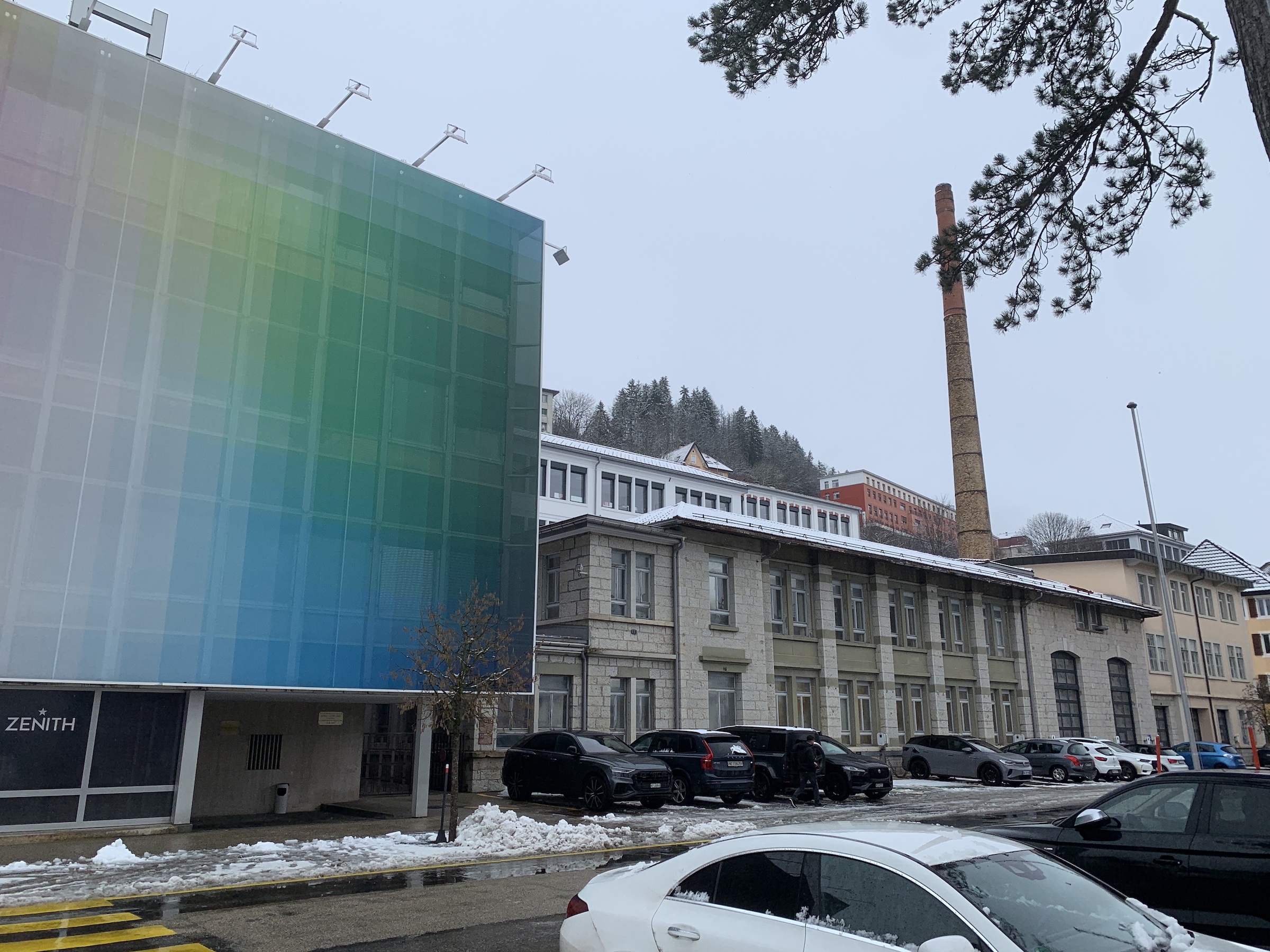
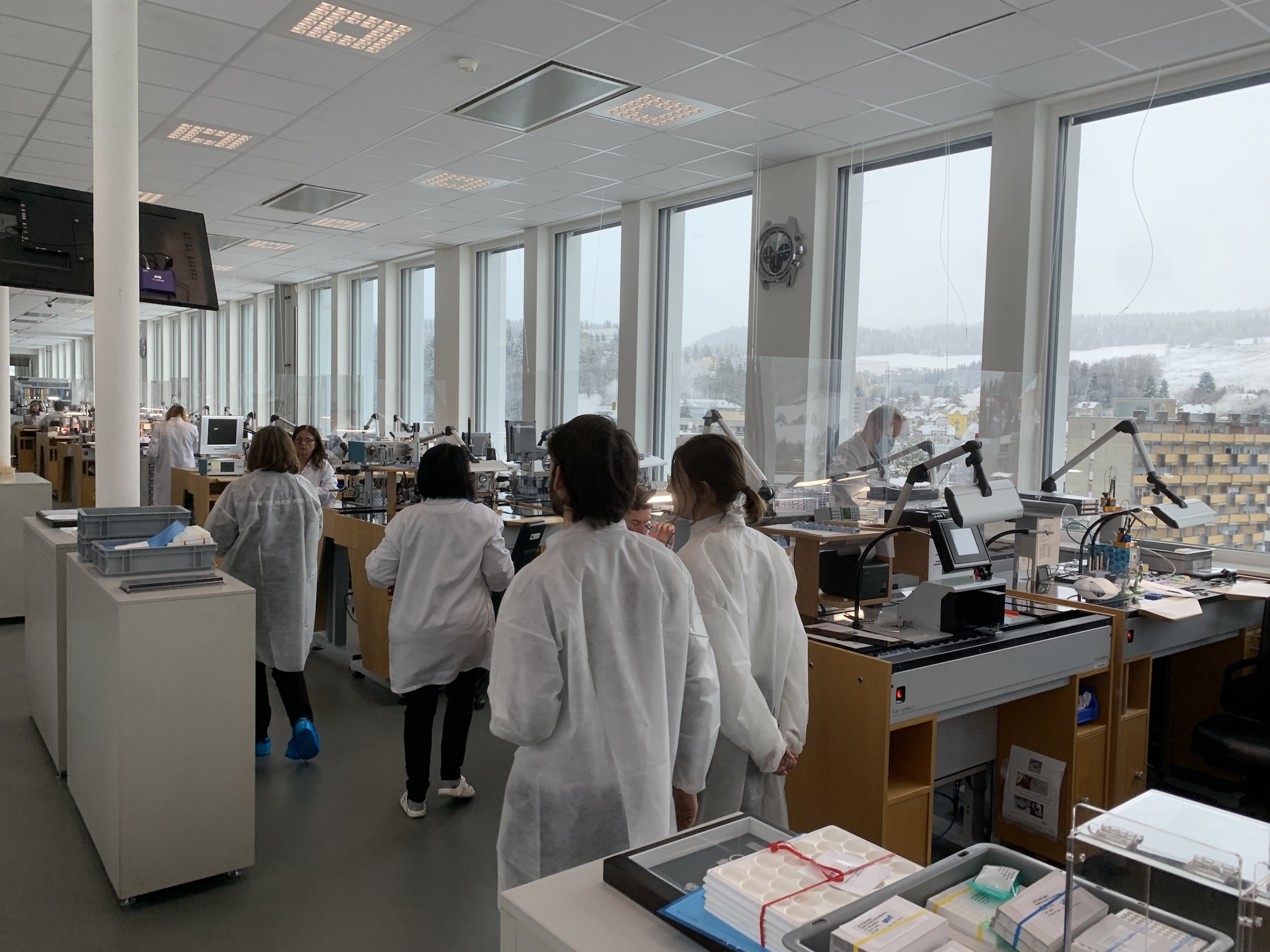
But why is LCdF/LL ⤴️UNESCO world heritage?
And why is it so exciting to visit them?
Well, one answer to the latter question are actually the cities itself, their urban planning (this is especially true for LCdF).
The other is the still staggering number of watchmaking companies and -suppliers.
Let’s have a look at the town(s) first.
To quote the UNESCO:
„Their planning and buildings reflect watchmakers’ need of rational organisation. Planned in the early 19th century, after extensive fires, the towns owed their existence to this single industry. Their layout along an open-ended scheme of parallel strips on which residential housing and workshops are intermingled reflects the needs of the local watchmaking culture that dates to the 17th century and is still alive today. The site presents outstanding examples of mono-industrial manufacturing-towns which are well preserved and still active.“
LCdF was first mentioned in 1350, and after Daniel Jean Richard brought watchmaking to LL, the economy grew in LCdF as well, first thanks to lace-making – and later watchmaking.
In 1794 a huge fire destroyed most of the village. After this, the town was rebuilt over the years by different urban planners (the most important one possibly Charles-Henri Junod in 1835) following a common idea: prevent fires and make the town ideal for watchmaking!
As a result, the city was laid out like a chessboard, with wide streets and houses limited in height. On the one hand, this prevented the fire from spreading, and on the other hand it ensured that the workshops were always well lit with (sun-)light.
Also this layout supports the requirements for the logistics of the division of labour of the watch industry (as well as for the fire brigade). The short distances still are an economic factor of this industry here.

But besides fire protection and optimal labour conditions, there were also secondary advantages of this urban architecture. The clearing of snow in winter (LCdF is located at about 1,000 m above sea level!) was supported and the city could be laid out with modern and socially progressive residential buildings (for the time) with kitchen gardens for example.
A big difference to other industries becomes clear when you look at some of the factory buildings: while elsewhere the «patron» lived outside because his production was «dirty», this was not necessary in watchmaking. The owners lived in their villa right next to/in the factory building, which resulted in an unusually strong social mix. And so even today, beautiful «art nouveau» villas are located next to tenement buildings.

⤴️Art nouveau is a further characteristic of LCdF. While the city prospered in the 19th century it was brought to La Chaux-de-Fonds under the influence of watch-making patrons and their trade representatives. If you walk around LCdF with open eyes (or if you book ⤴️the guided tour the city offers) you can see art nouveau everywhere across the town.
You can’t talk about LCdF, architecture, design and art nouveau without mentioning ⤴️Le Corbusier. Born as Charles-Édouard Jeanneret-Gris (I would also give myself a pseudonym if that was my name;-)) in LCdF, Le Corbusier became one of the most influential architects of the 20th century. While 17 of his buildings around the world are now listed as UNESCO world heritage, two of his early œevres are located in LCdF:
the house he built for his parents, the ⤴️«Maison Blanche» (which is a public museum today) and the ⤴️«Villa Schwob» (or «Villa Turque») which was built for a watchmaker in the early years of the 20th century and is owned by Ebel these days.
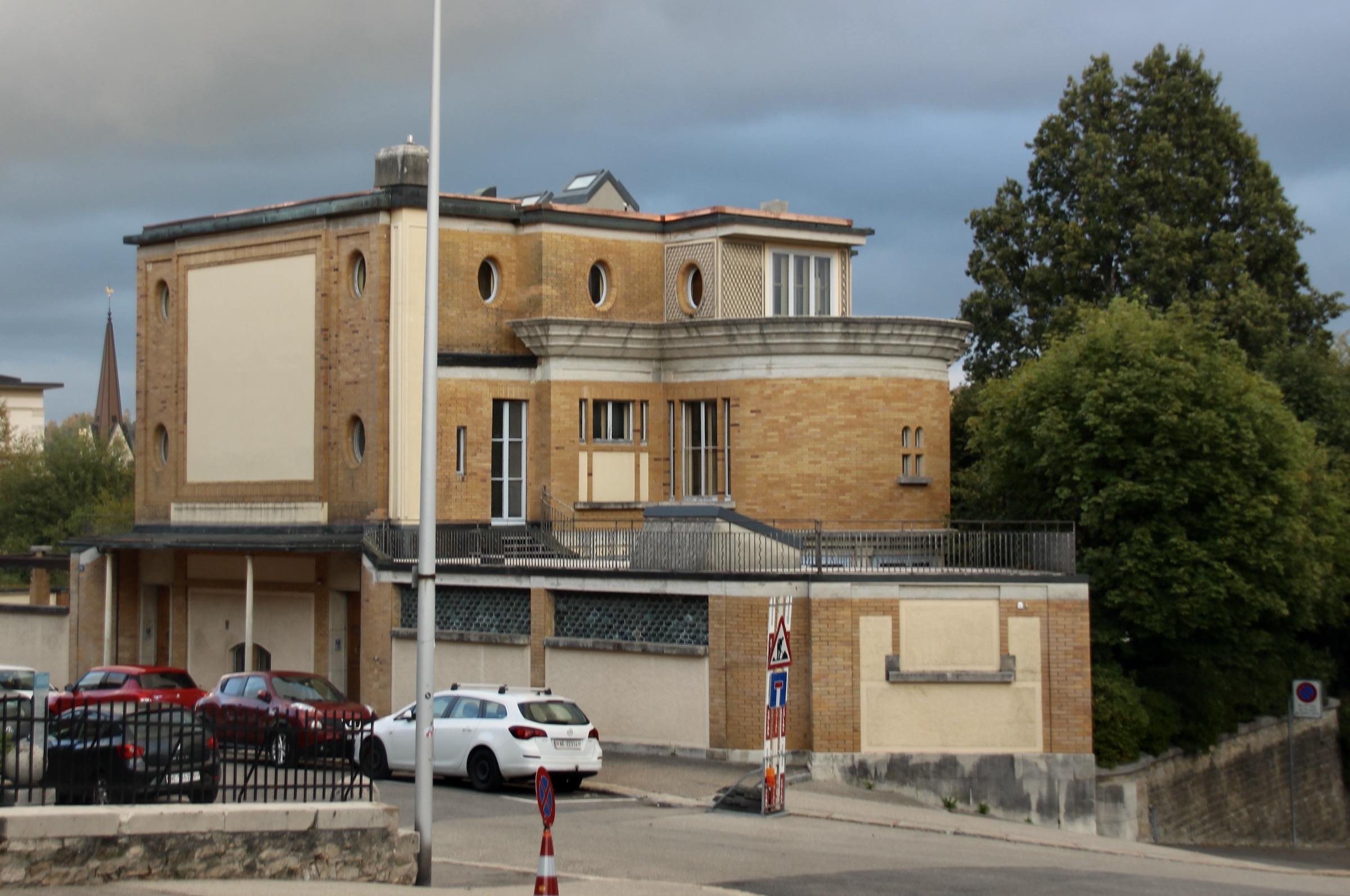
And just to be complete: ⤴️Louis Chevrolet, race car driver („The dare devil Frenchman“ (sic!)) and founder of the «Chevrolet Motor Car Company») was born in LCdF, too.

LCdF was also home to a significant jewish society. Towards the end of the 19th century the jews from across the border started as peddlers and cattle traders in the near Switzerland and began to migrate as traders for metals and precious stones the watch industry needed.
Relative famous examples of the success of jewish families later on are Théodore und Joseph Schwob who first financed and later owned Tavannes watch and the Ditisheim family, known mainly for Vulcain watches.
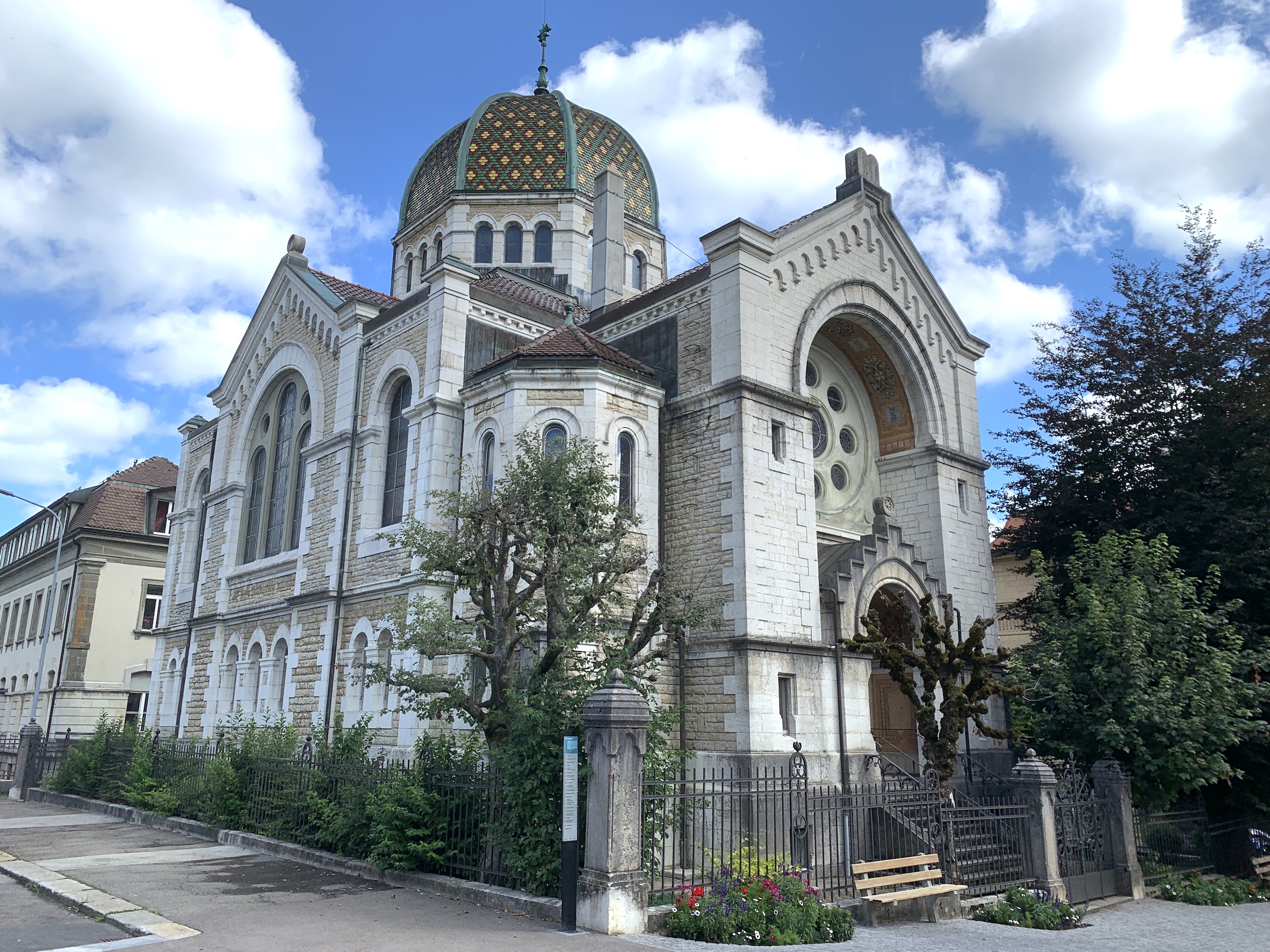
While of course the quartz crisis did also hit the LCdF region hard, there still is a vast amount of watch brands and suppliers based in LCdF/LL.
Actually in the last couple of years, quite a lot new manufactures have been established, moved and/or extended in LCdF/LL, i. e. the Cartier factory in 2001, Breitling in 2002, Sellita’s extension in 2014 or the new plant of Audemars Piguet (which did win a ⤴️«German Design Award 2023») in 2021.
So currently it seems that the region is really kind of growing. Having said this, it is apparent, that most of he (new) factories are build in typical commercial areas and not in the historical town.
So while e. g. Girard-Perregaux or Eberhard are still in the city of LCdF and Nivarox or Ulysse Nardin in LL respectively, the partly spectacular new plants are «outside the city gates».
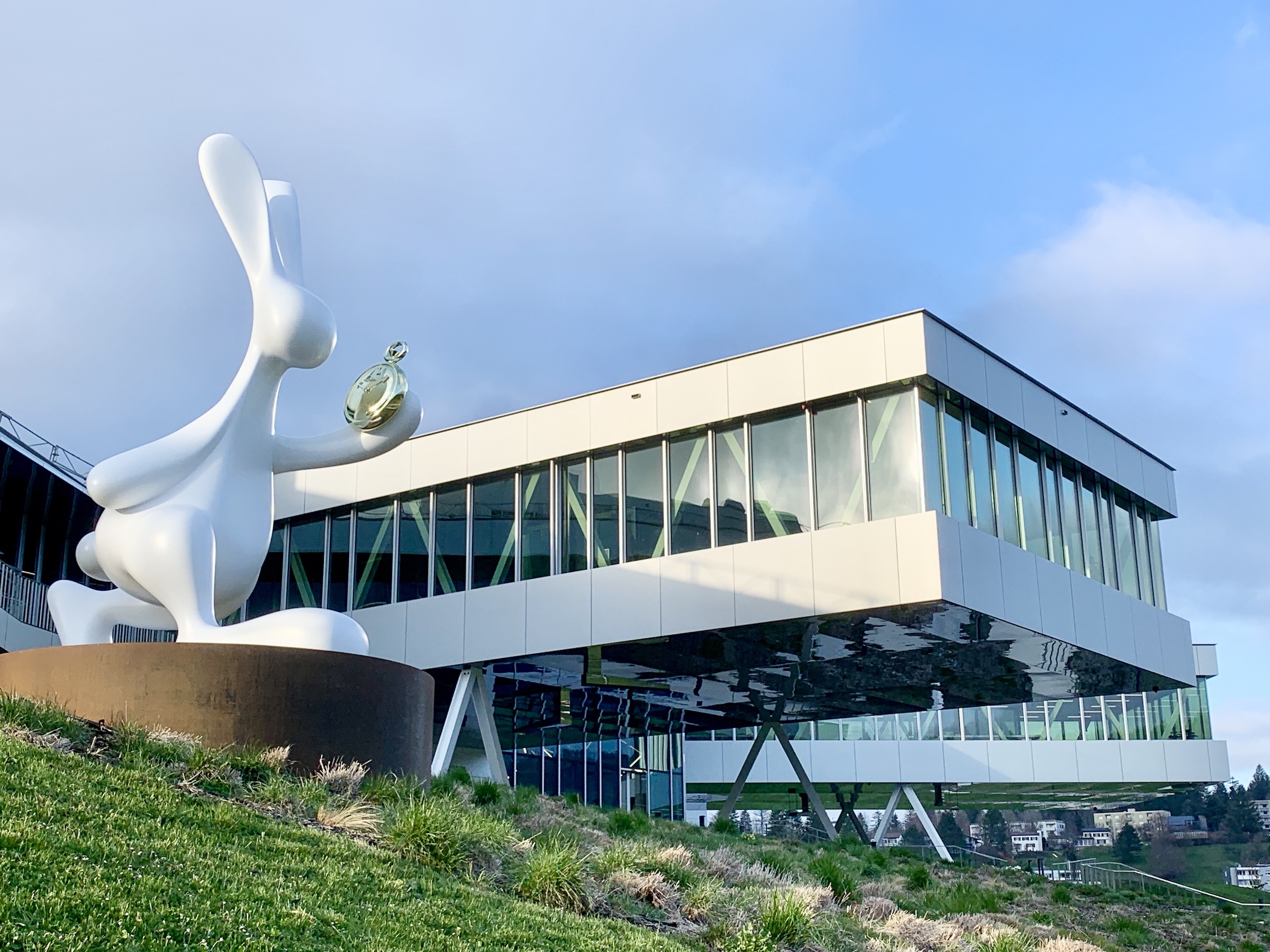
One mandatory thing on every visitor’s list are the horological museums of LL and LCdF.
The relatively small but absolutely worth seeing ⤴️museum in LL is located outside the town uphill in a nice small Château (I took the car, this is quite a walk!). It boasts amongst others a large selection of «pendules-neuchateloises» and automata and integrates the historical rooms into the exhibition.
Quite different the ⤴️«Musée international d’horlogerie» (the MIH) in LCdF: built in the early 1970s it is a construction based on exposed concrete (which reminds me, not being an architect, a bit of «brutalism» and/or Le Courbusier …) and is completely underground!
The latter was chosen for space, but also for safety reasons. The museum itself is very spacious though and is host of the most important horological exhibitions worldwide. (Imho there are two must museums for watch freaks, the Patek Philippe Museum in Geneva and the MIH).
The MIH also was some 13 years the domain of one of the most influential watchmakers of or time, ⤴️Dr. Ludwig Oechslin: the MIH is actually not only engaged in acquiring and exhibiting, but also very much in conserving and researching.
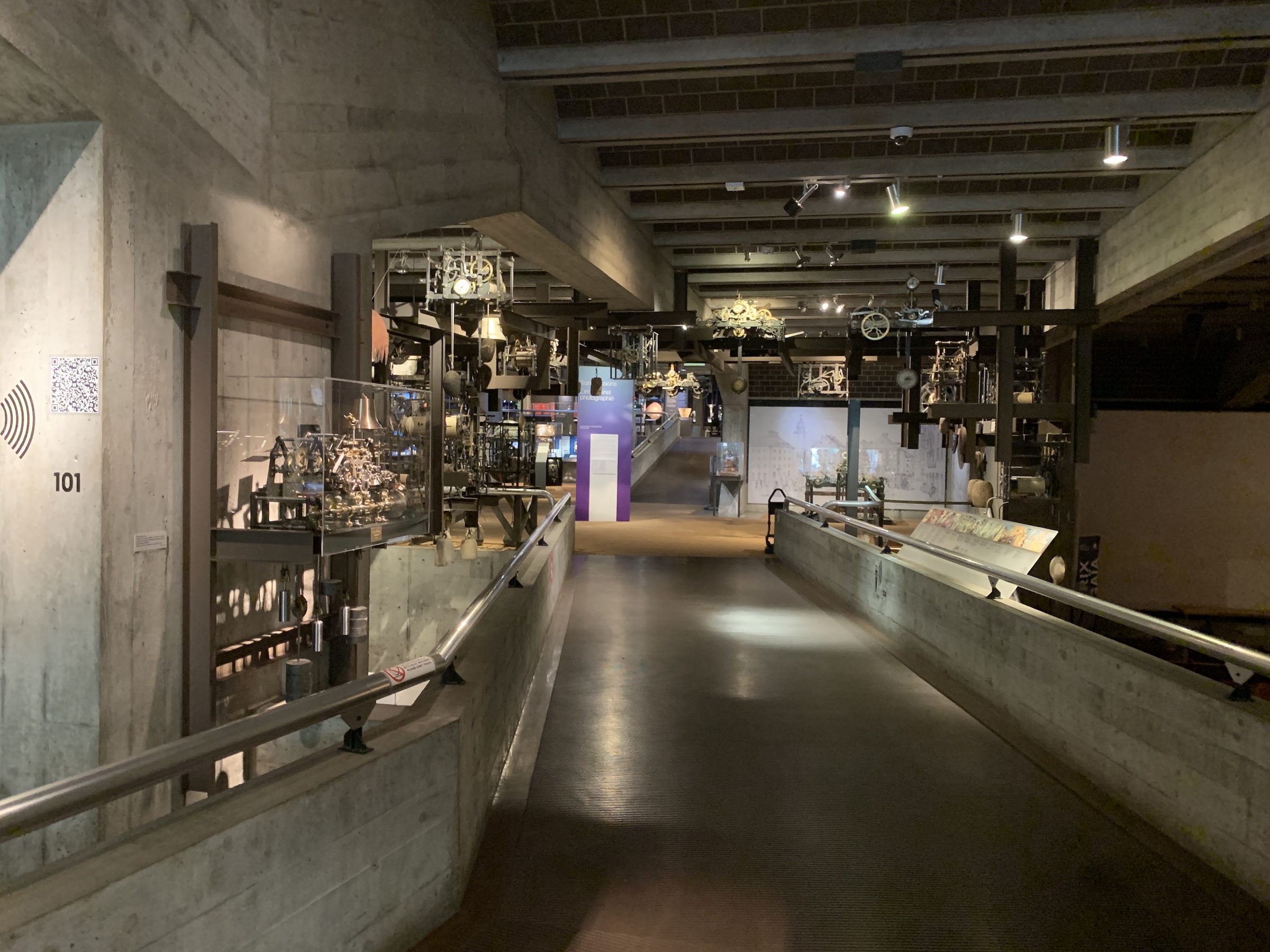
Before we have a look at the actual meaning of the article, the pictures, please allow me one further personal note: I love a decent cup of coffee. And generally I like the way the «strong but mild» way the Swiss make their coffee more than from any other area. But in LCdF you even get coffee from he local roastery «La Semeuse».
And since LDcF is one of the highest cities in Europe, the roasting takes place at an altitude of about 1,000 m which allows the beans to develop at a temperature that does not affect the essential aromas and flavours.
So if you ever get to La Chaux-de-Fonds (which I hope you will want now), don’t forget to a) have a proper coffee at your hotel and b) take some warm clothes with you!
To kind of summarise the above I take the bet, that if you visit LCdF/LL you will inevitably experience the spirit of cooperation between brands, suppliers, consultants and subcontractors, the power of availability of skilled workforce and education and the historical significance that this area offers.
However, especially in the larger LCdF – I found LL to be not only smaller but with less of the negative aspects larger towns usually face – you will find quite some areas, which show, that there have been better times.
Don’t expect towns like Zürich, Luzern or Geneva! You will not find lots of hip bars or other examples of «lifestyle». In this respect it reminded me a bit of the – much, much smaller – town of Glashütte. No annoying traffic or any kind of hectic. Remember, that, compared to other industries, the average watch brand could well store their entire yearly production in the boot of an estate car …
But my impression is, that – while not course not all that glitters is gold here, too – both LCdF and LL are very liveable cities which have managed the hard times very well and are in an upswing.
If you like the sometimes rough charm of industrial areas, have an eye for the smaller things and you love watches … then you will definitely love a trip to this area (and maybe dream of just staying there like I do … 😁 ).
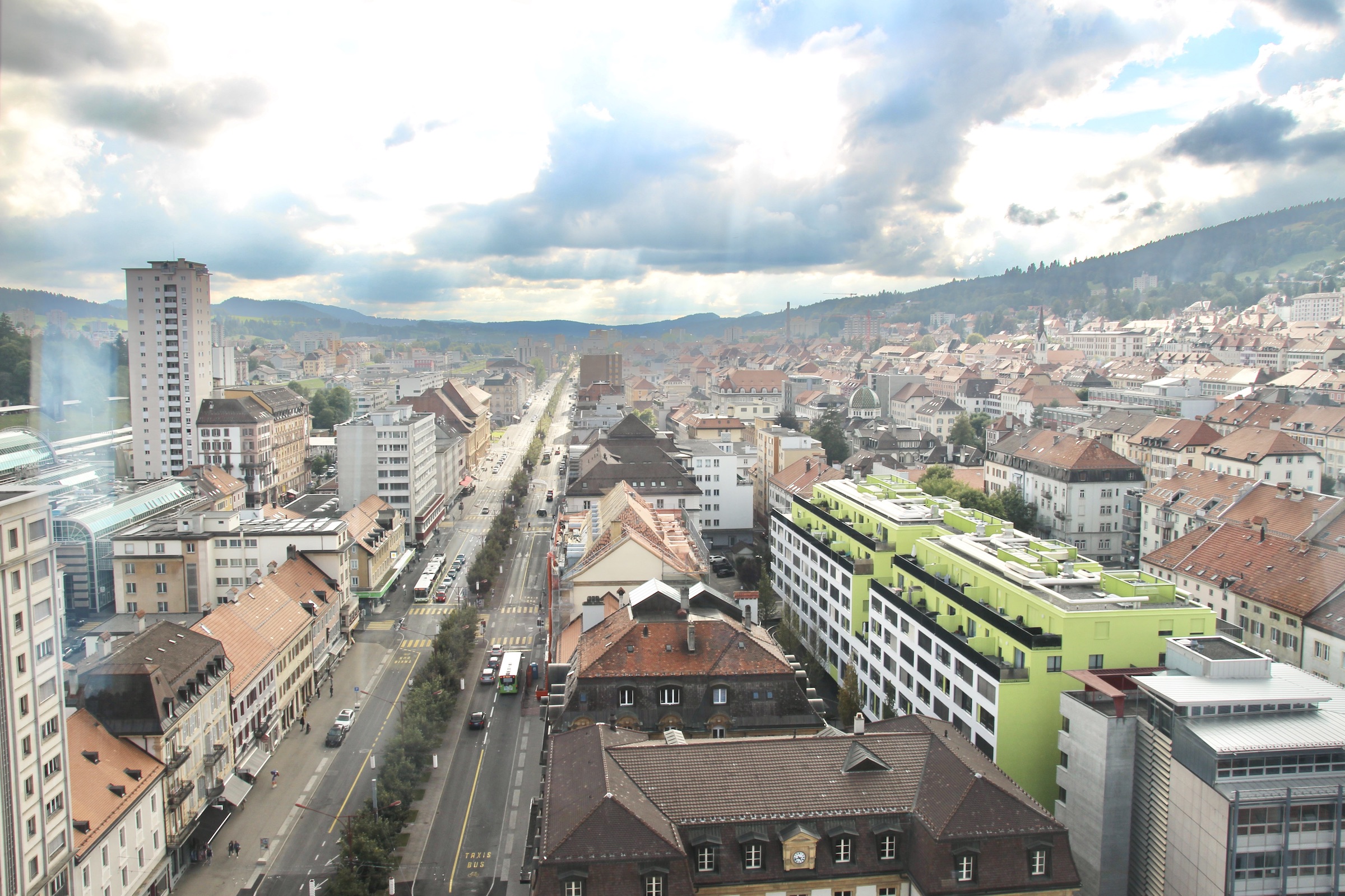
And now: more pictures!
Please note that the pictures are all not of professional quality. While this is mainly due to my photographic abilities (and the weather) I could argue, that it makes the whole thing more authentic.
When you approach LCdF from the east (travelling by car from Biel/Bienne via ⤴️St. Imier), this is the first you see of the city:
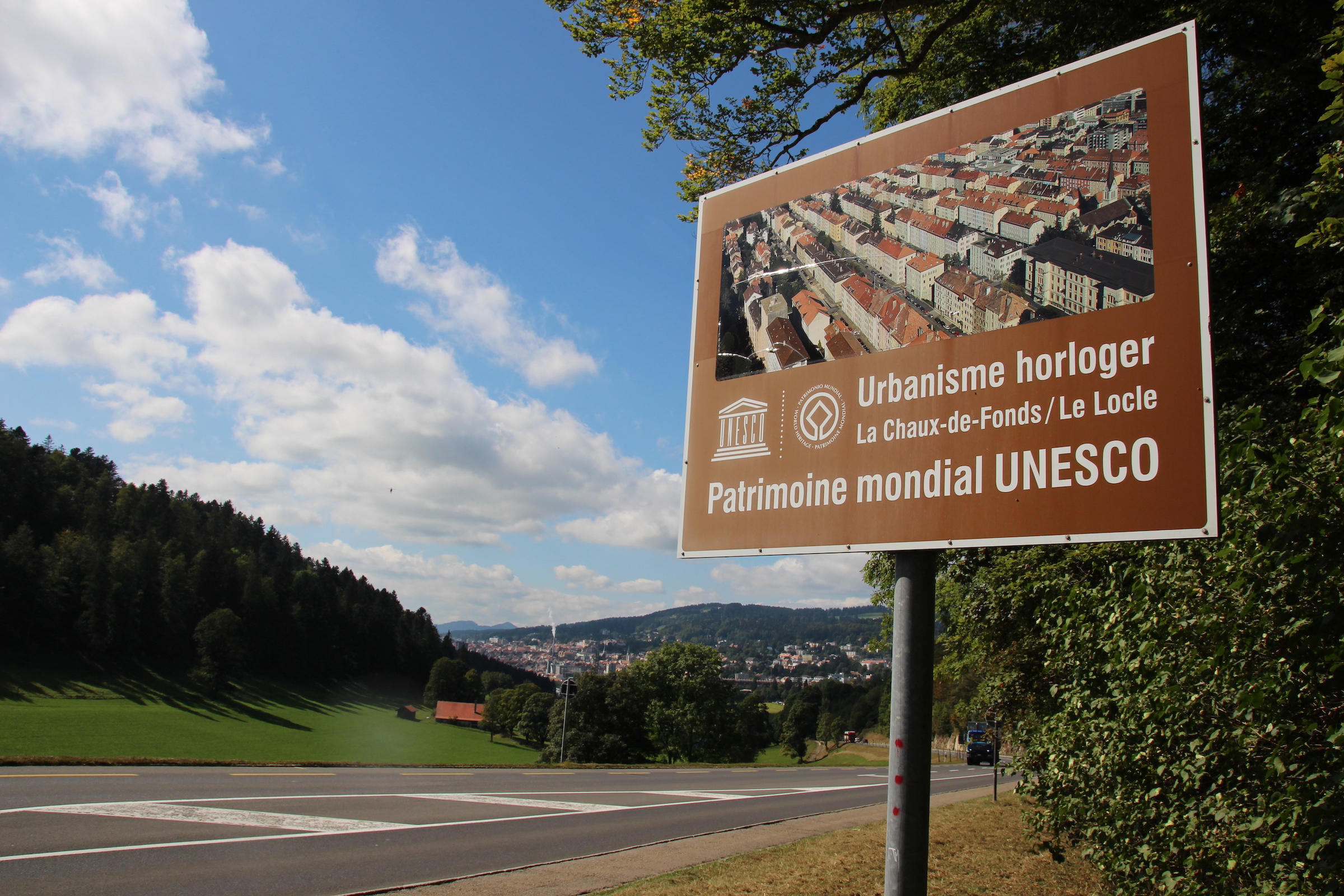
Alternatively, to get an overview, you climb on the Espacité tower (it’s free although it’s in Switzerland😀) and have a look yourself:
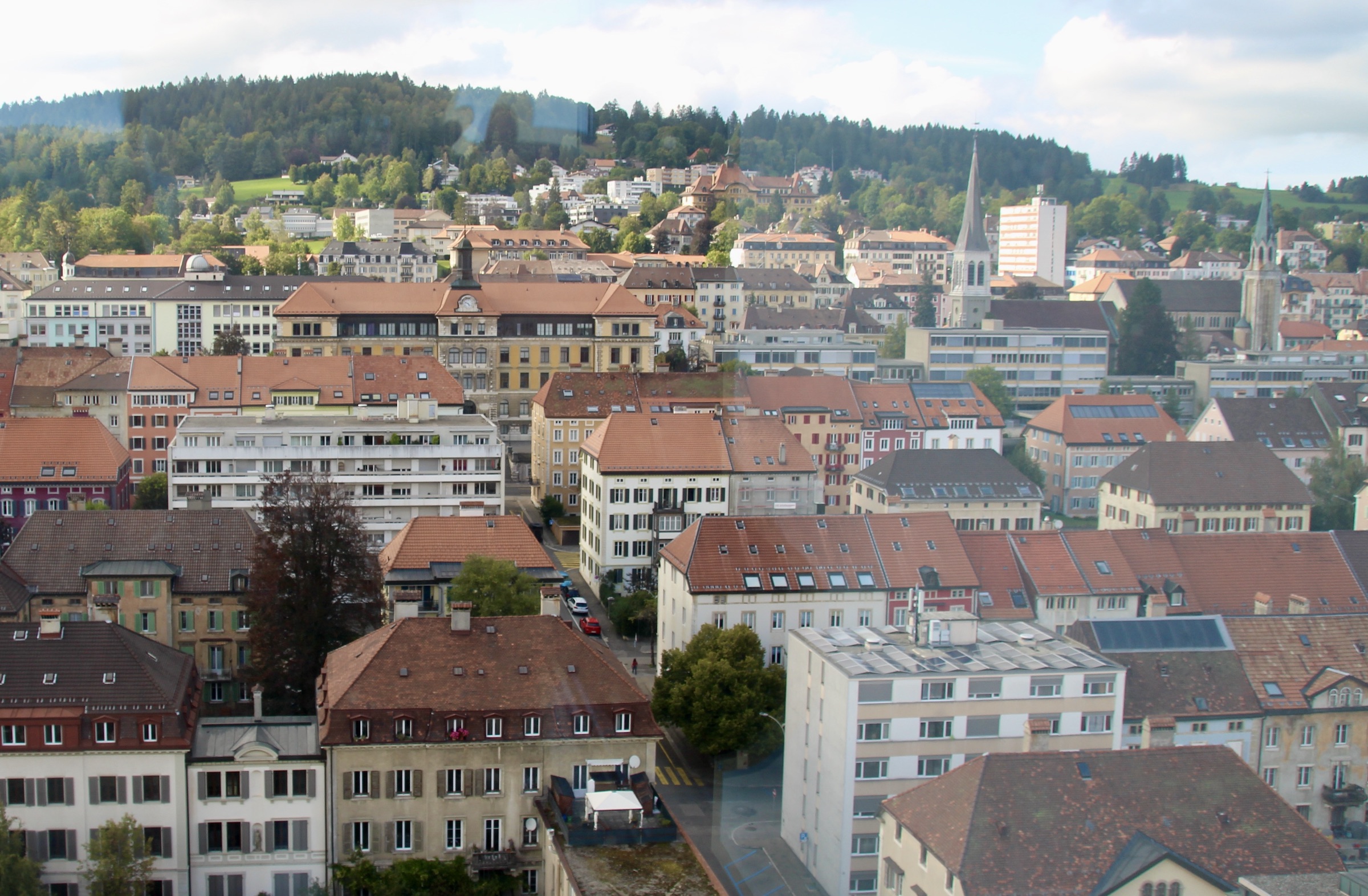
Down in the streets then, you see the spacious roads and the modern – for the time – architecture.


This famous curved house is one of the famous examples:

You will find art nouveau spread across the city in «normal» apartment houses, as well as in the a. m. villas.


This is even more apparent, when you have the opportunity to get inside those buildings:
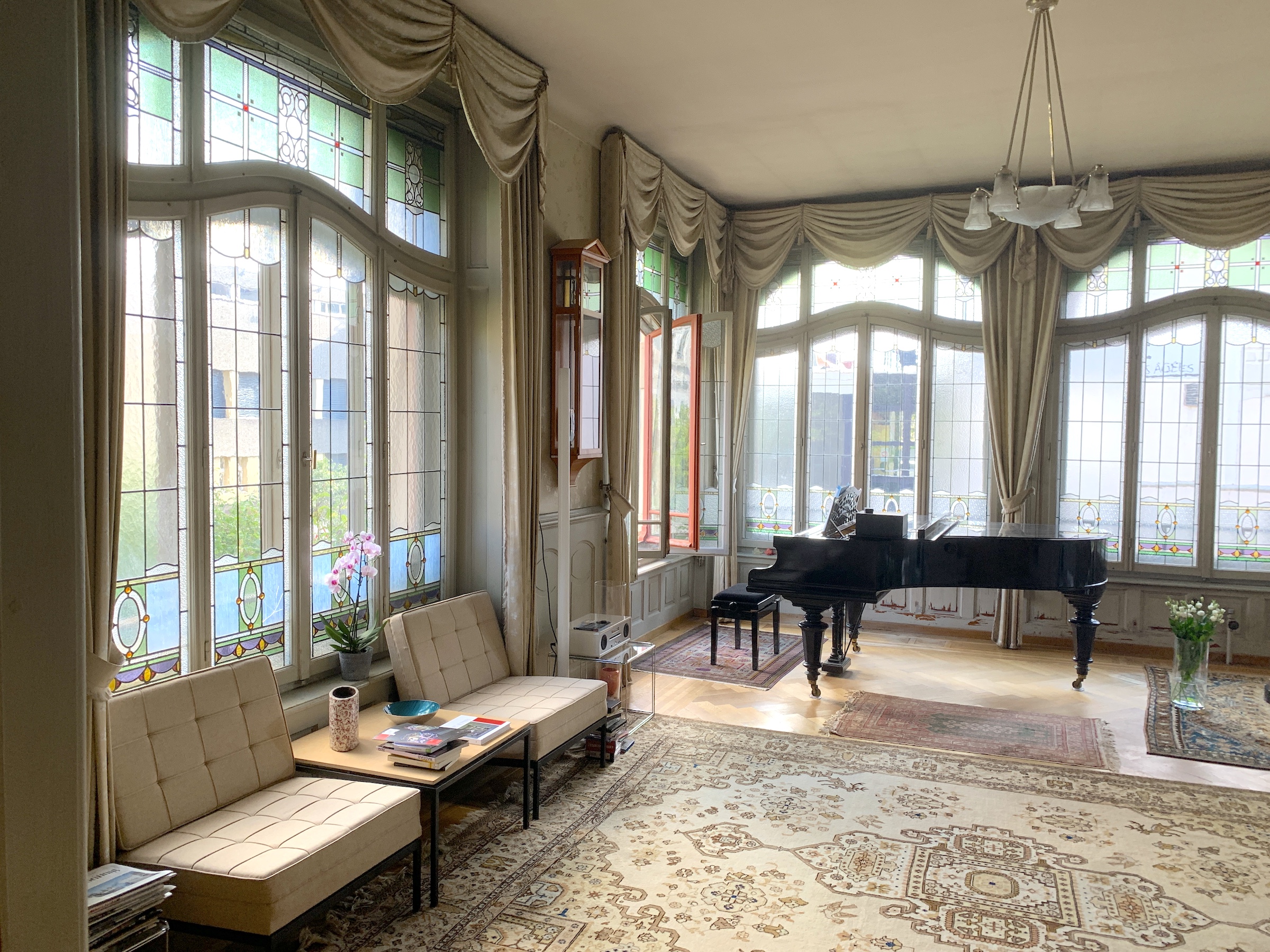
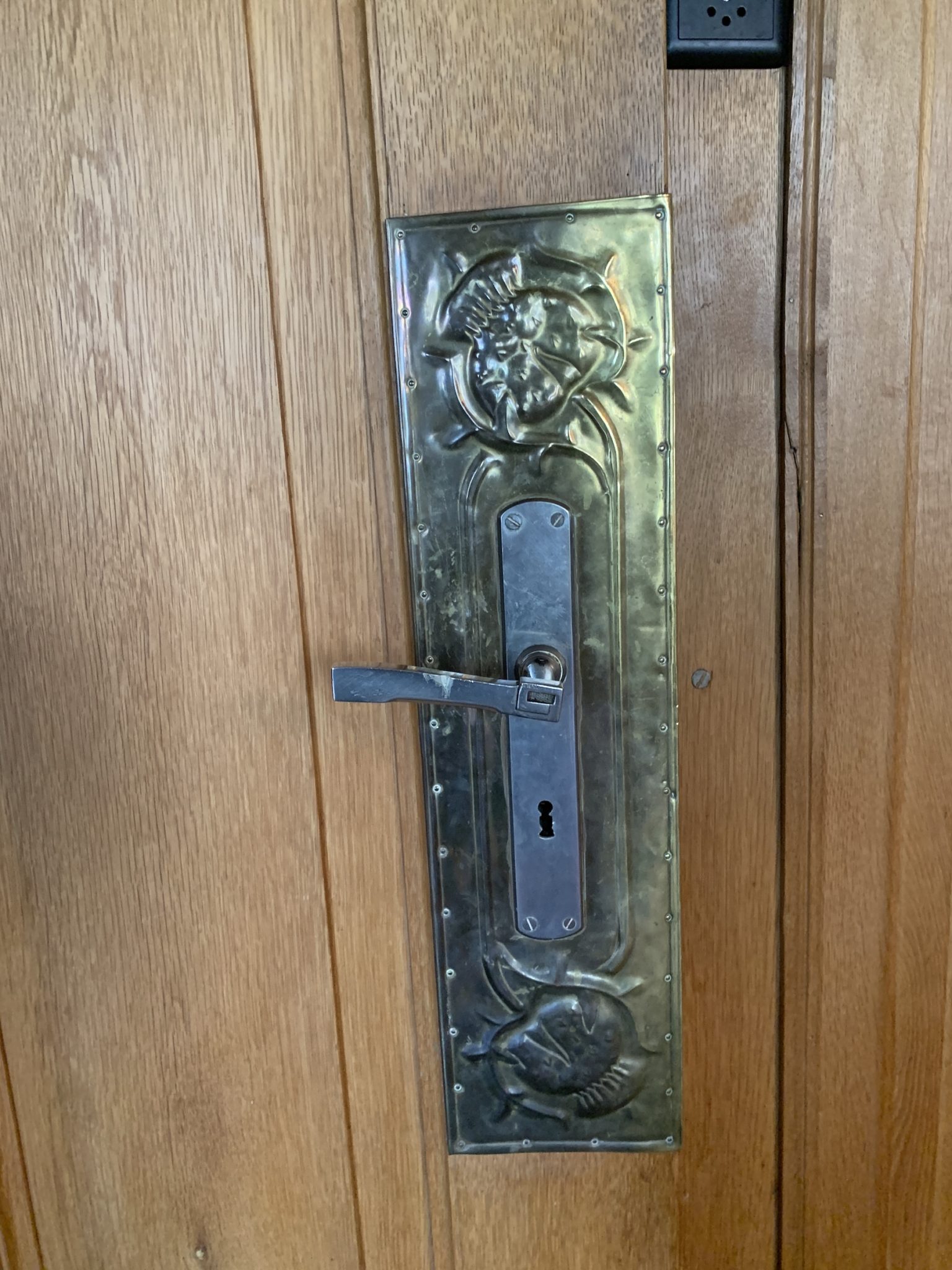
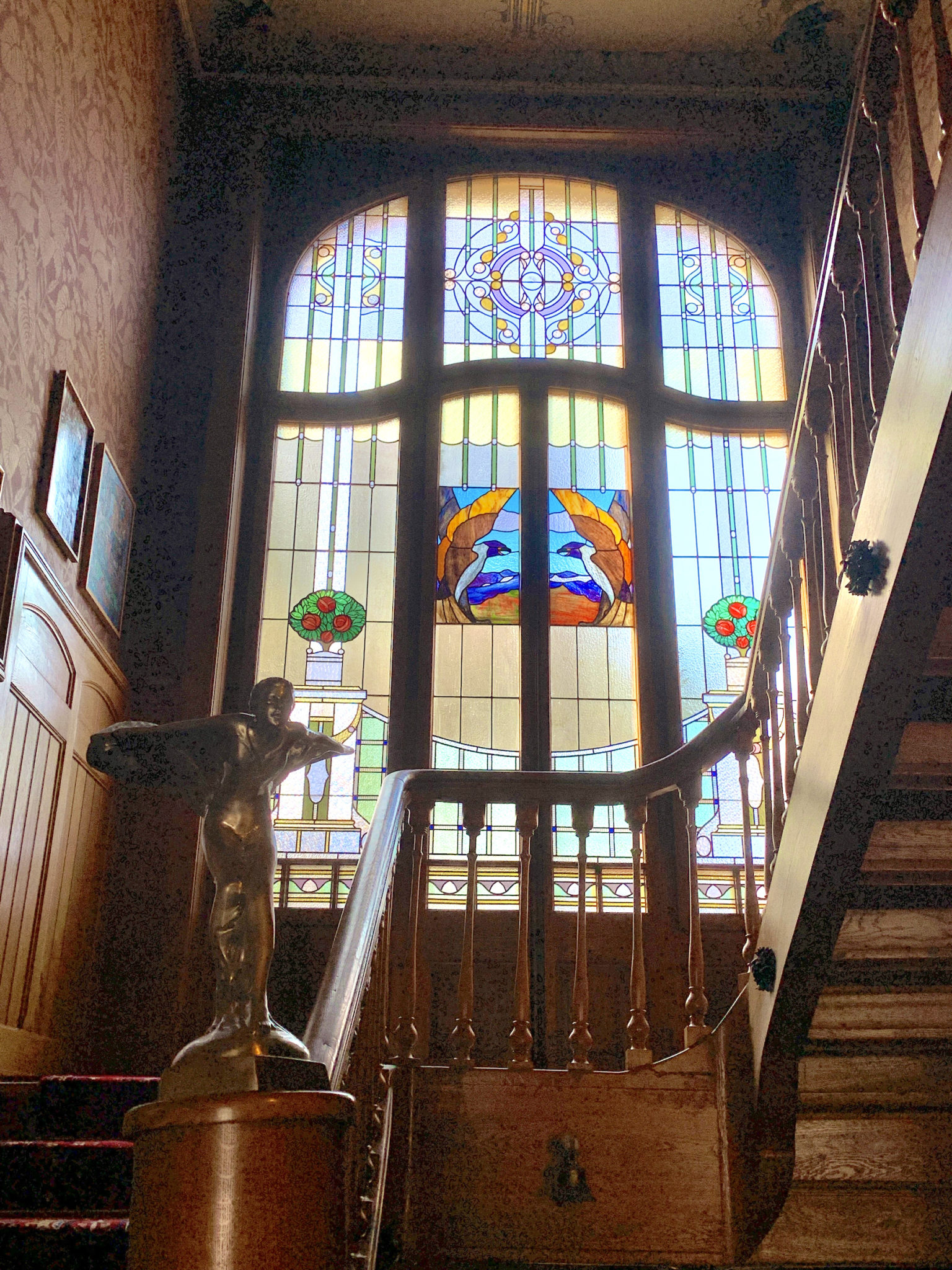
The Maison Blanche and the Villa Schwob (pictured above) are the two testimonies of Le Corbusier’s work:
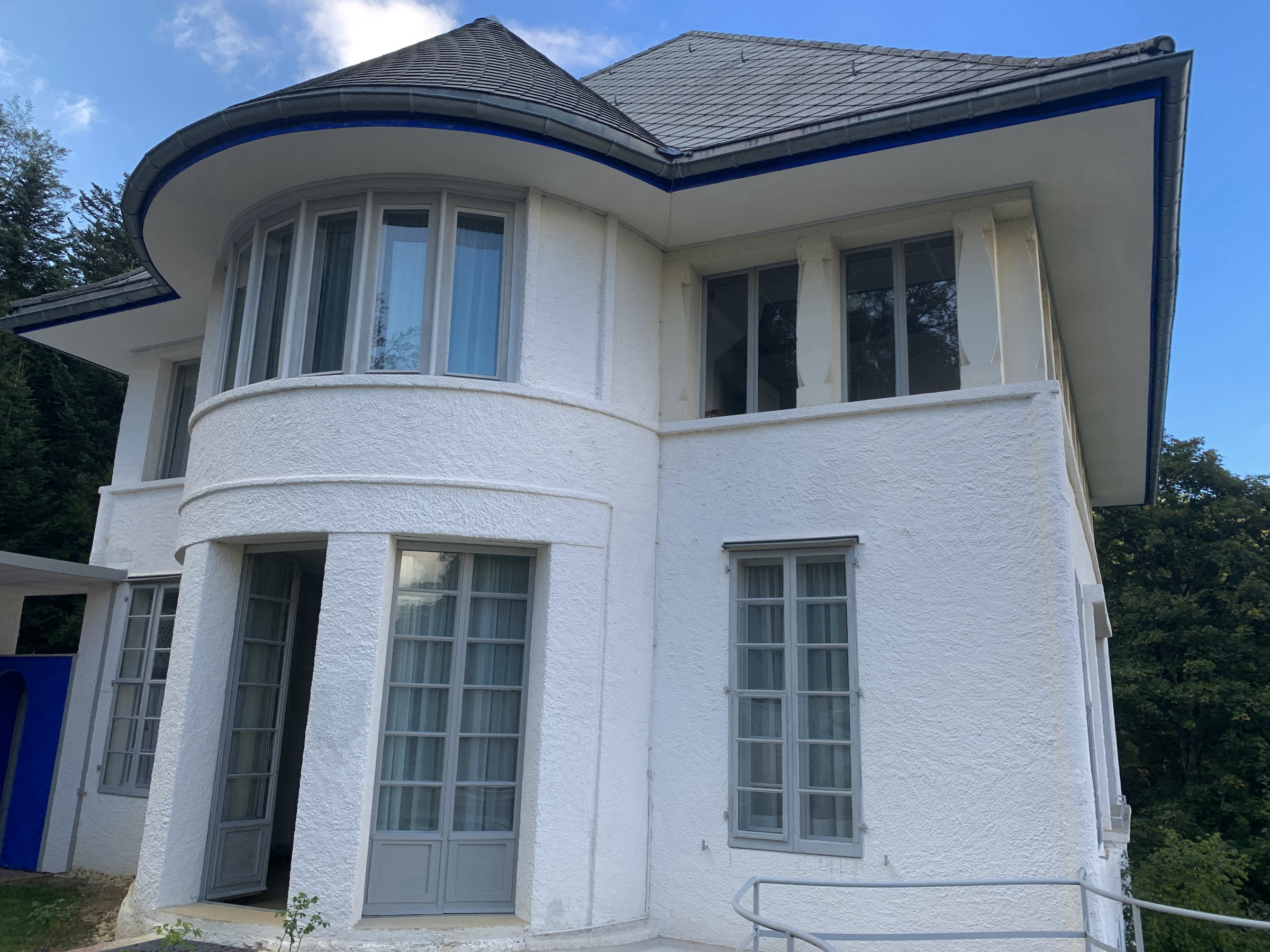
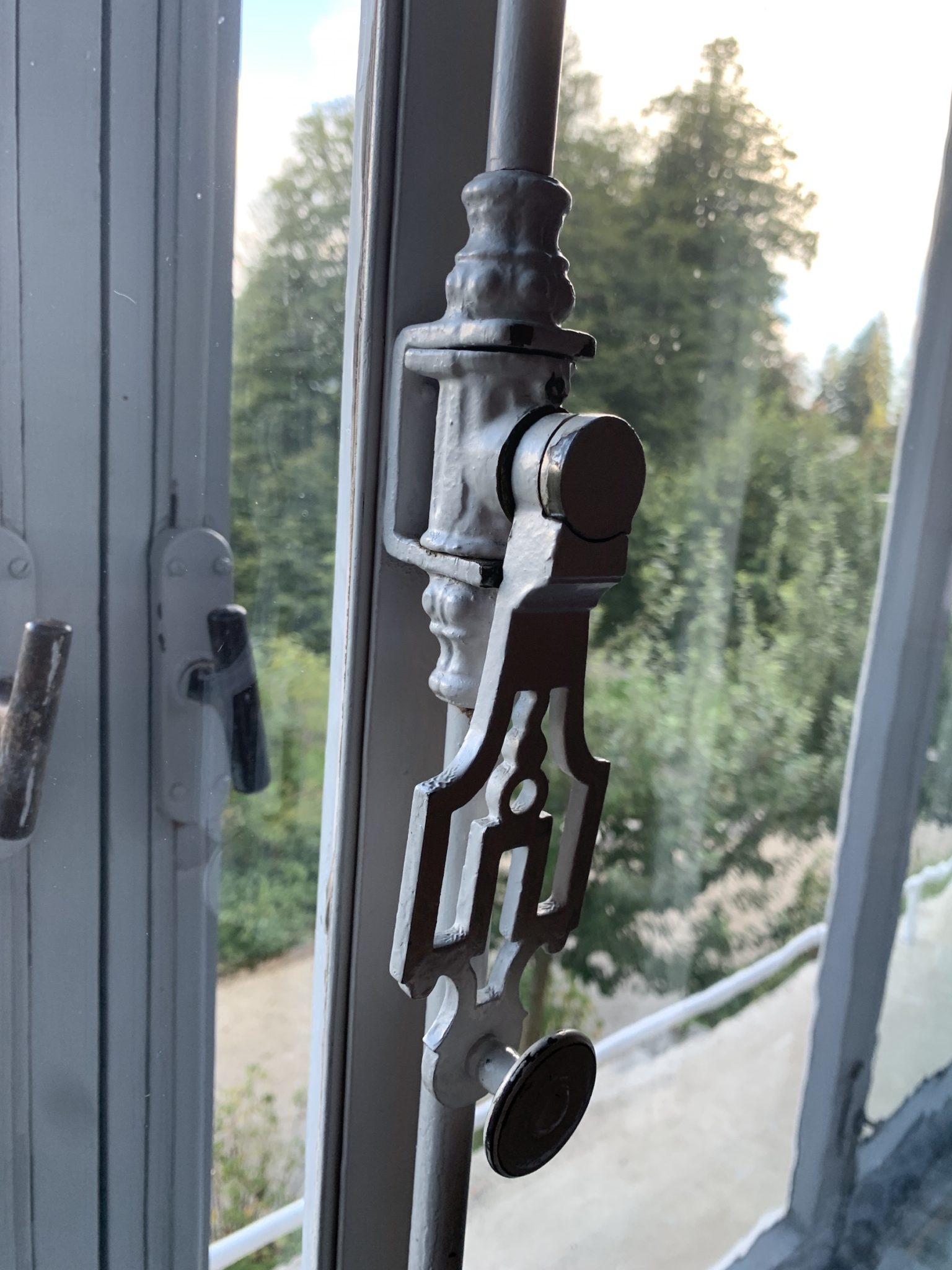
What I personally like, is that the sometimes decaying walls are embellished by graffiti. The first picture was taken in LCdF, the next three in LL:
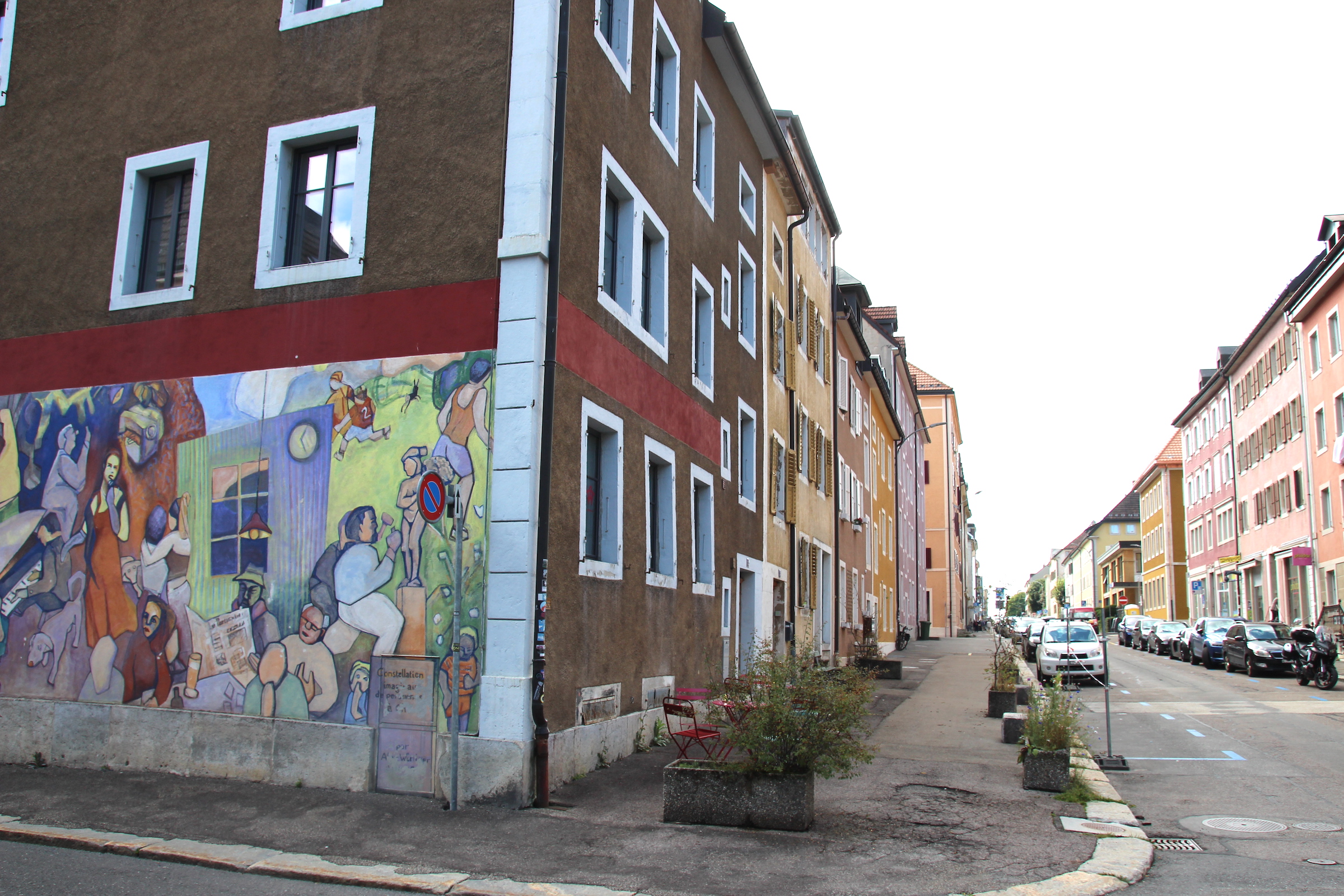
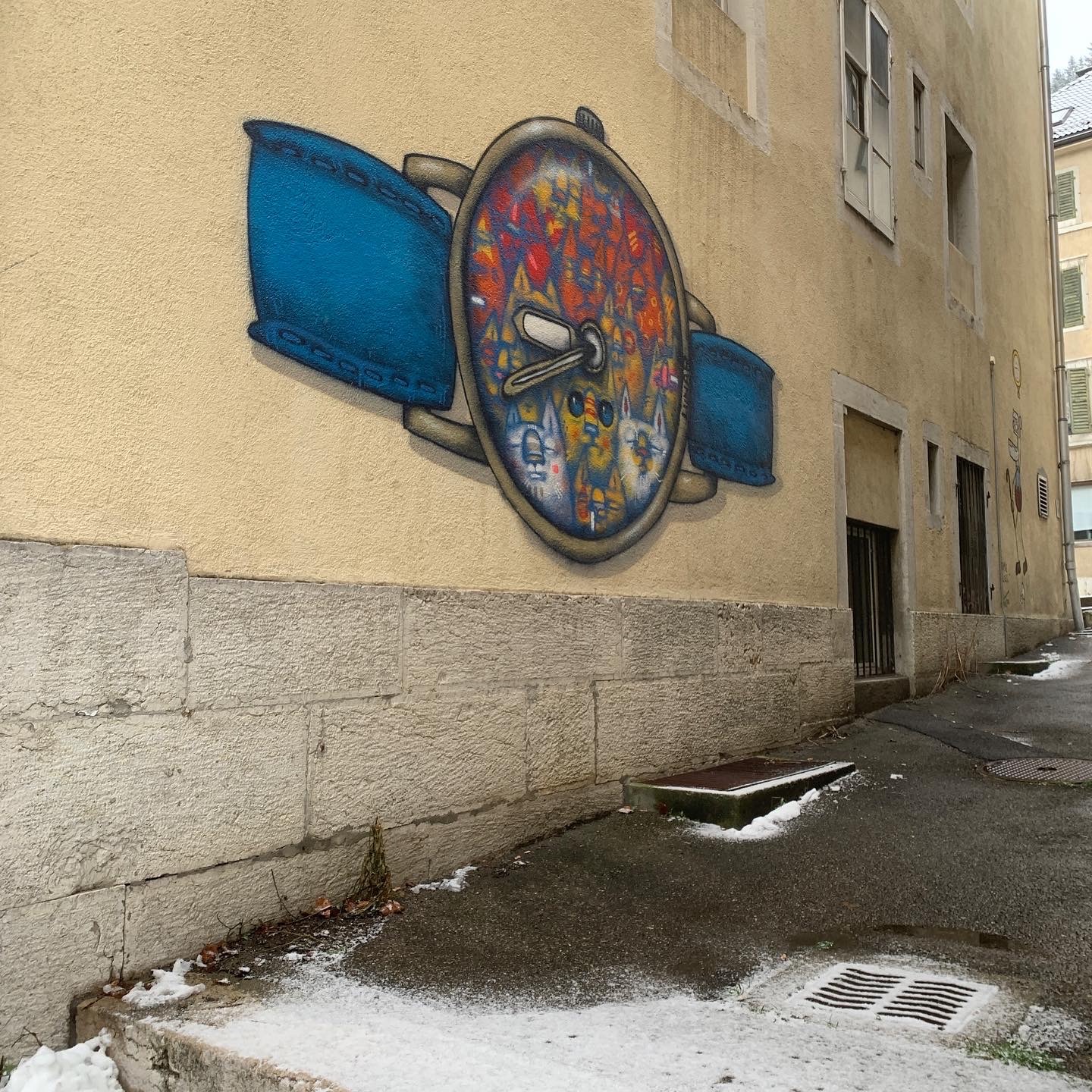
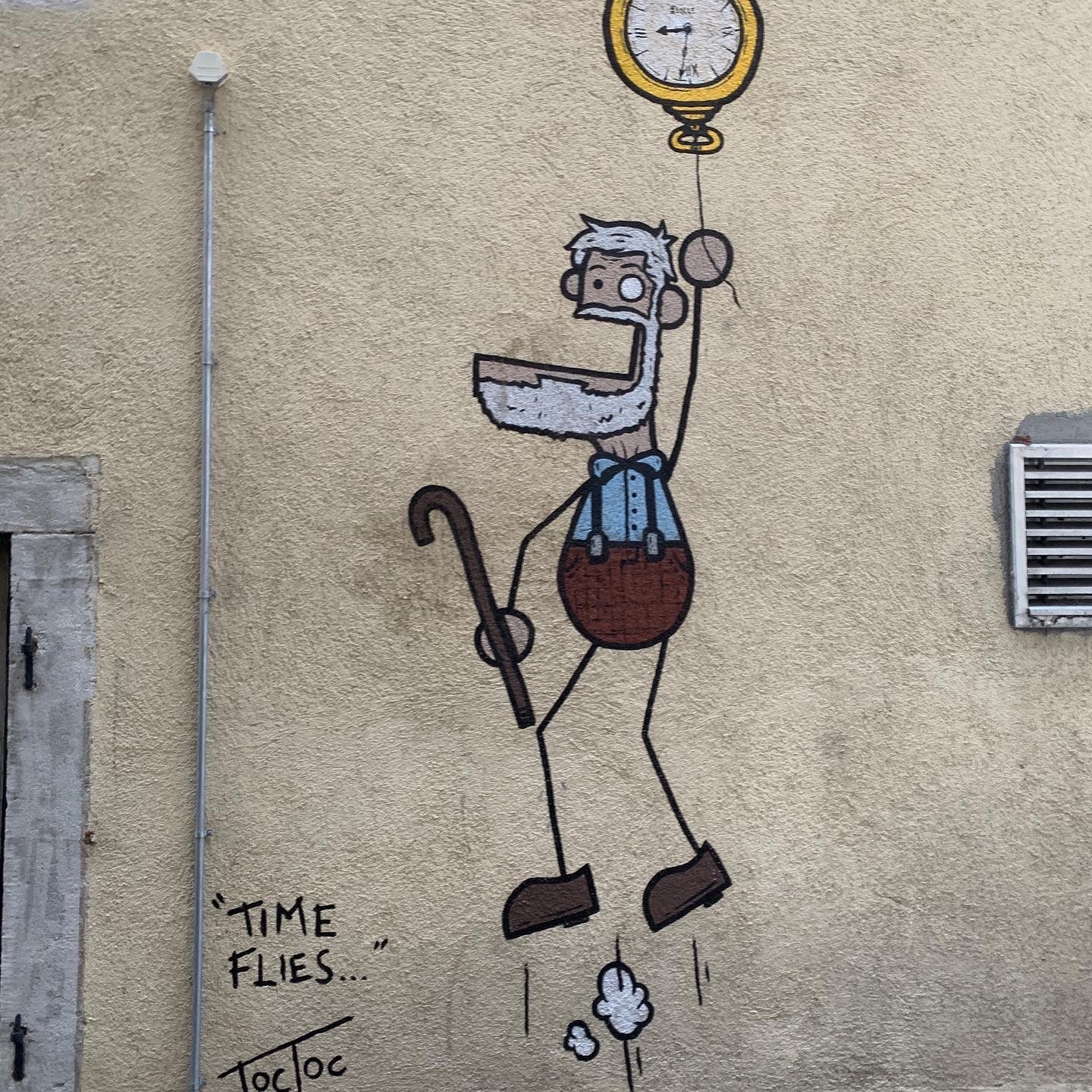
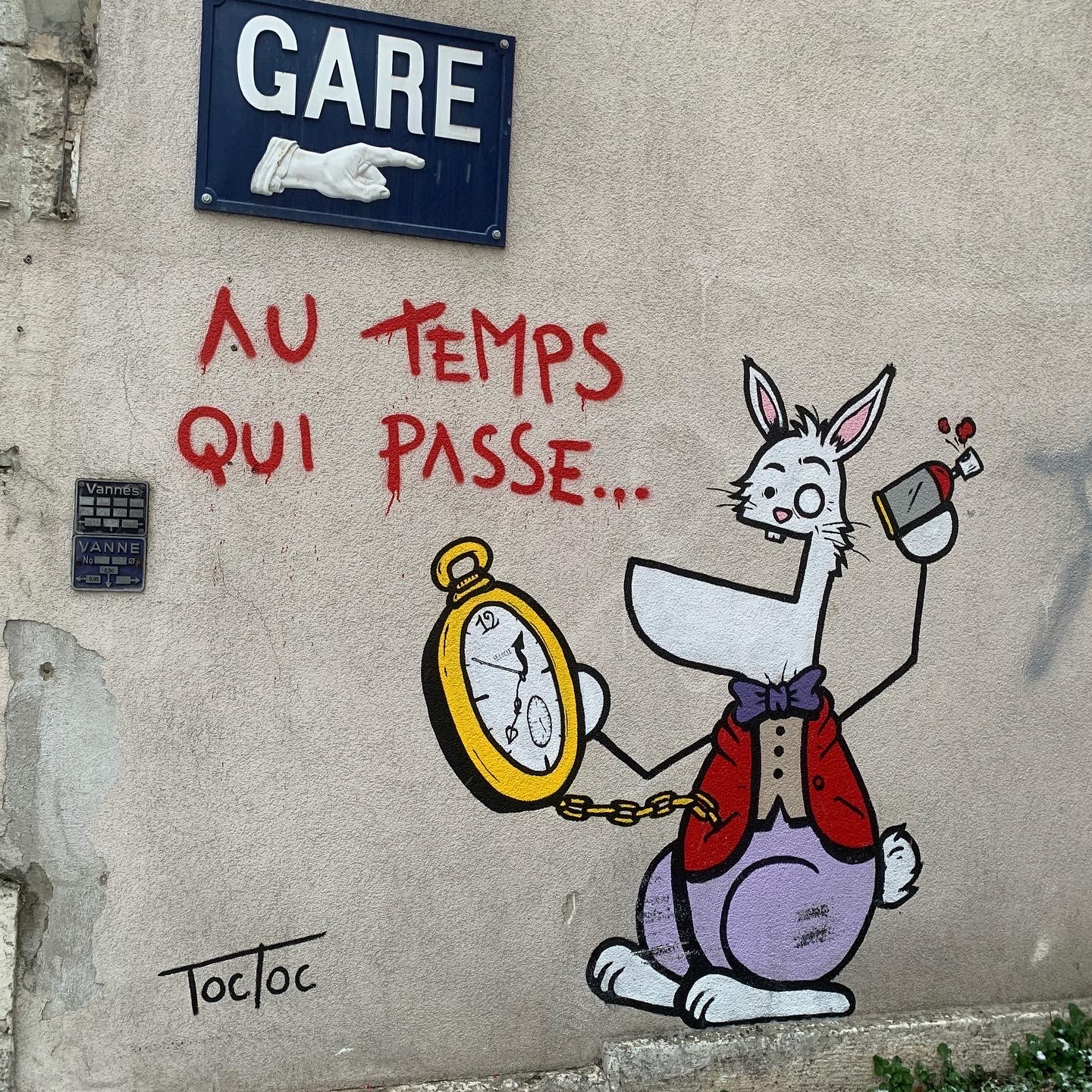
Talking about decaying: it is part of honest reporting to show photos of the spots that are otherwise not in the limelight.
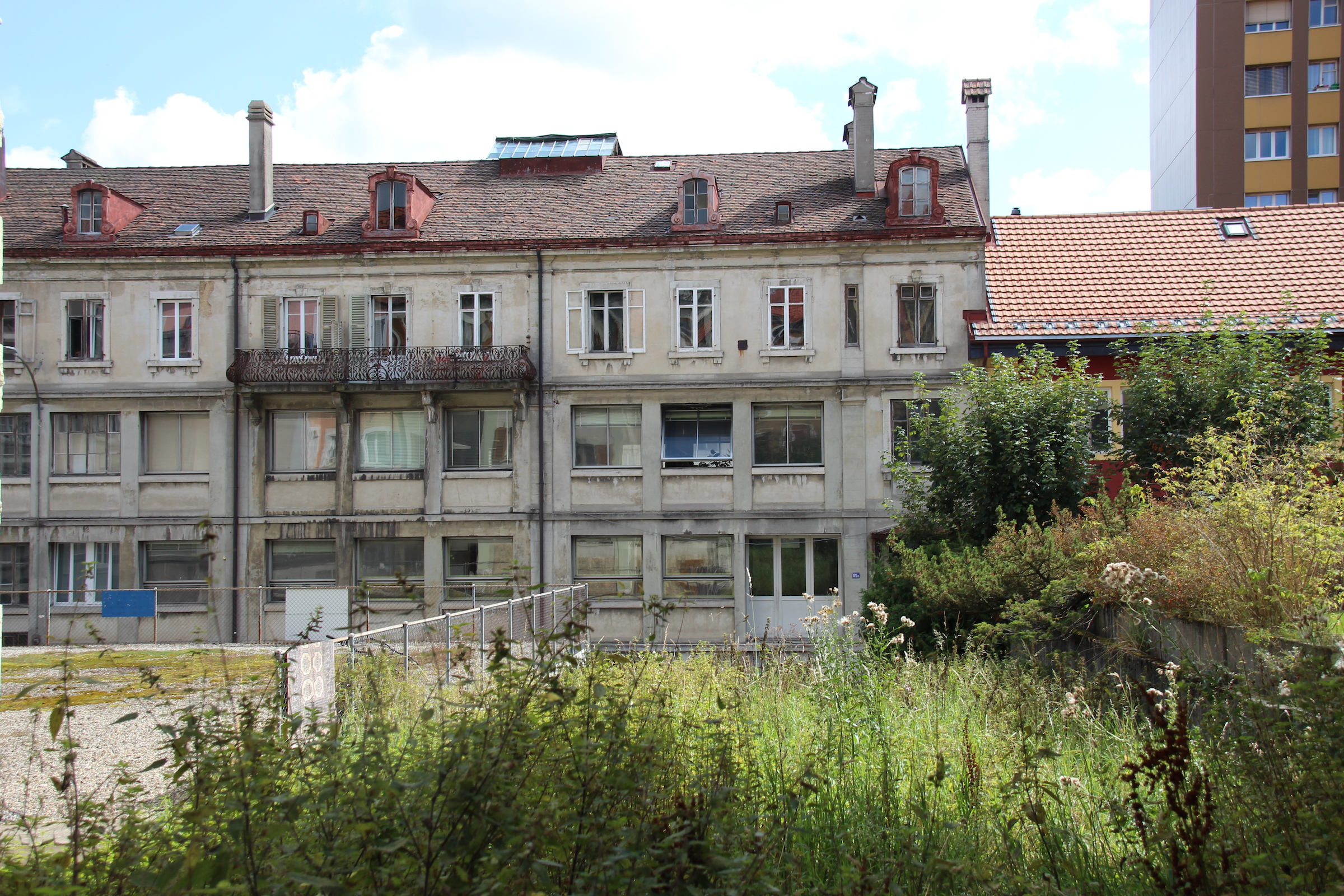
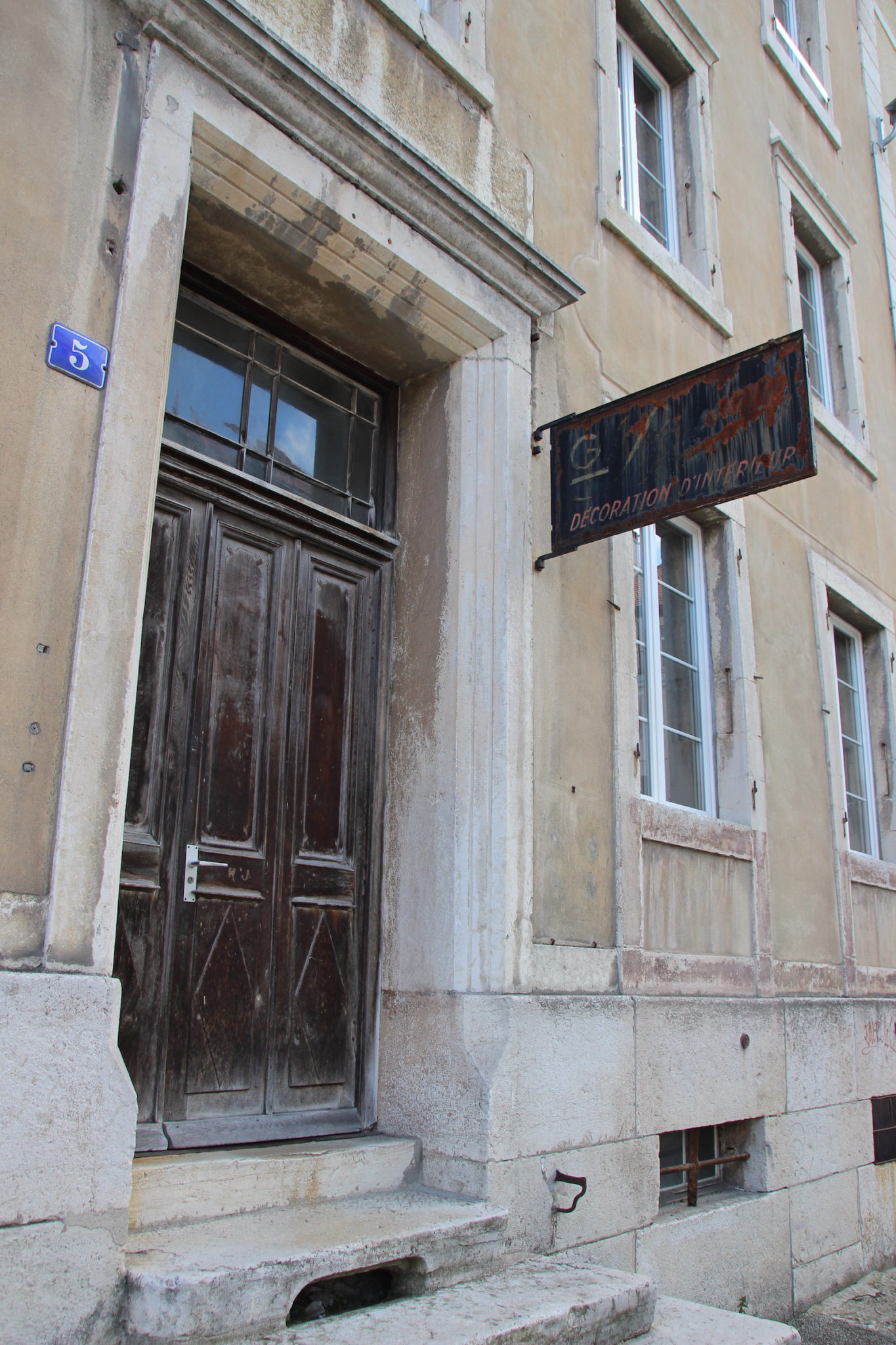
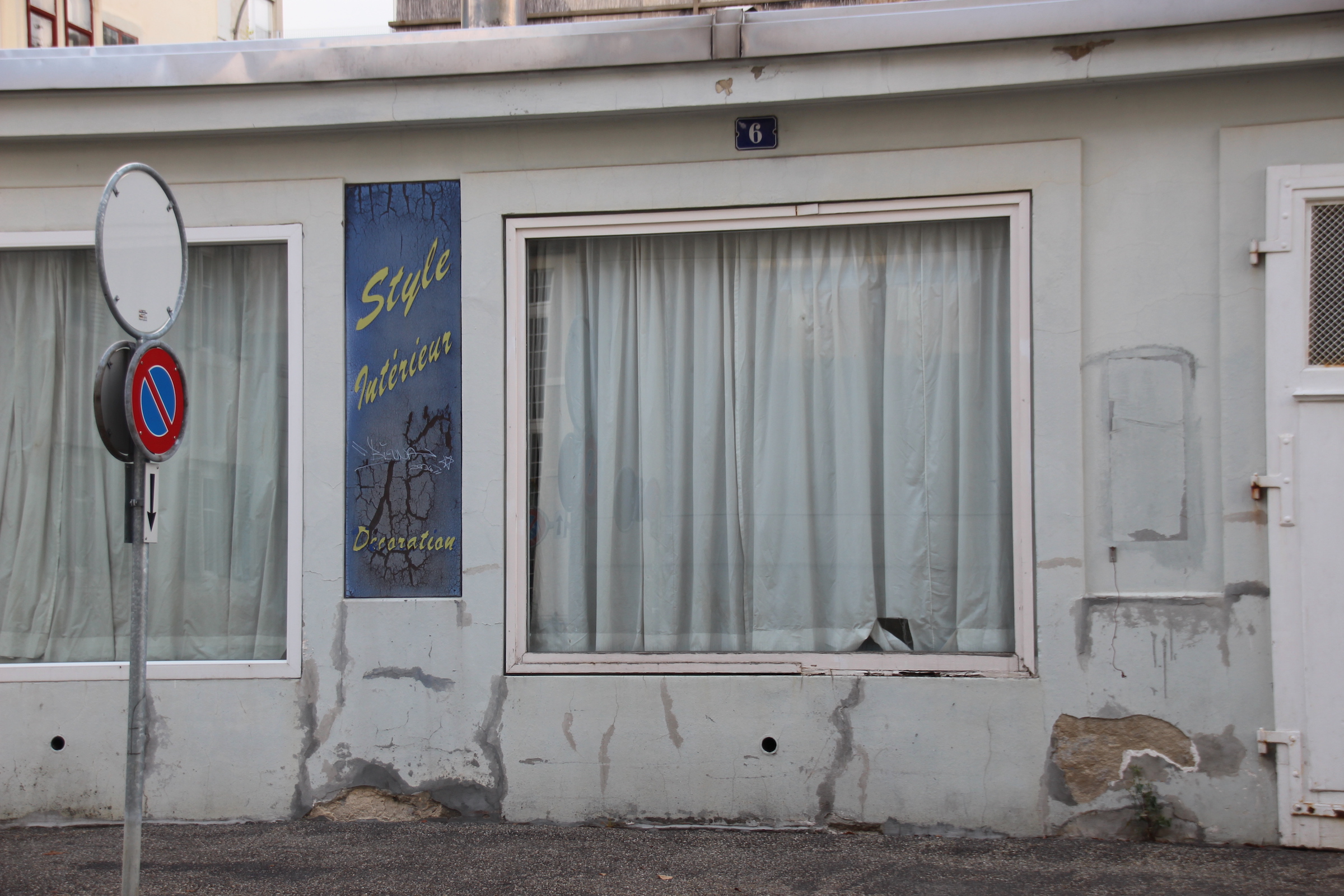
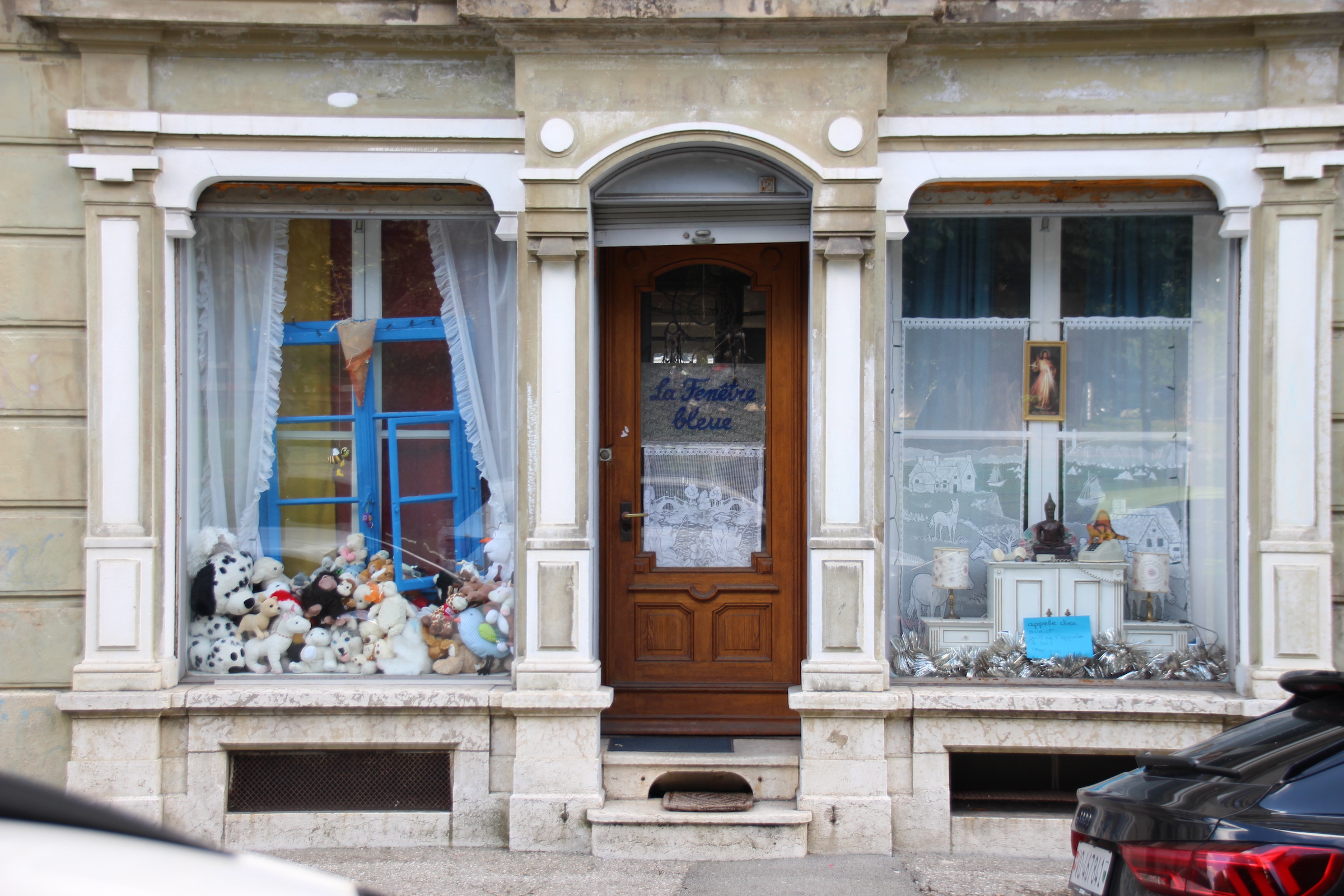
I find some of these spots somehow quite charming, even though I am a tourist …



In LCdF even the public clocks in the shopping mall feature a moon phase display!
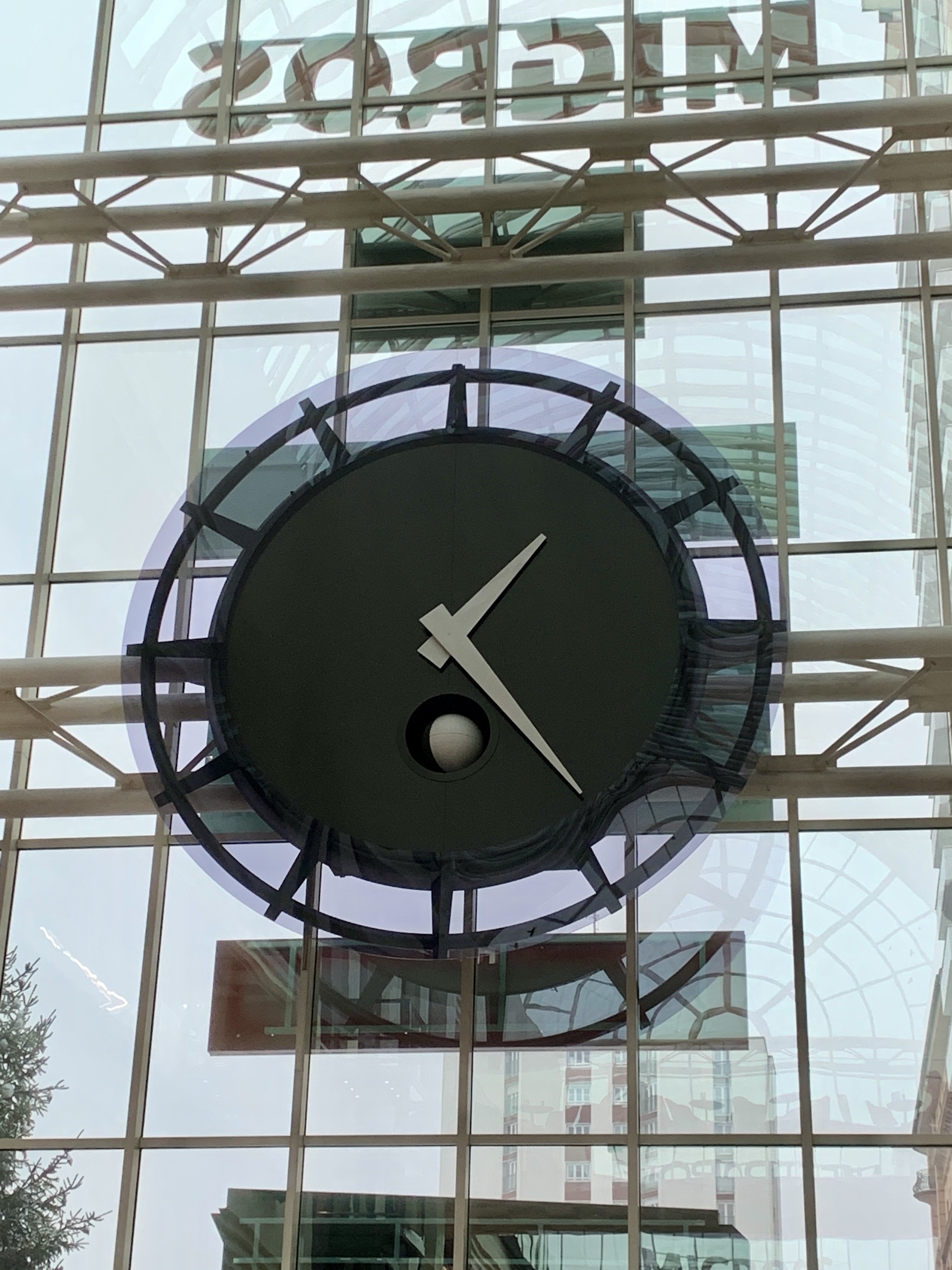
In the old city center there are the cool ⤴️Eberhard building as well as ⤴️Girard-Perregaux (note: the latter is not only just opposite of ⤴️ochs und junior, you can also see the «patrons villa next to the factory»-thing here quite good):
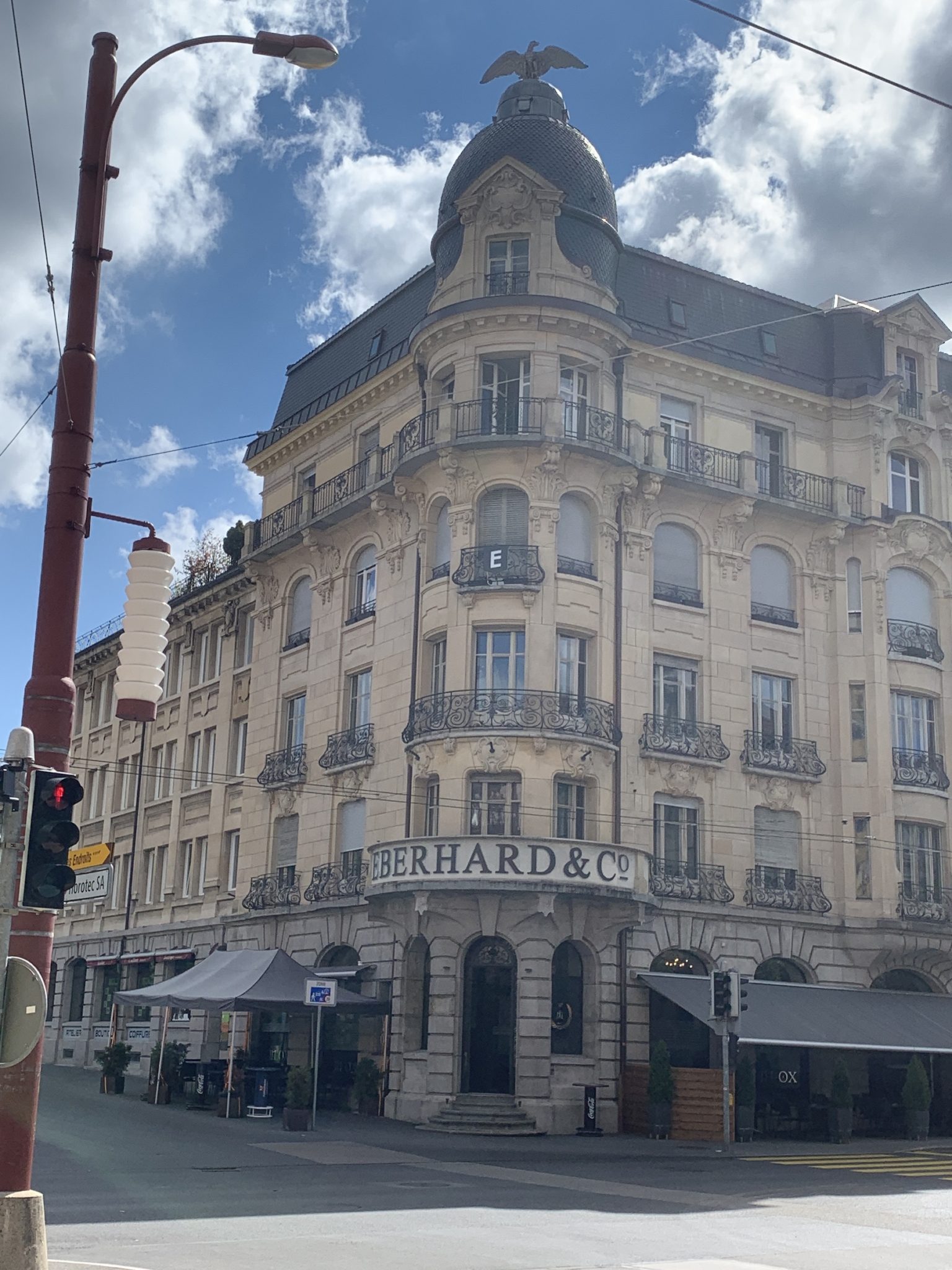
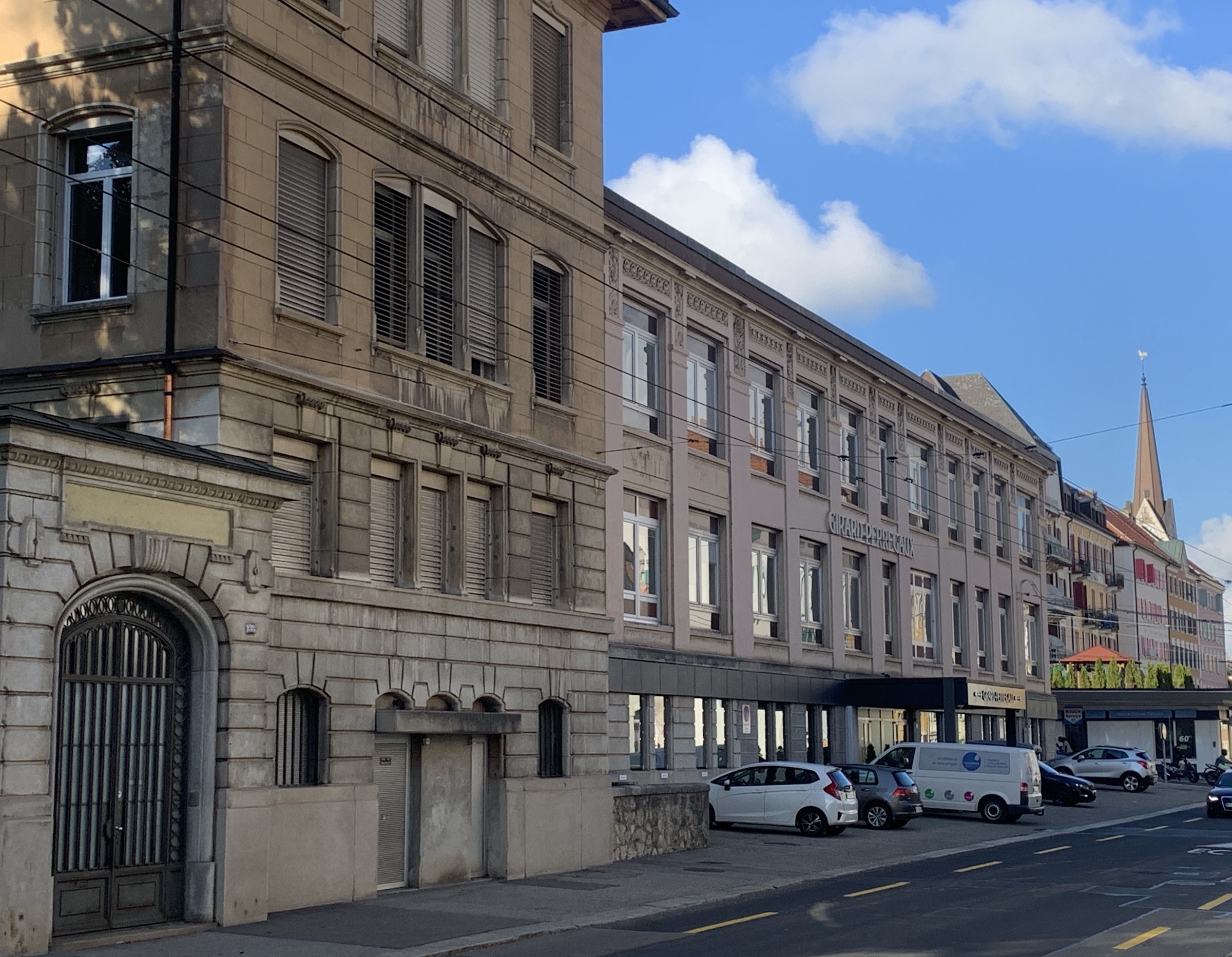
as well as many smaller relevant companies:
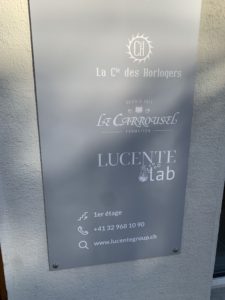

Still within the town of LCdF – the lines are kind of blurred, at least that’s how I perceived it – you will find the likes of Ulysse Nardin or La Joux-Perret/Arnold & Son and – close to the «Allée du Quartz» (not sure if this a coincidence) Dior and a really substantial ⤴️TAG Heuer factory (too large for me to get on a picture!).
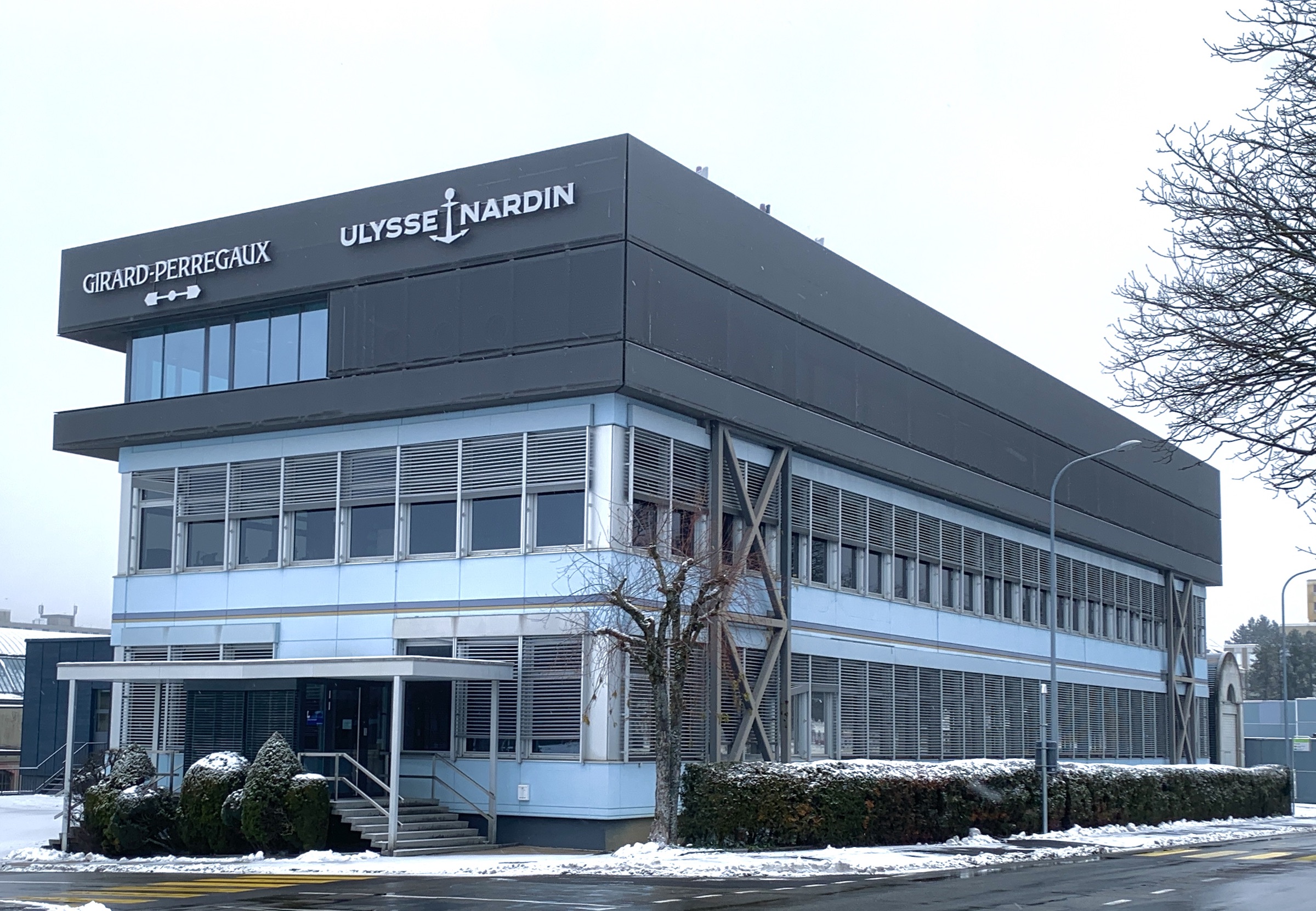
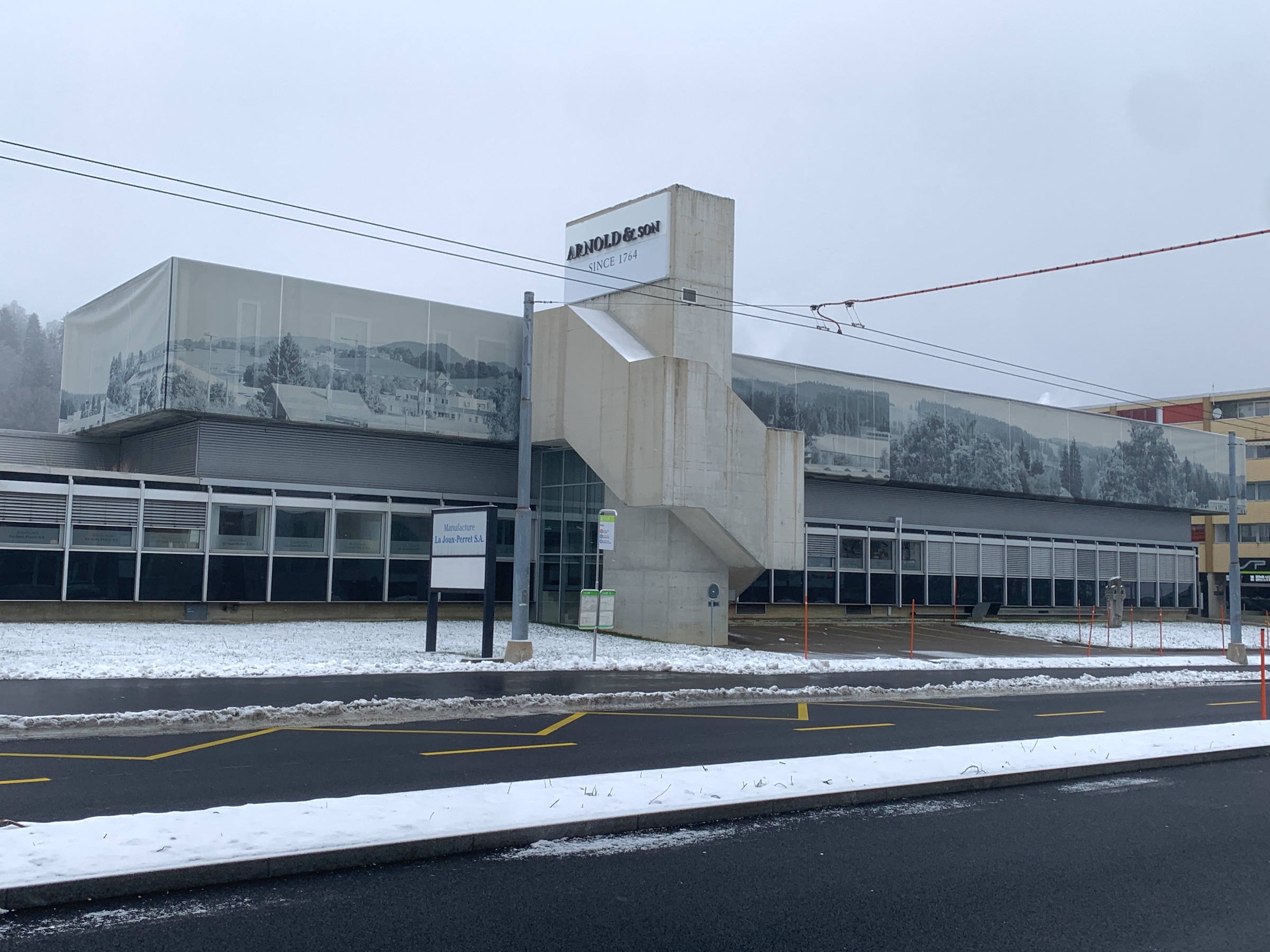

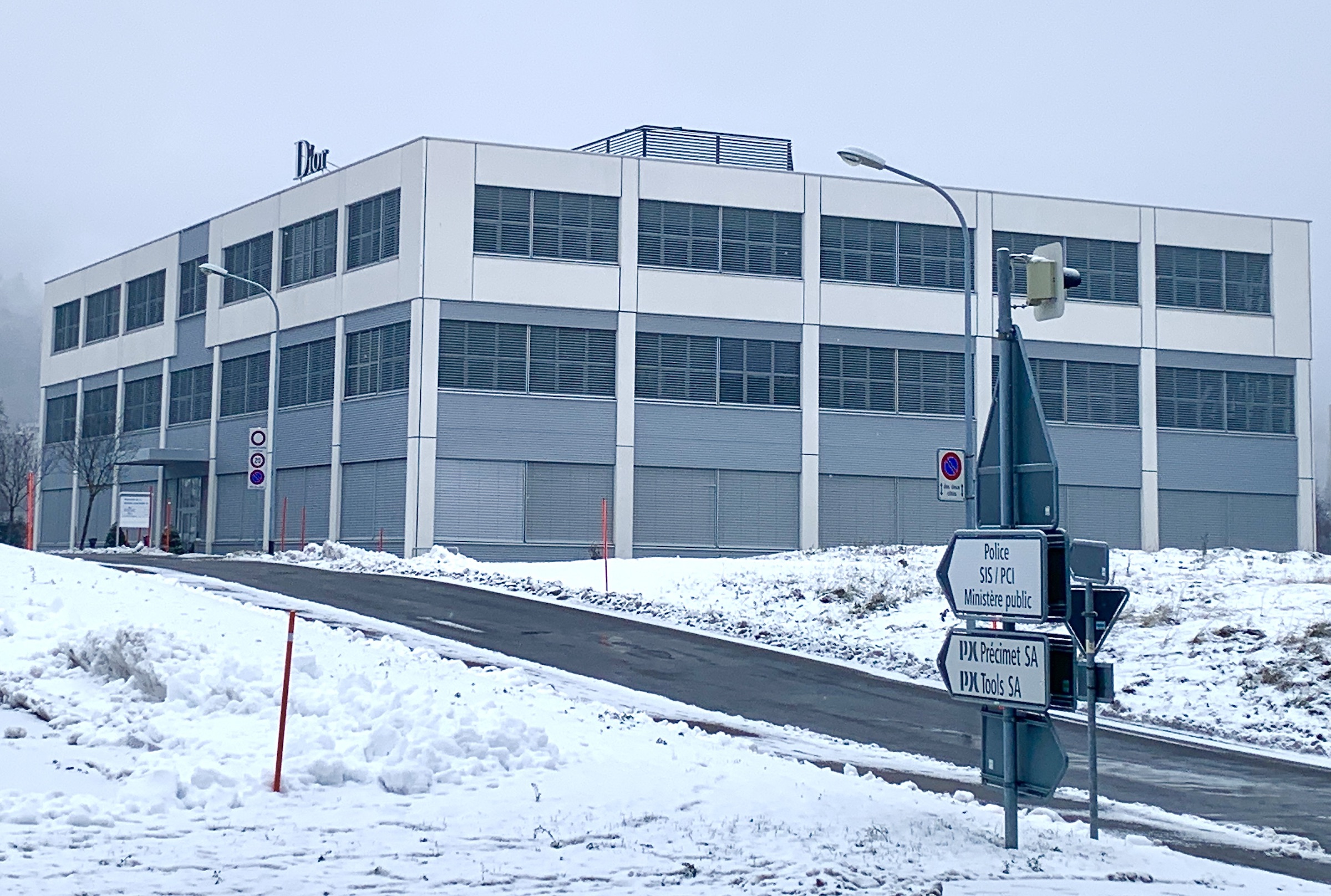

While I missed to take a picture of the Concepto-workshop, I of course visited the third movement-manufacture in LCdF outside the town at the road to LL. The large bridge connecting two parts the factory underlines the sheer size of this company site.
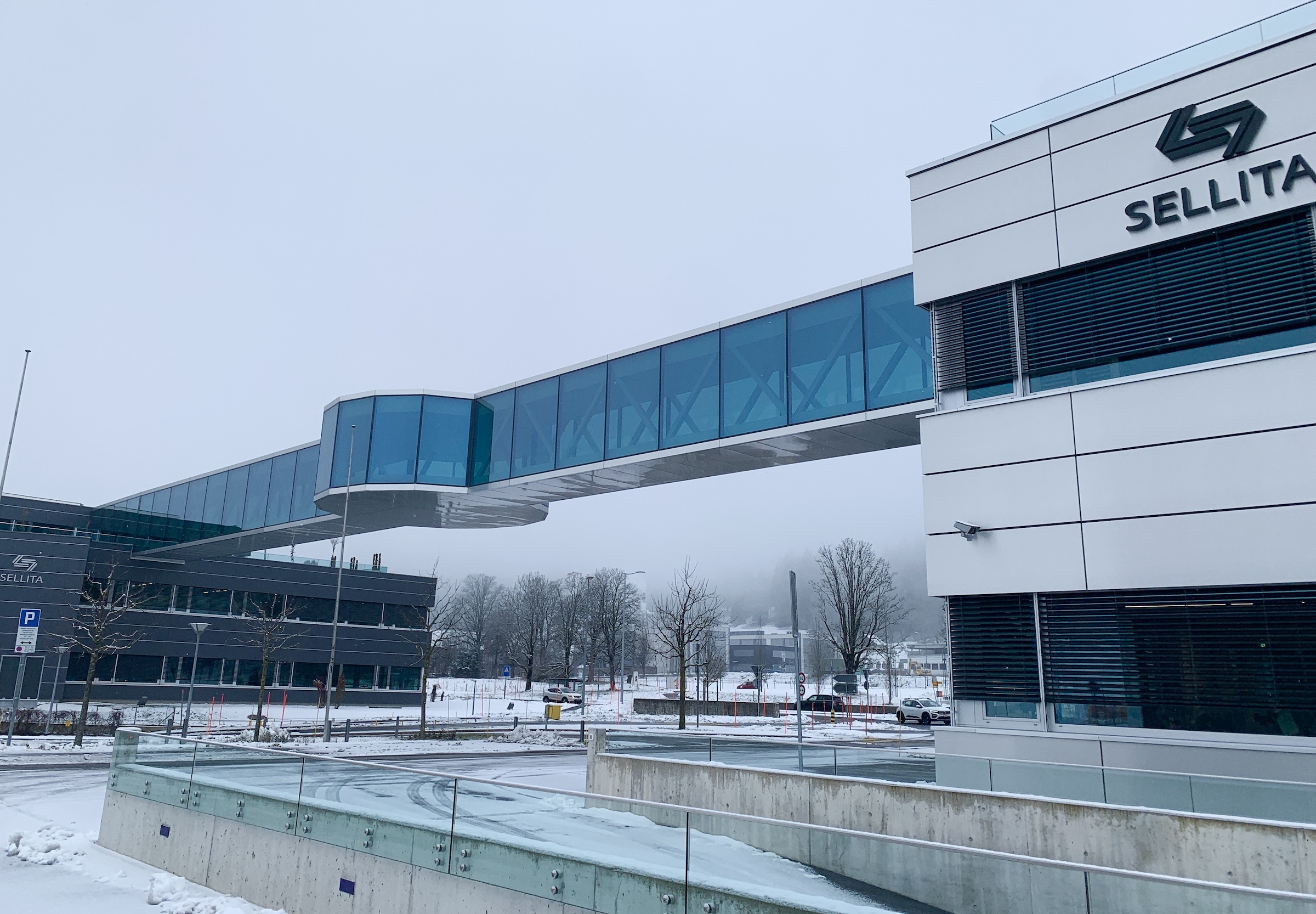
In a two smaller industrial estates just outside LCdF you find – amongst others – illustrious names such as ⤴️Breiting, Chanel, ⤴️Cartier, Jaquet Droz or Patek Philipe as well as the Greubel Forsey buildings.
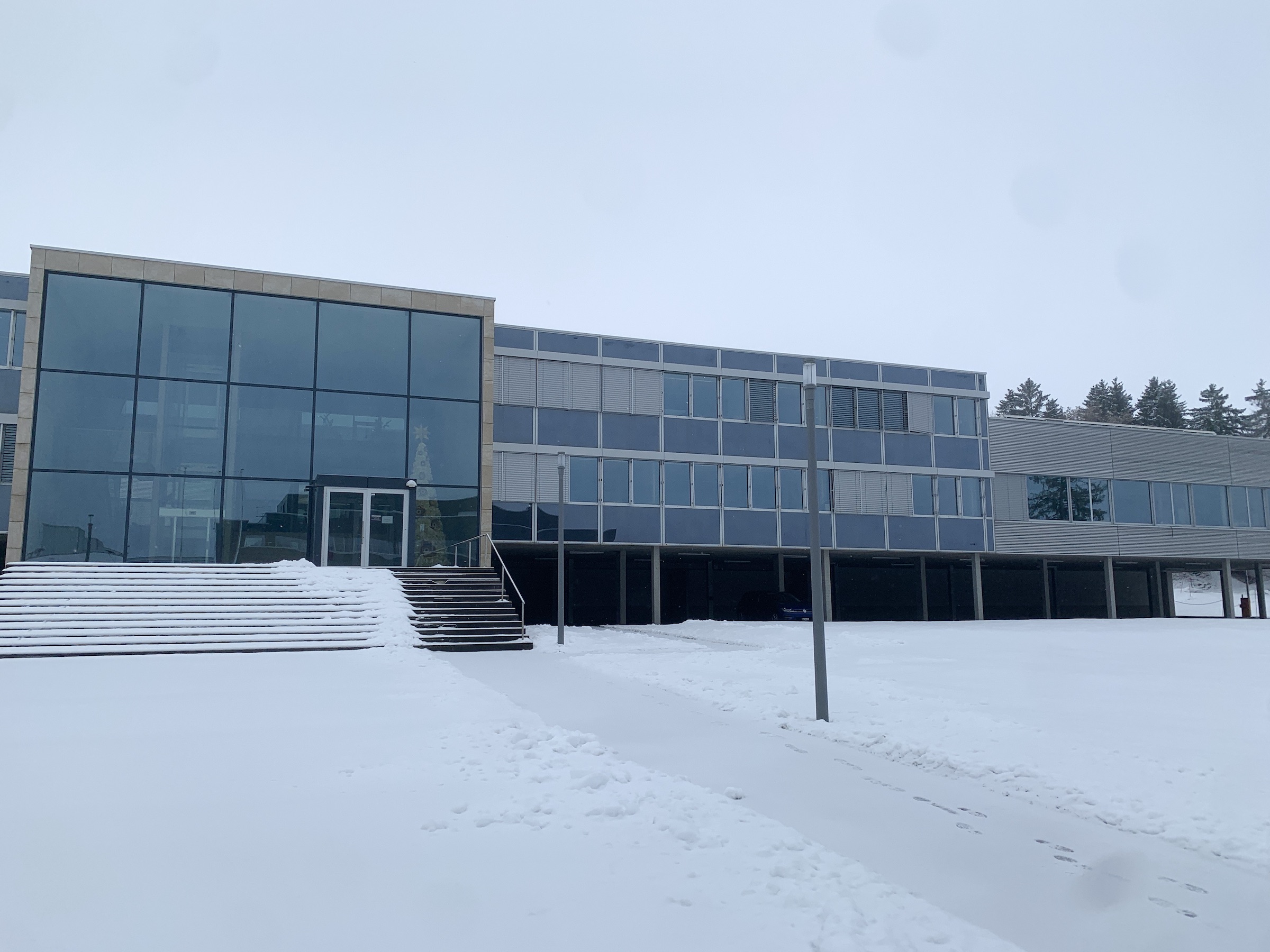
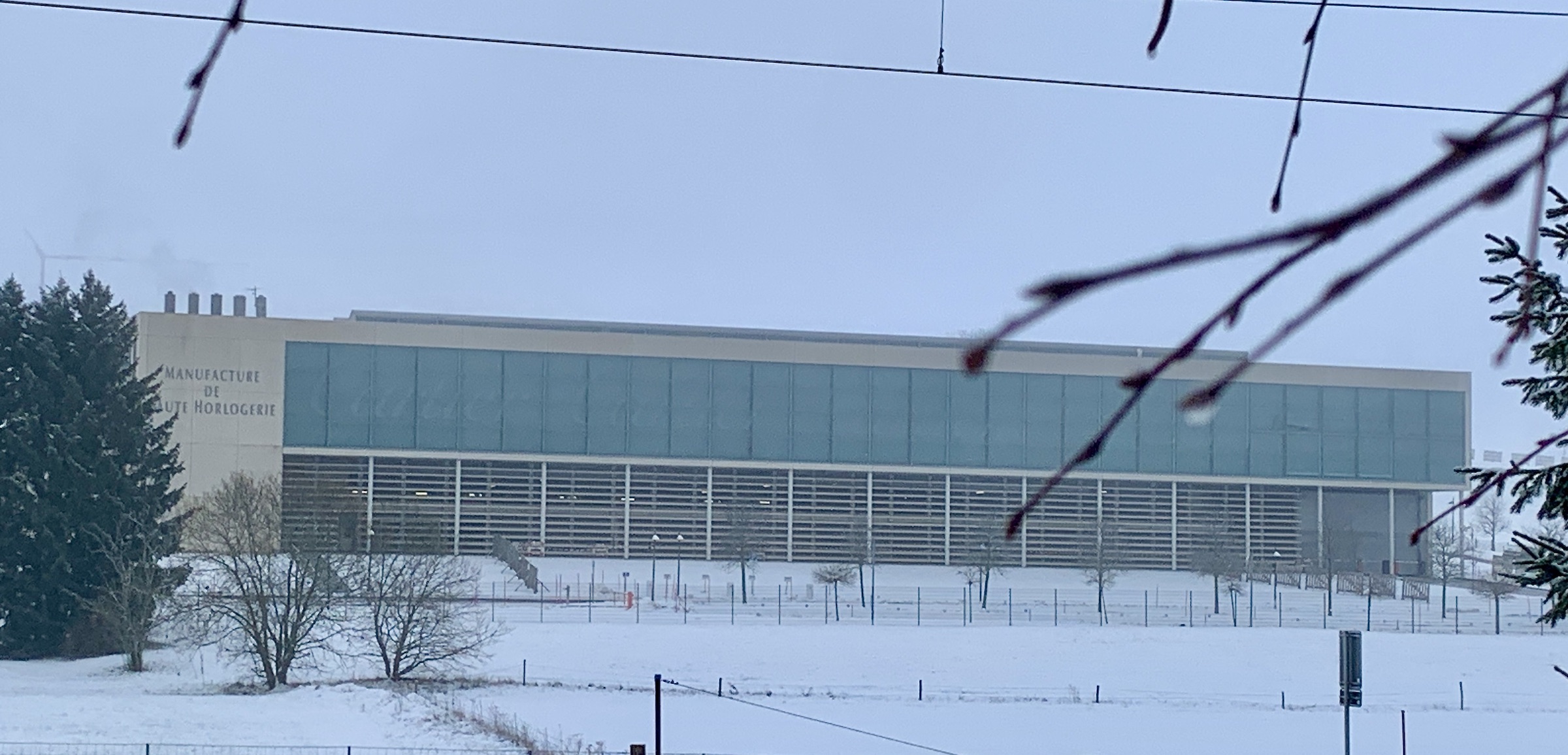
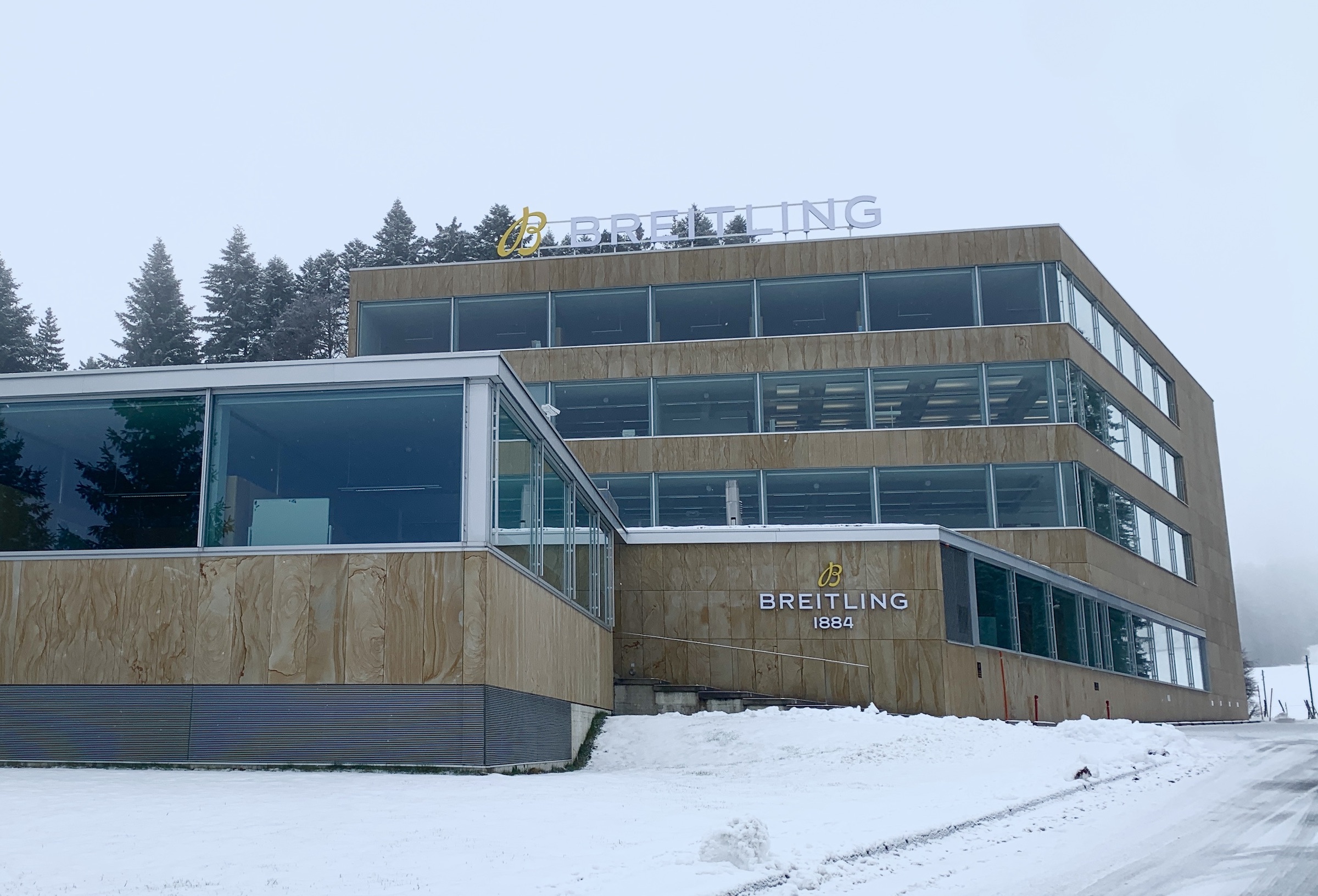
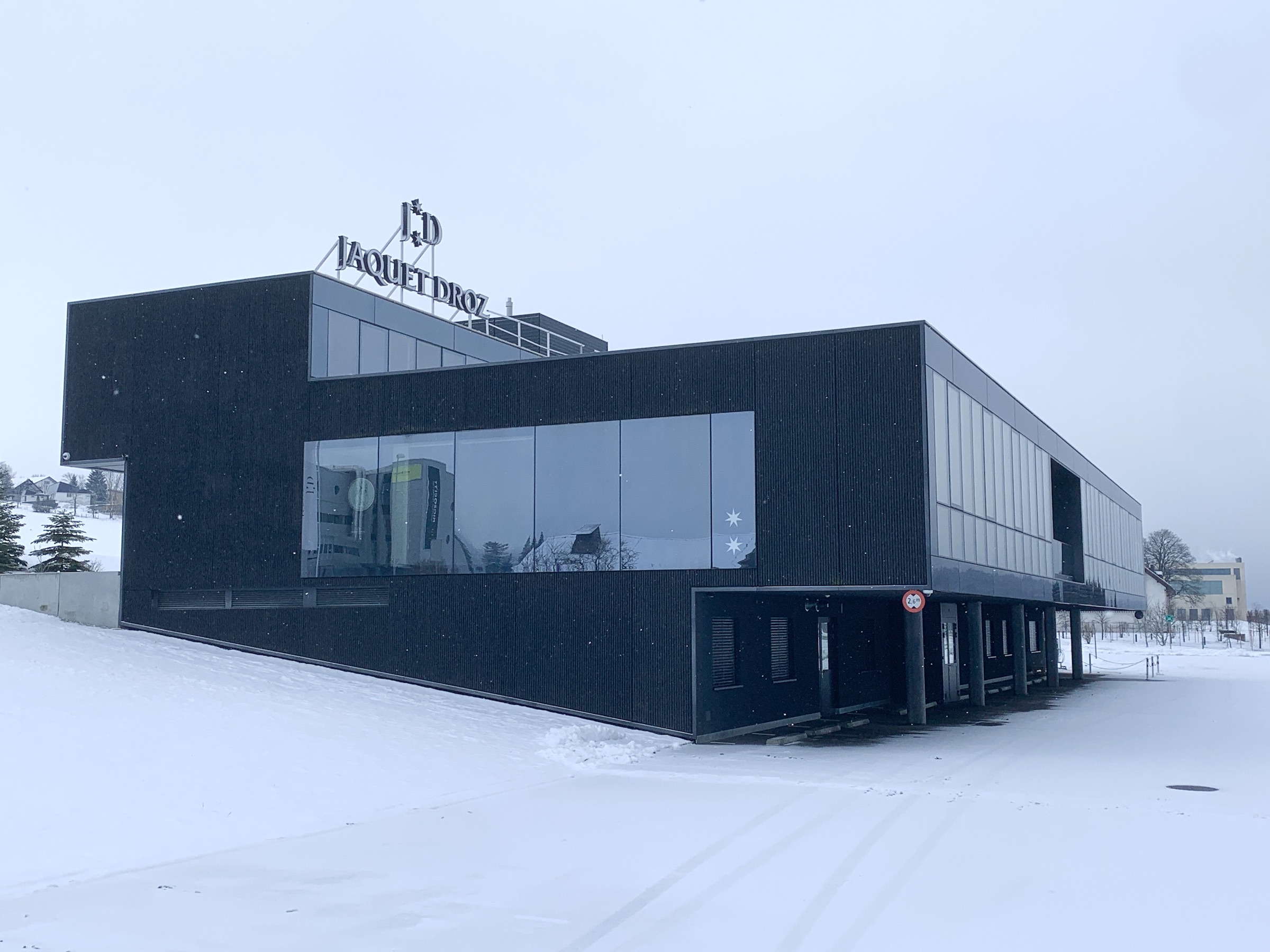
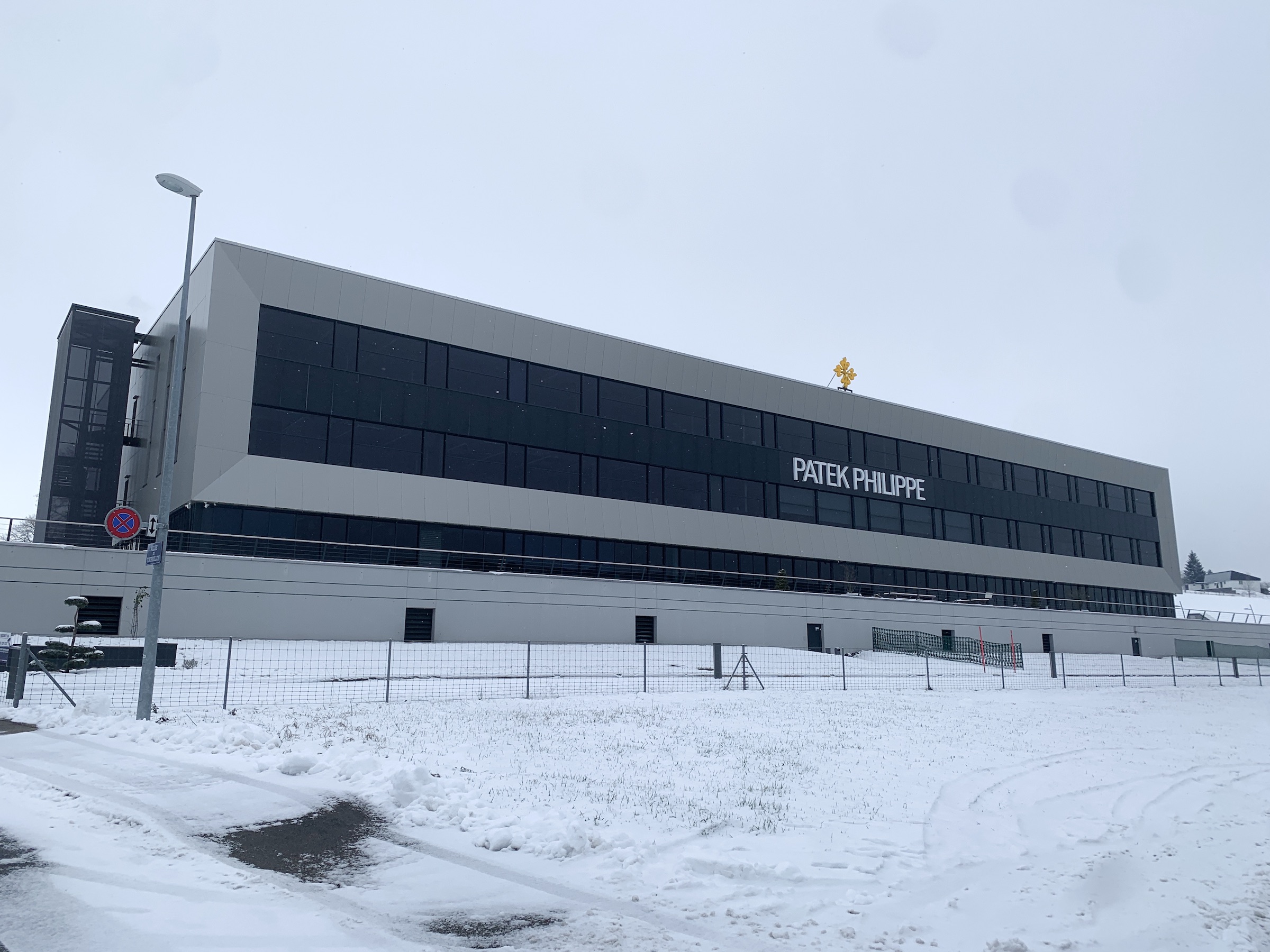
The new Greubel Forsey facility is equally impressive as purpose built for watchmaking – just as they did hundreds of years before: the large side on the left faces north-east, which ensures optimally even light for the employees involved in finishing. The offices are located in an old renovated farmhouse next to the factory.
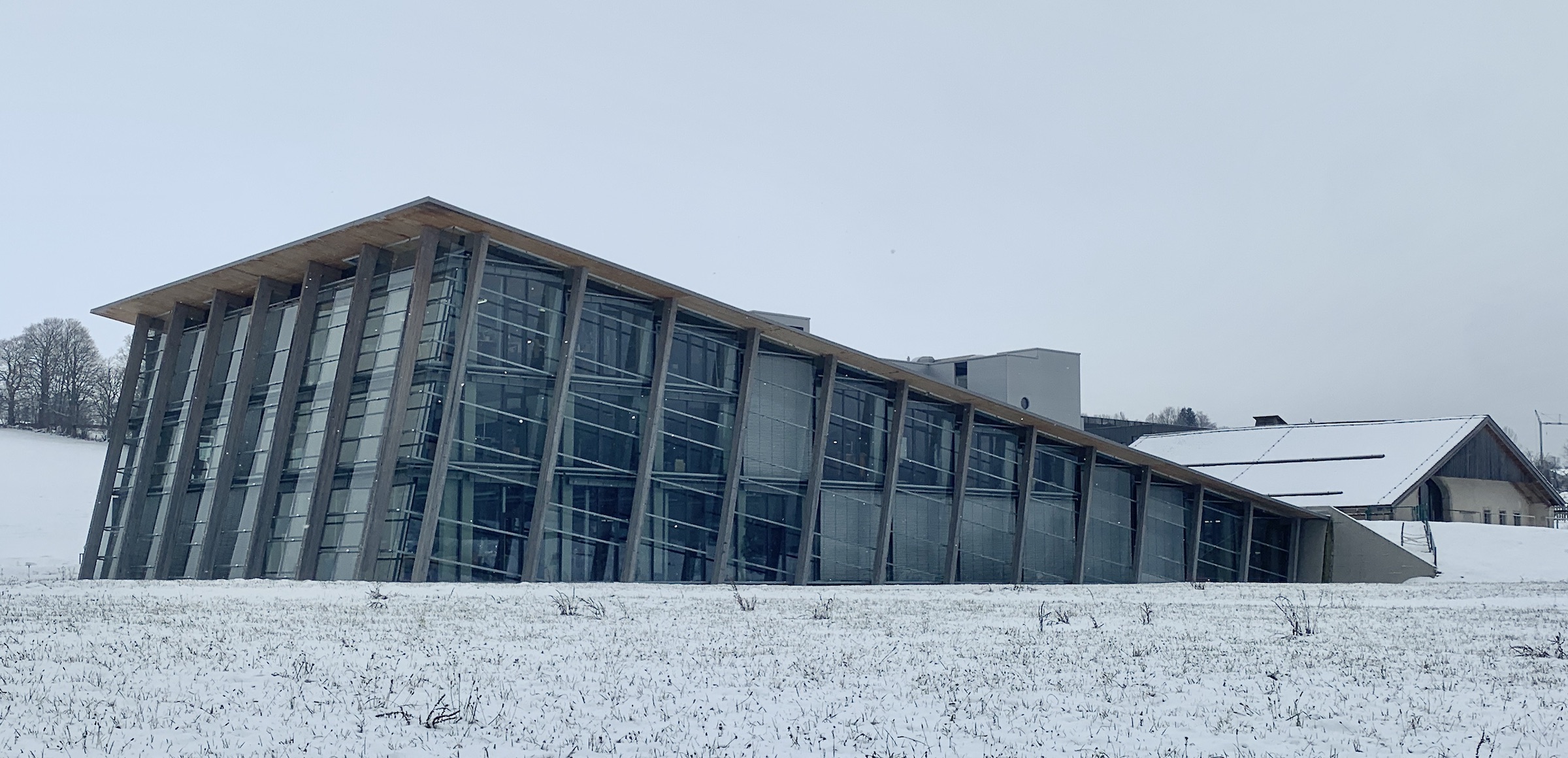
In Le Locle you kind of have to start with ⤴️Zenith, a large area of buildings, which are probably not all used to their full potential anymore. Anyway, what you see during the guided tour is amazing.
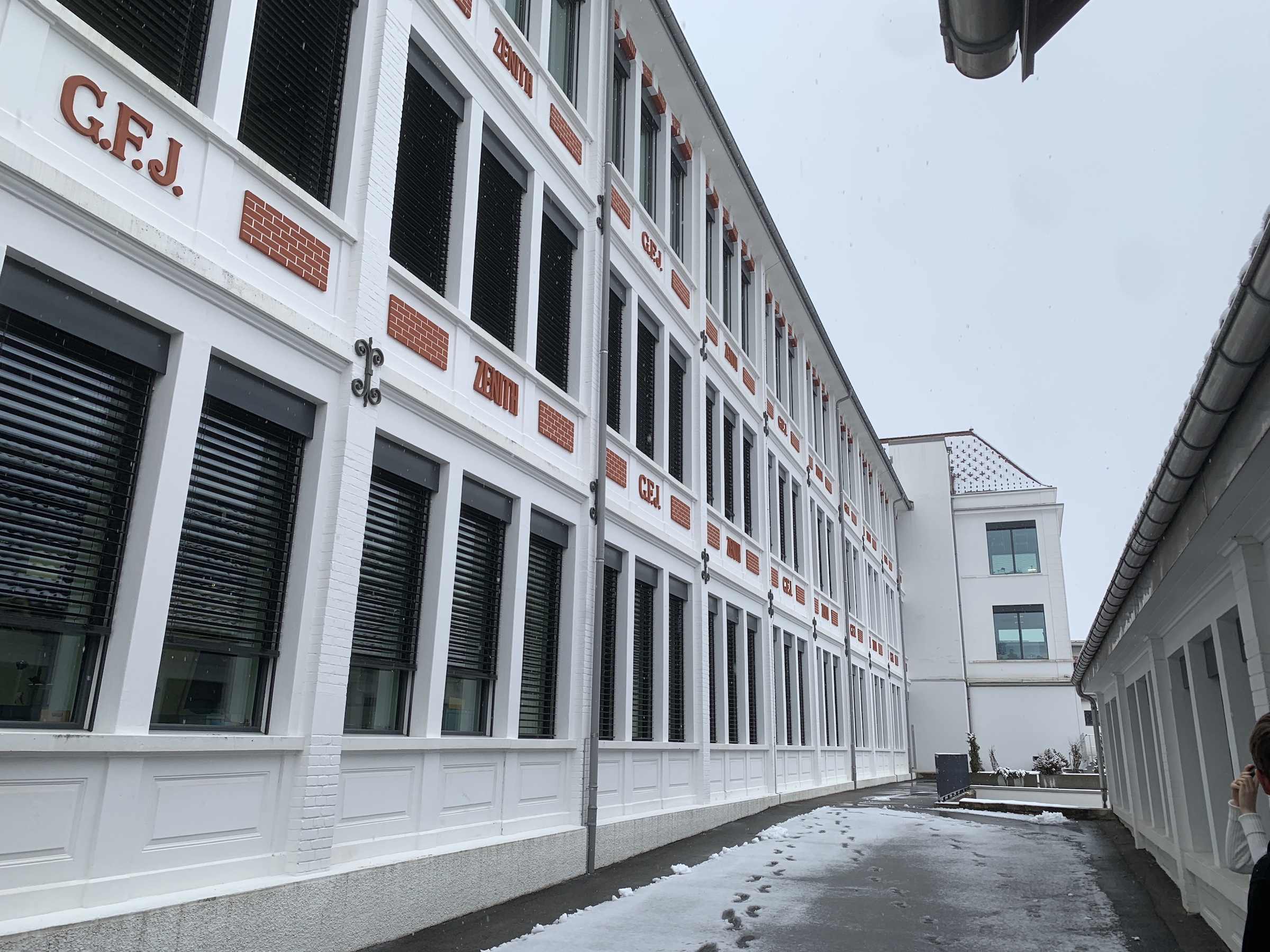
A beautiful small district houses giants like Tissot as well as Montblanc (not pictured) and the independent Vulcain.
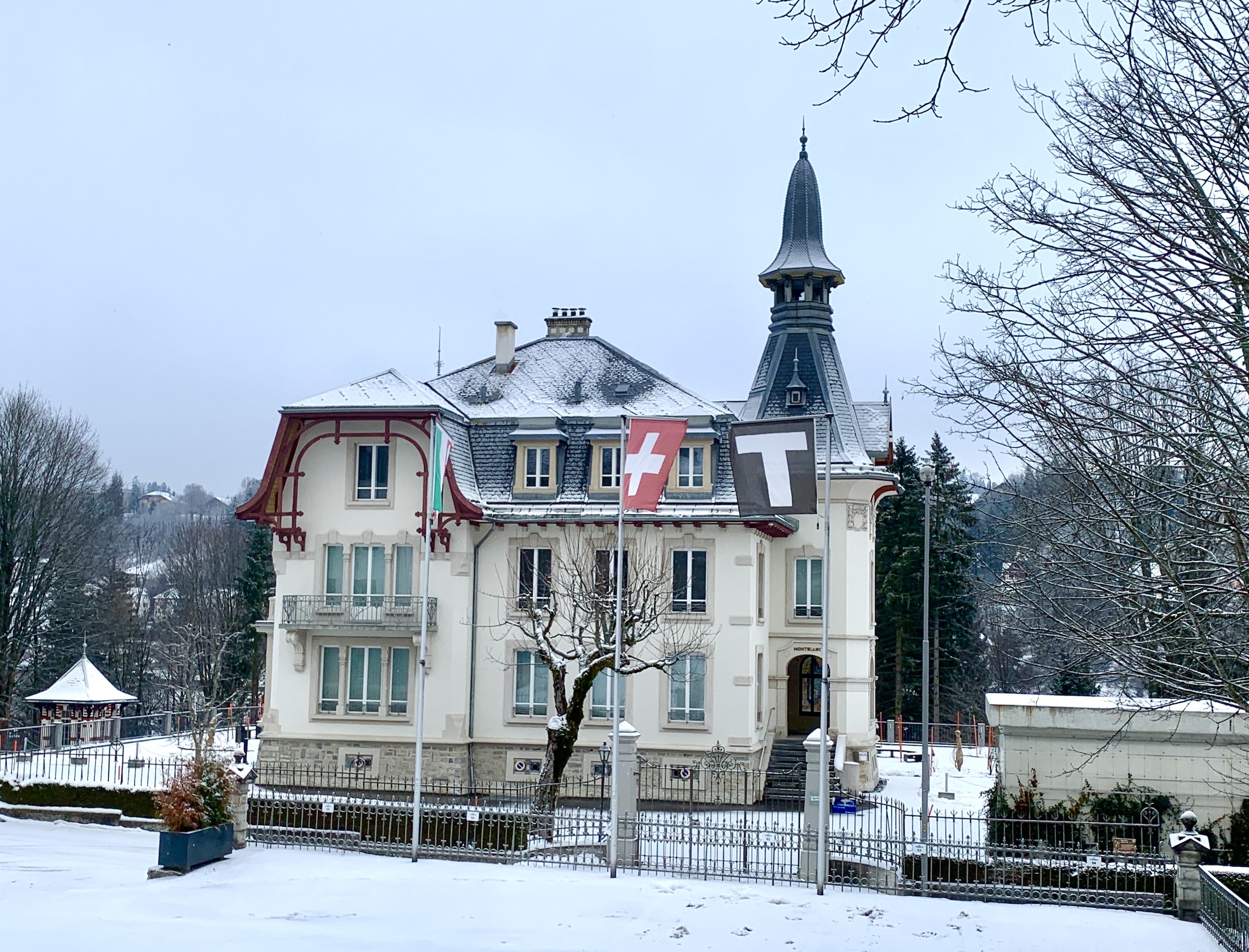
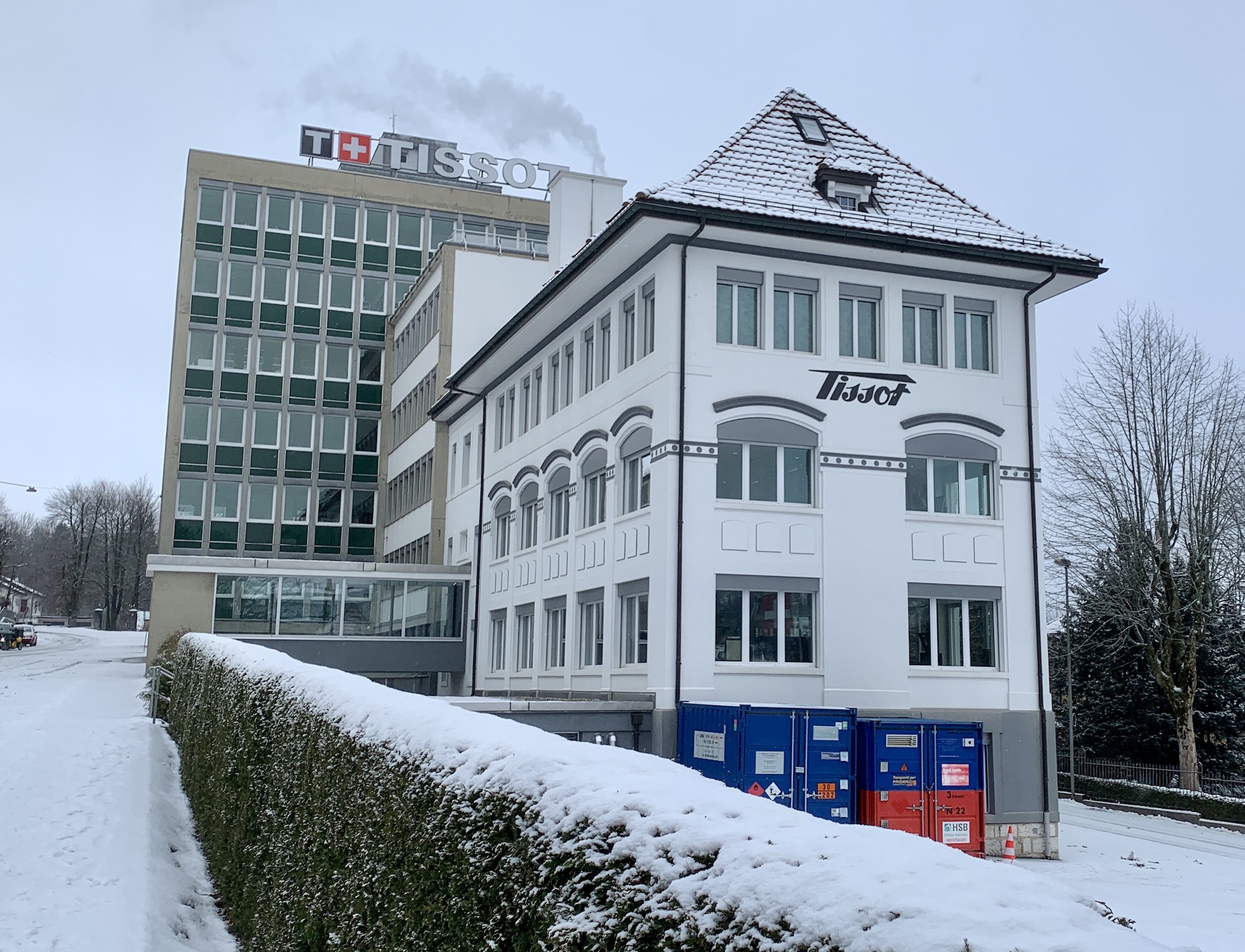
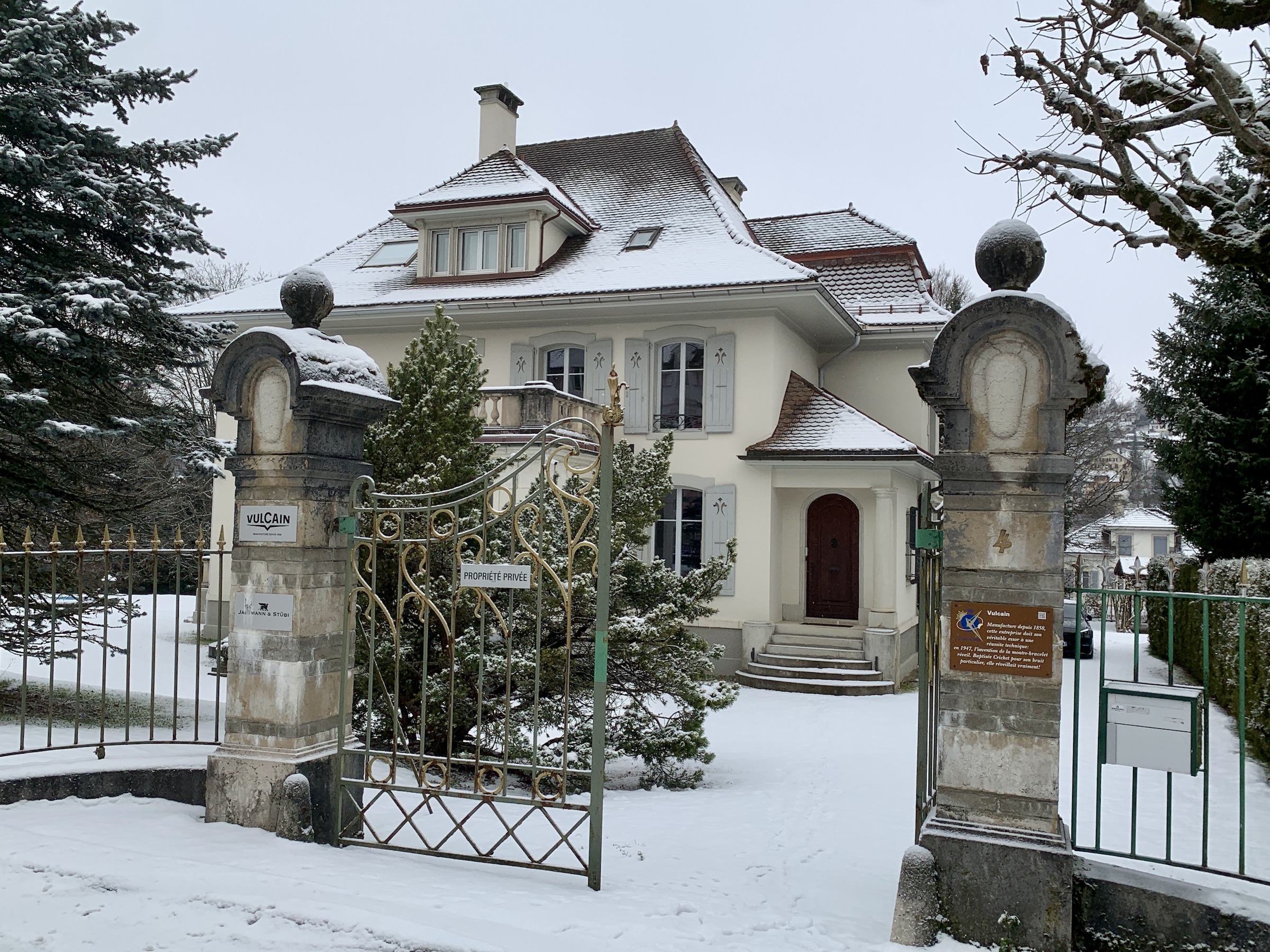
Unfortunately, I could not find out who used to own this factory, nor what you would have to pay for it …

More of that 60s look can be found at Nivarox or Ulysse Nardin.
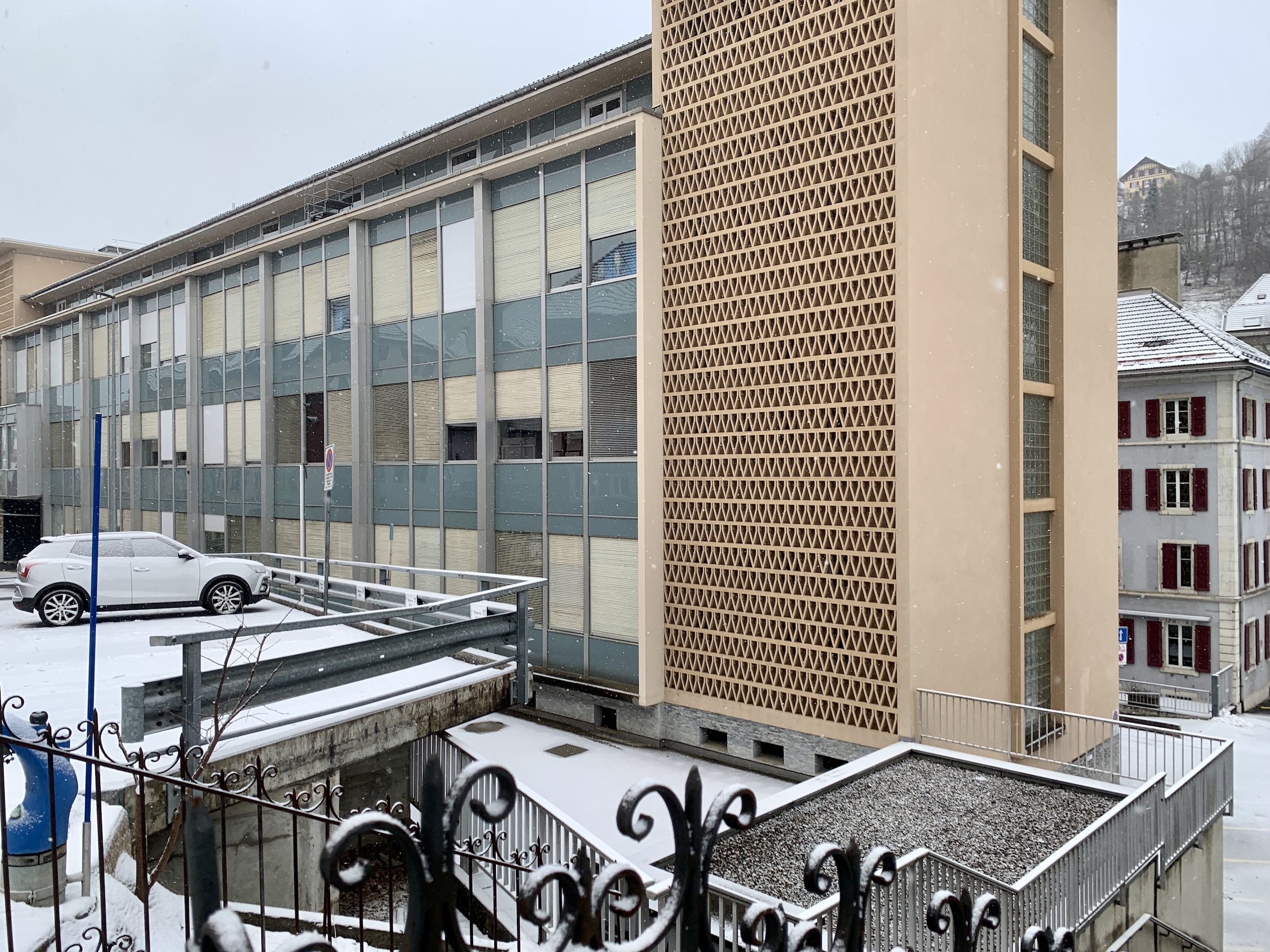
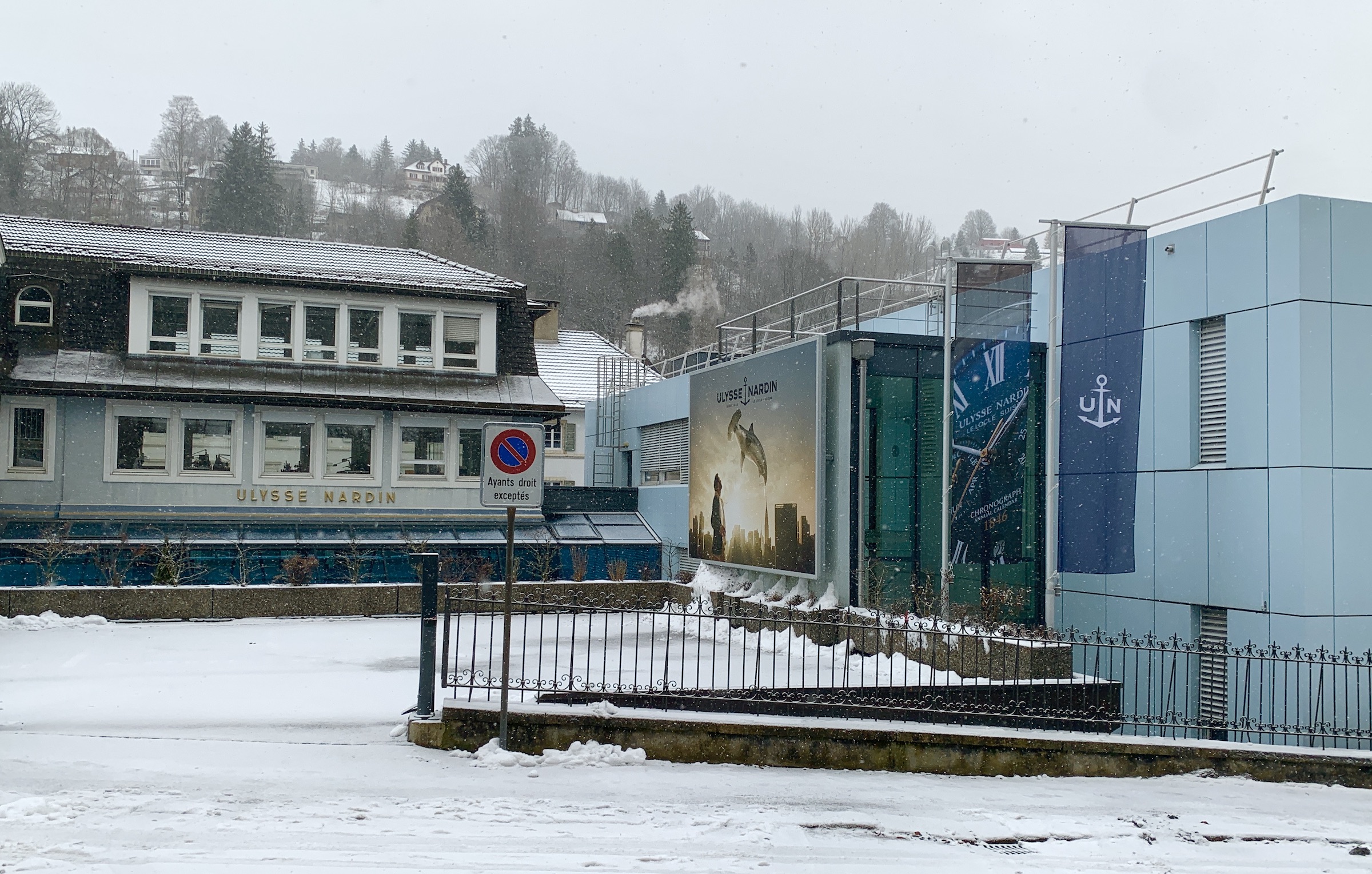
The close relation between ⤴️Tudor and Kenissi can best be comprehended when looking at their brand new (the pictures were taken end of 2022, the official inauguration was 2023) buildings; also interesting to note are the remains of the ⤴️Rolex logo on the (as it seems abandoned) building in the foreground …
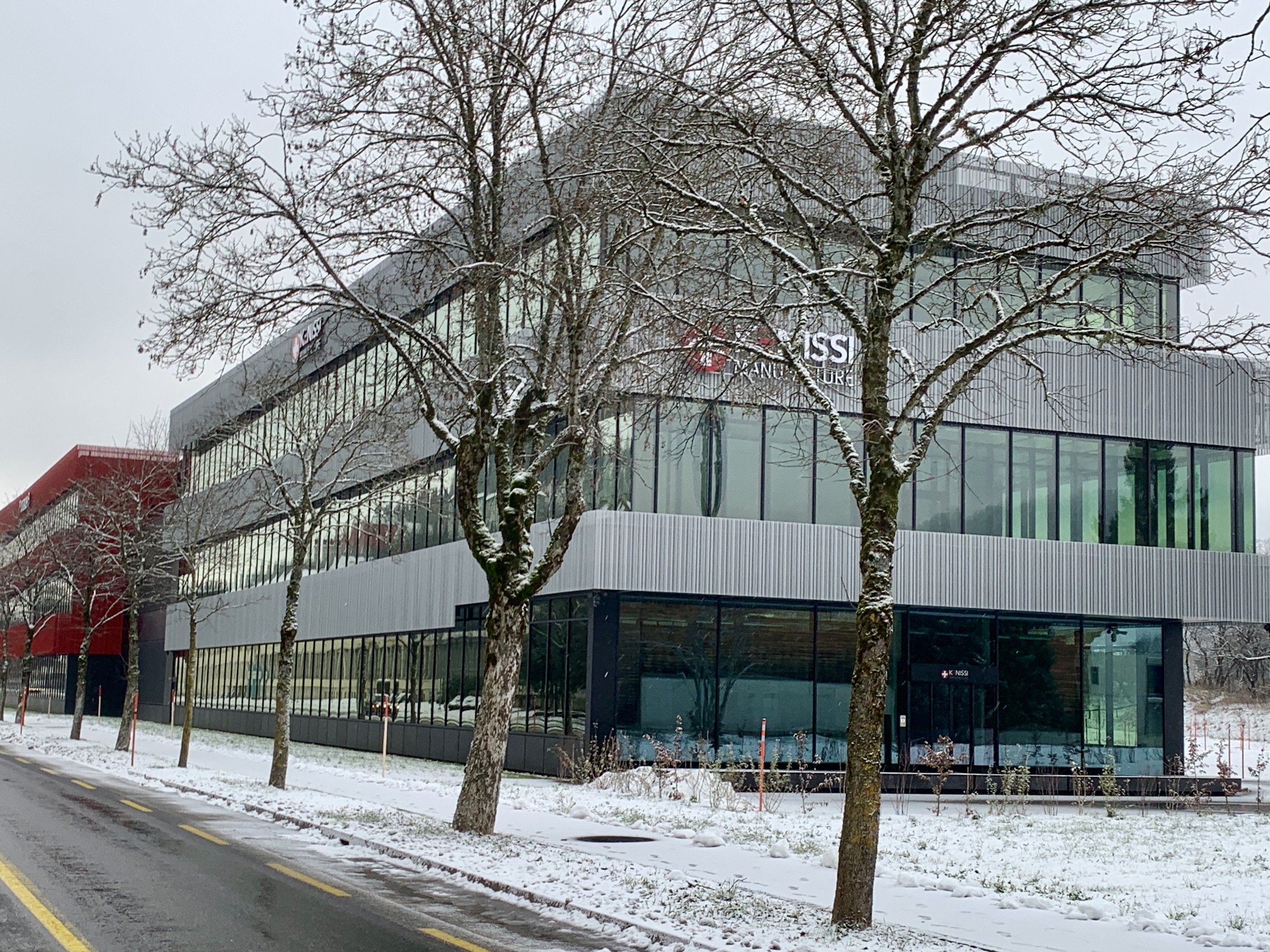
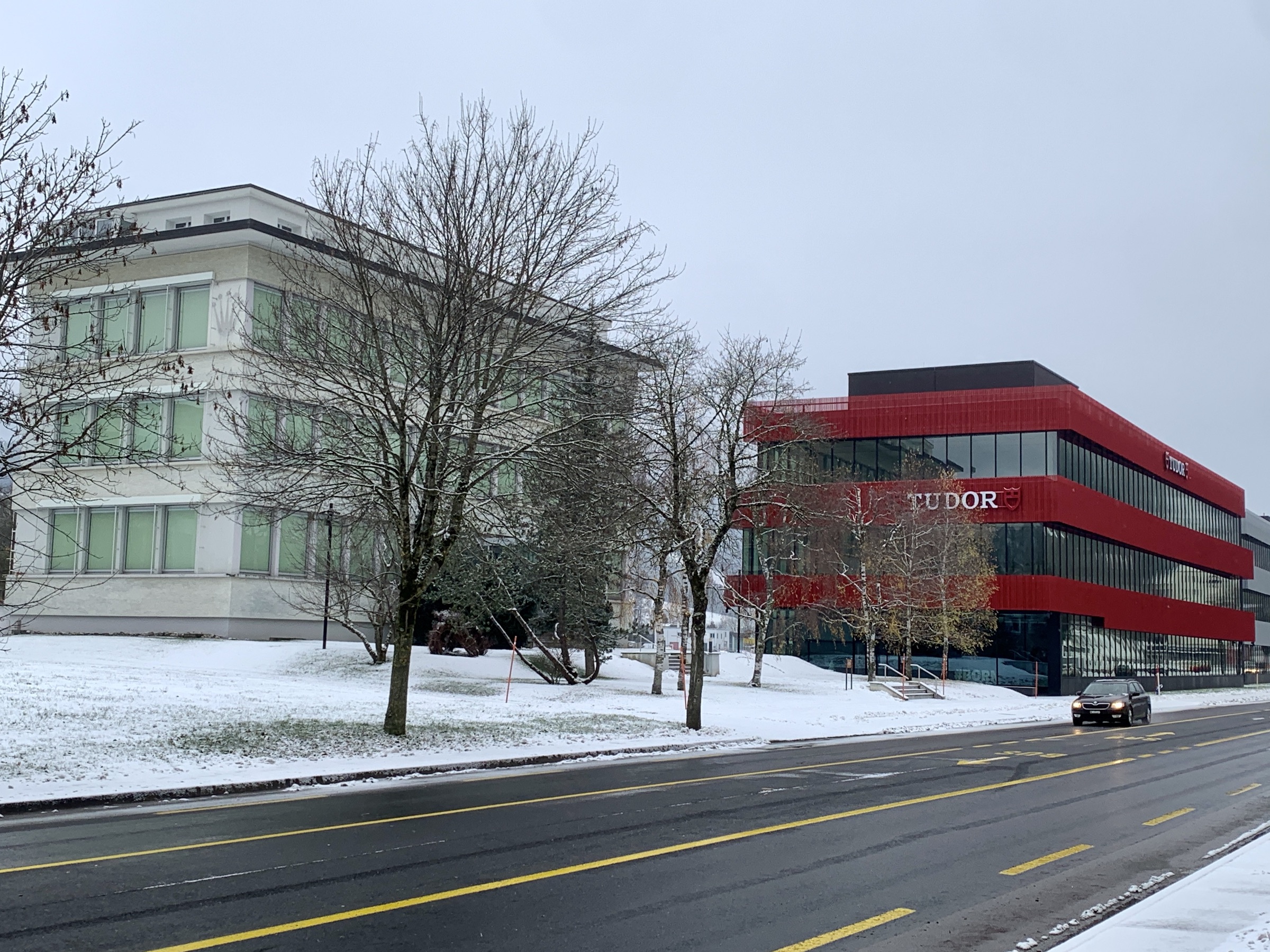
Outside up the hills, new and shiny, the new facilities of Cartier and Audemars Piguet.
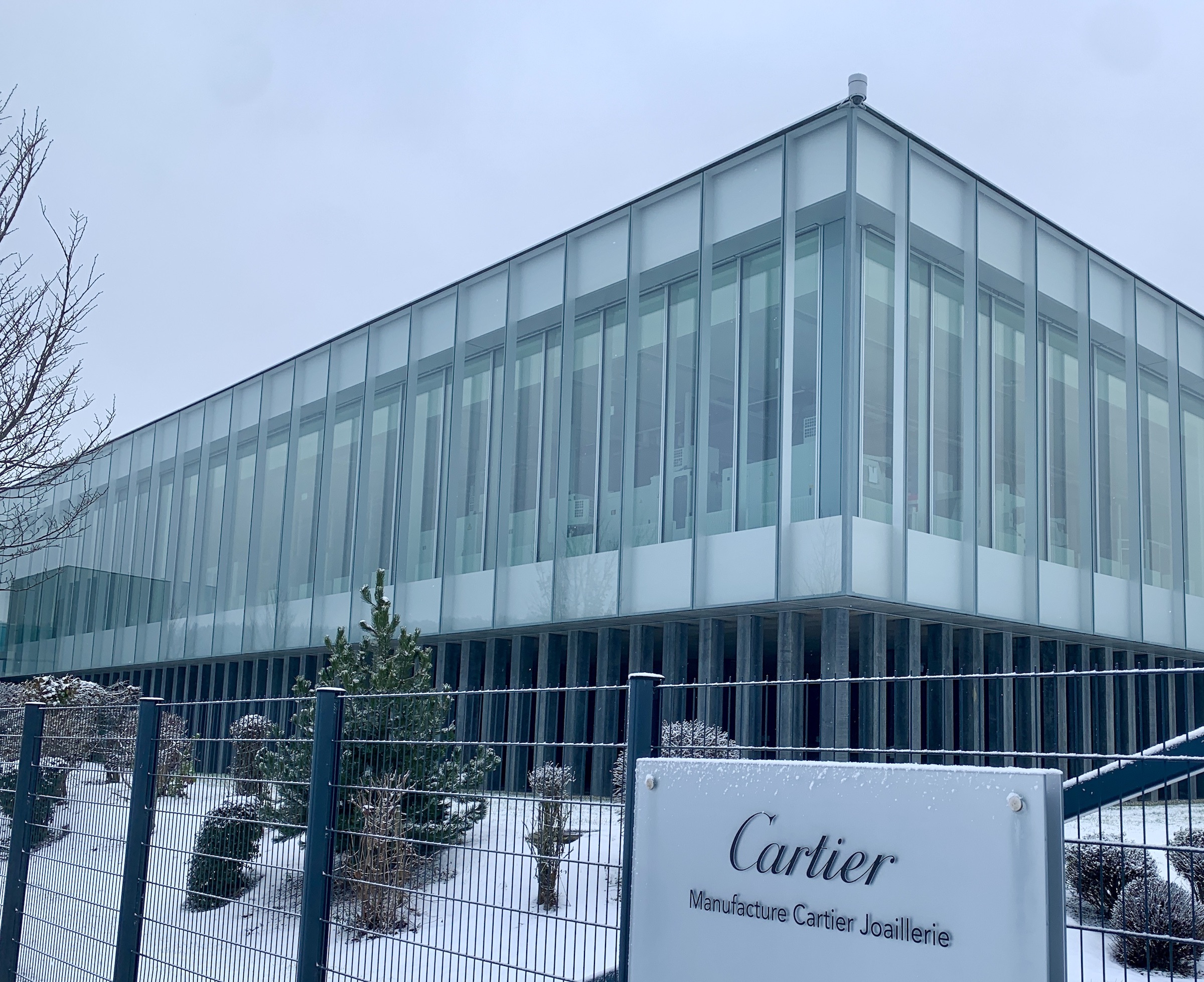
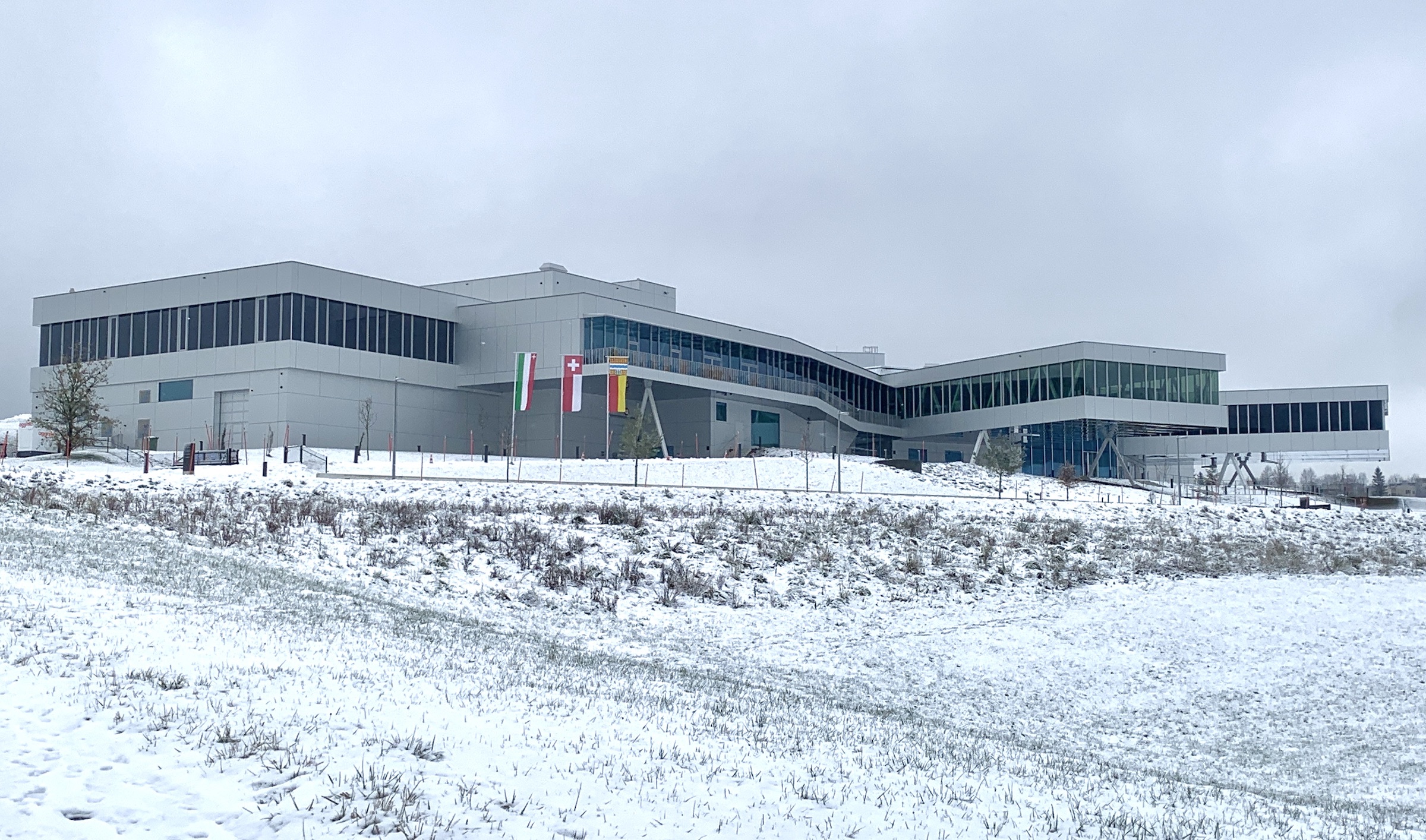
And of course these were far from all in LCdF/LL, but just a random, arbitrary selection!
Last but not least you have to visit the watch museums when you’re there.
The Museum in Le Locle resides in a nice chateau, so you get to see not only clocks and watches, but also a Louis XVI-style dwelling.
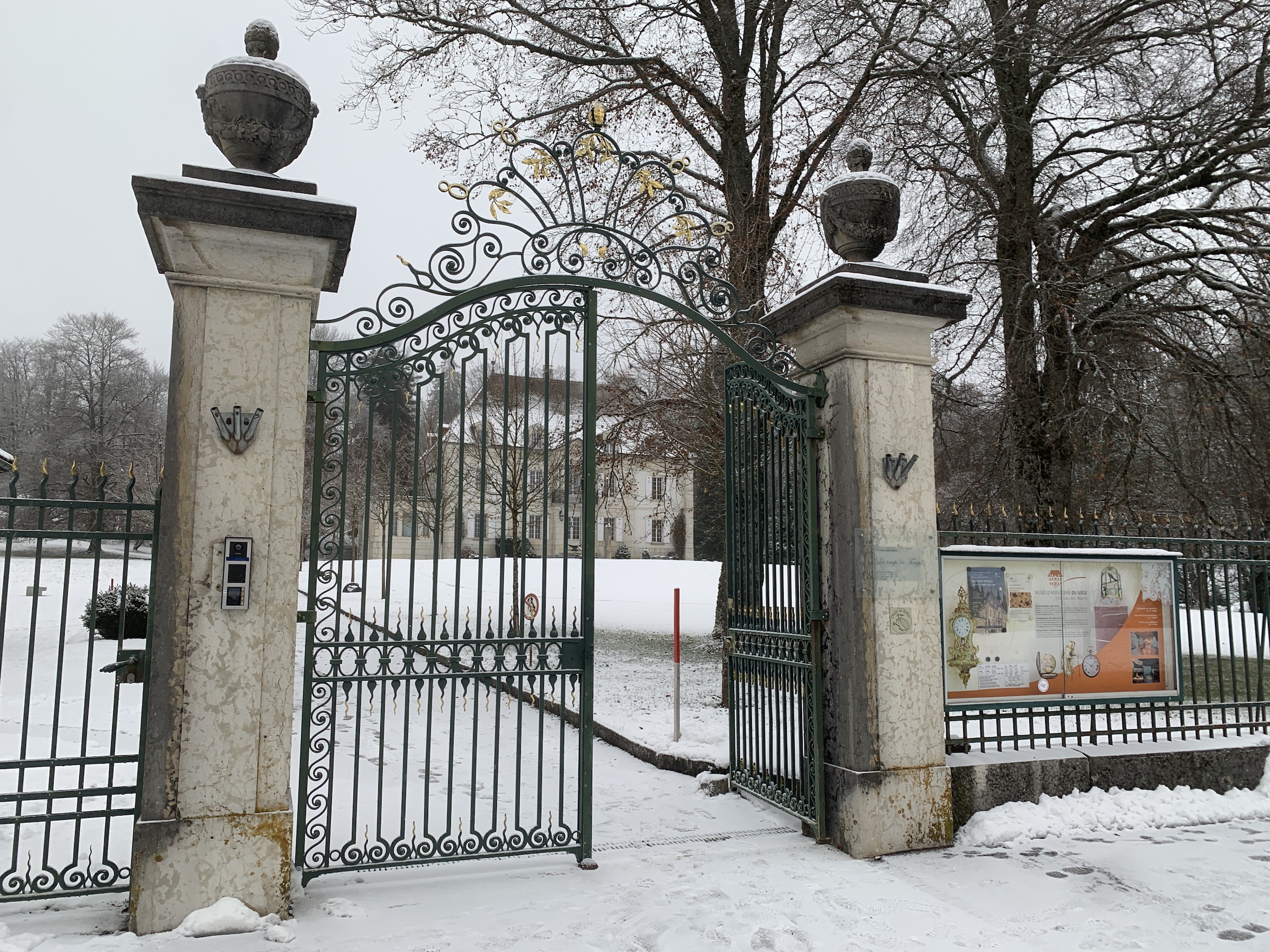
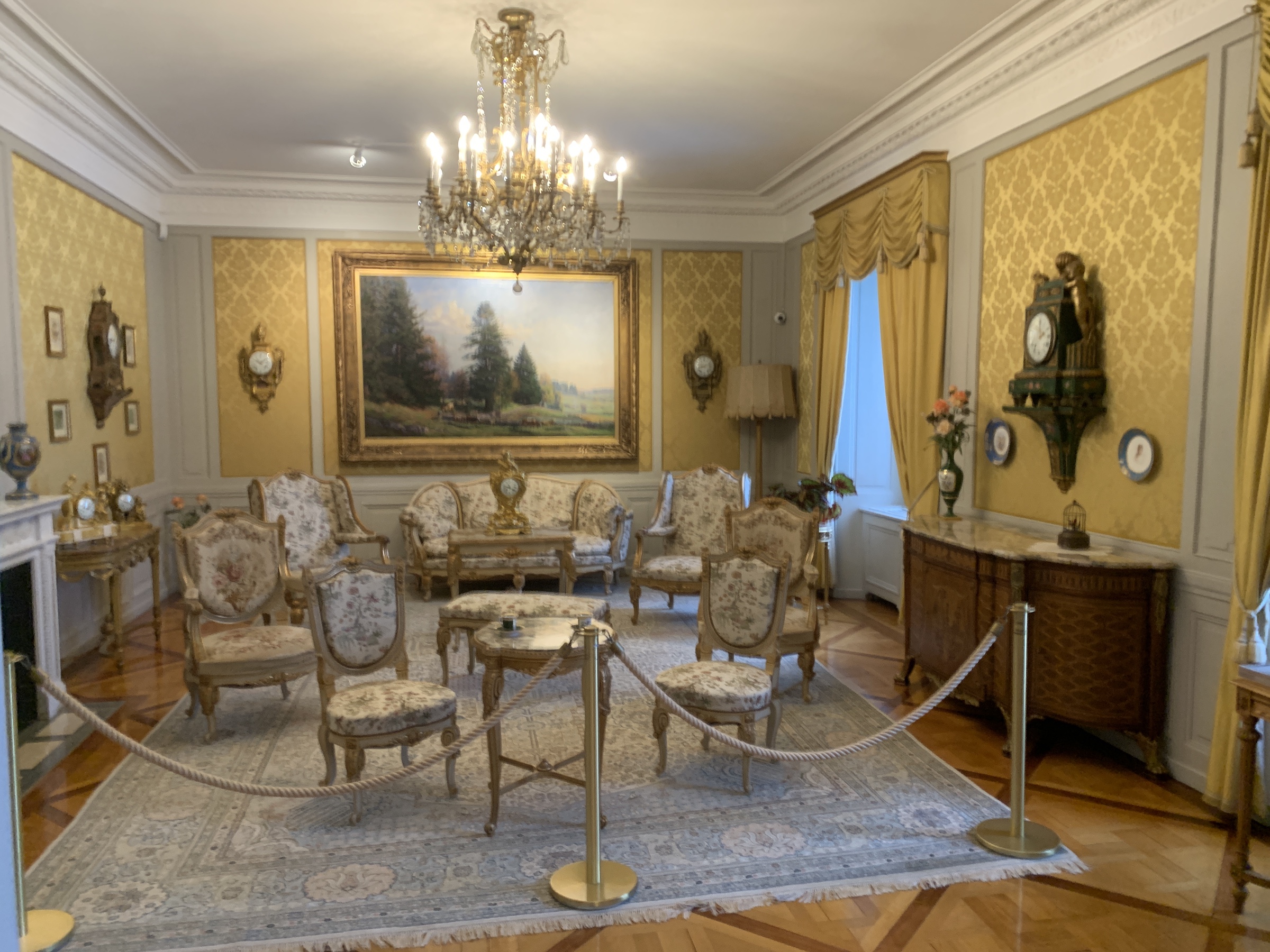
Do you remember that lace-making was the basis of the development of this area? That’s why you see exhibits reminding us of this fact here in this museum too.
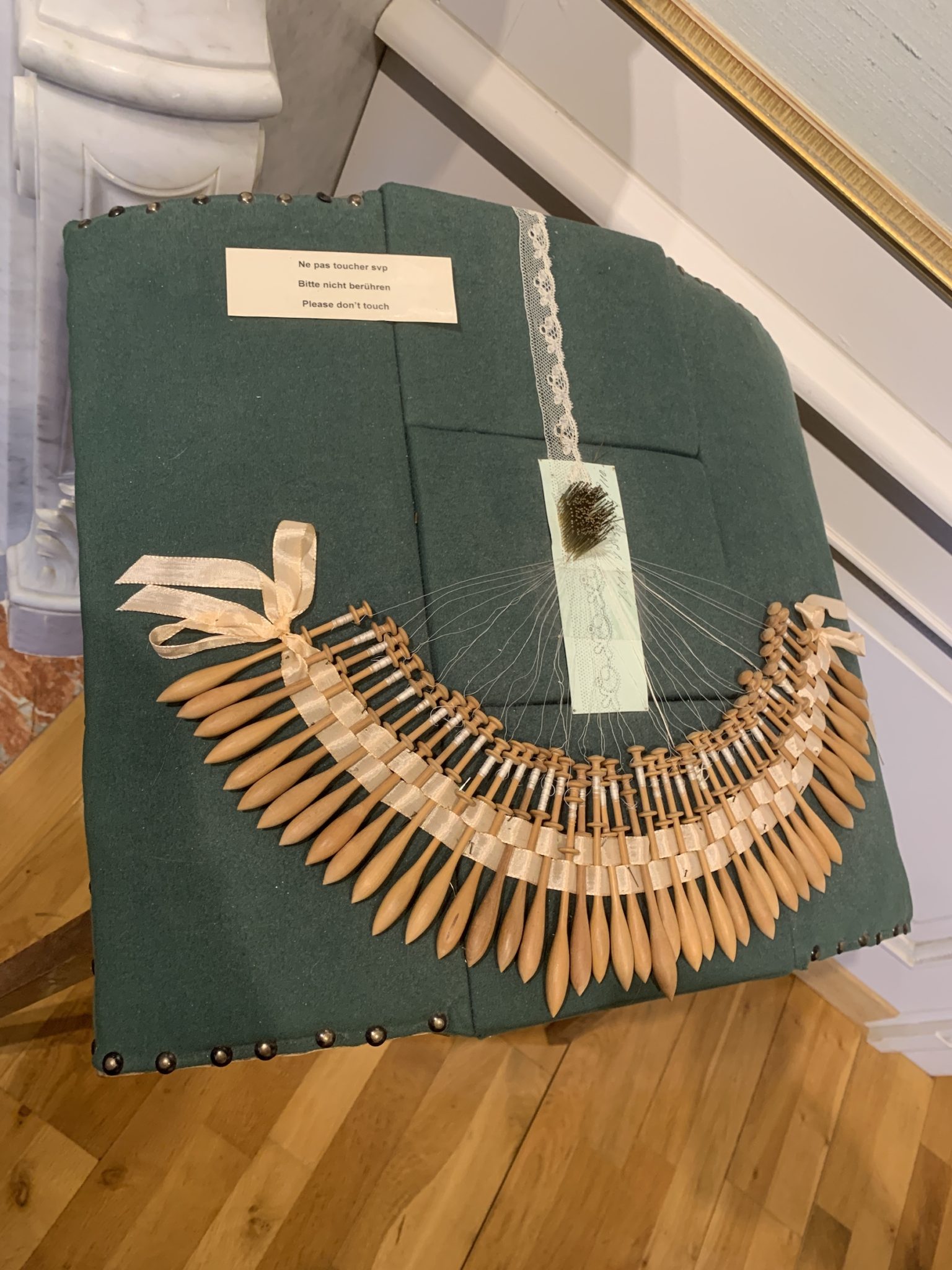
Besides watches and clocks, this museum also boasts a variety of automata as well a section which deals with the comprehension and measurement of time.




Before I forget: there is also a kind of museum/exhibition about the urban planning of and in LDcF.

Le must de La Chaux-de-Fonds is the MIH. You enter the museum via the brutalist concrete (the museum did win a price for concrete buildings) entrance. Inside however – although you are underground – you have the feeling of a spacious and comfortable atmosphere.
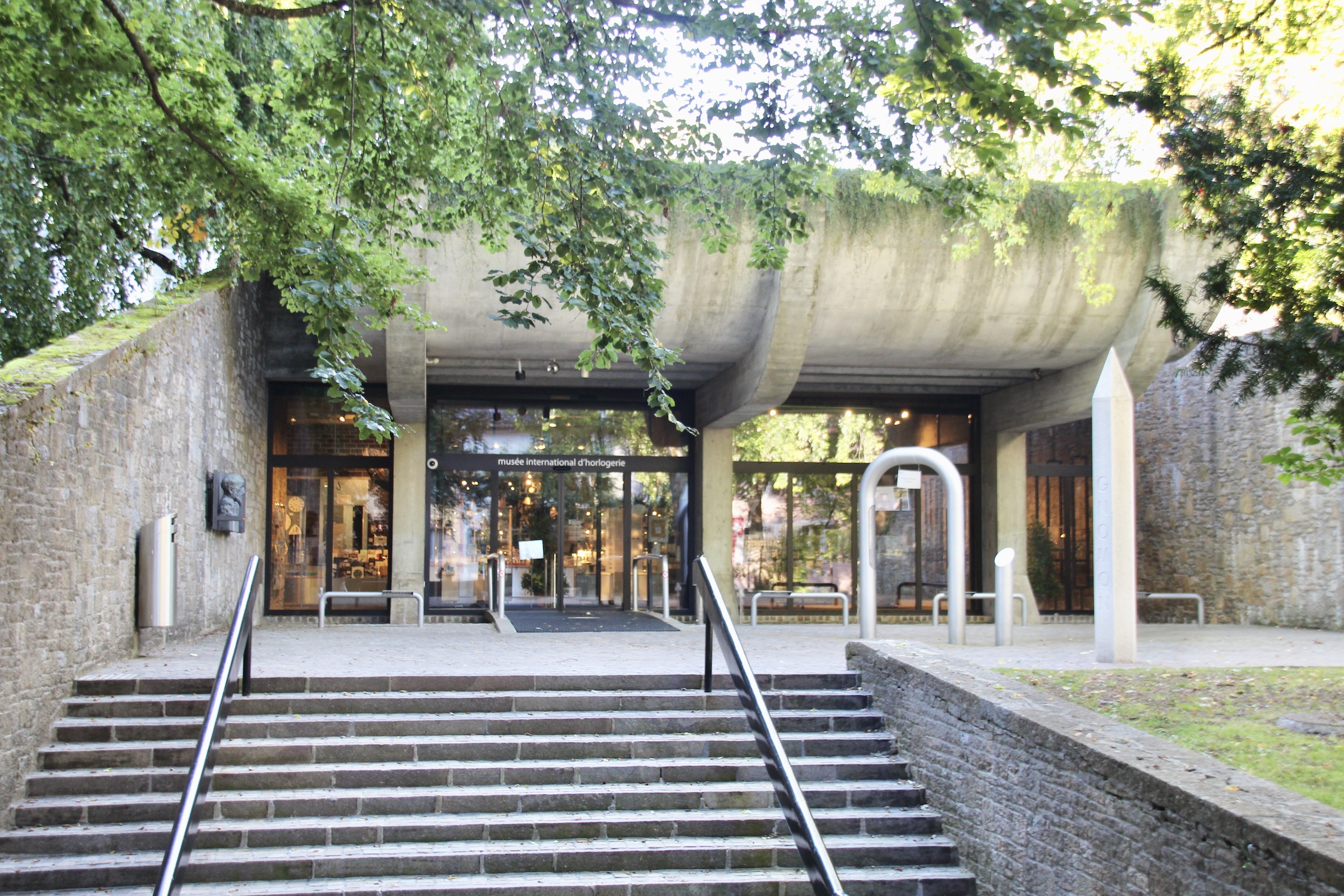

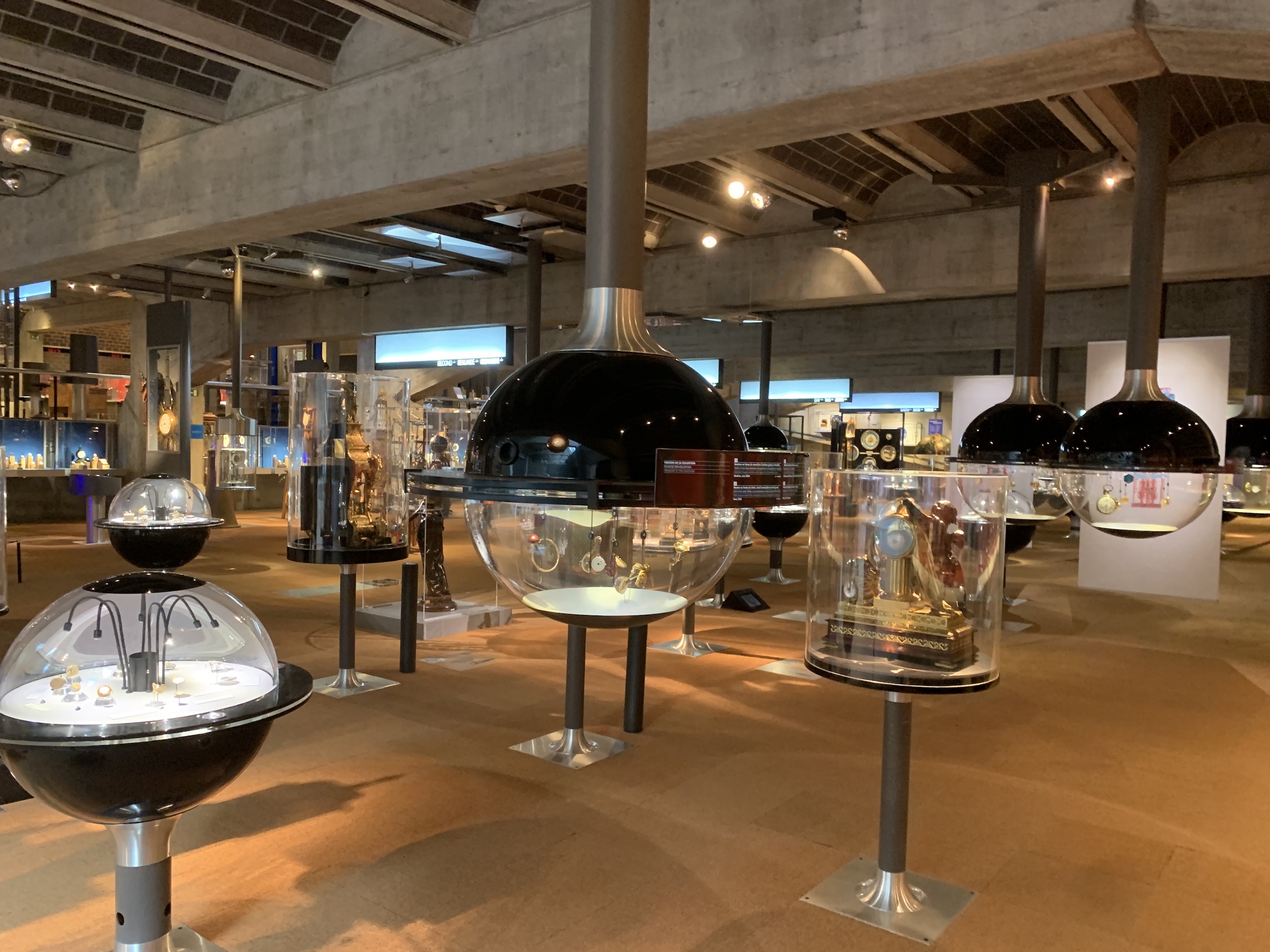
The number of exhibits is almost incomprehensible.
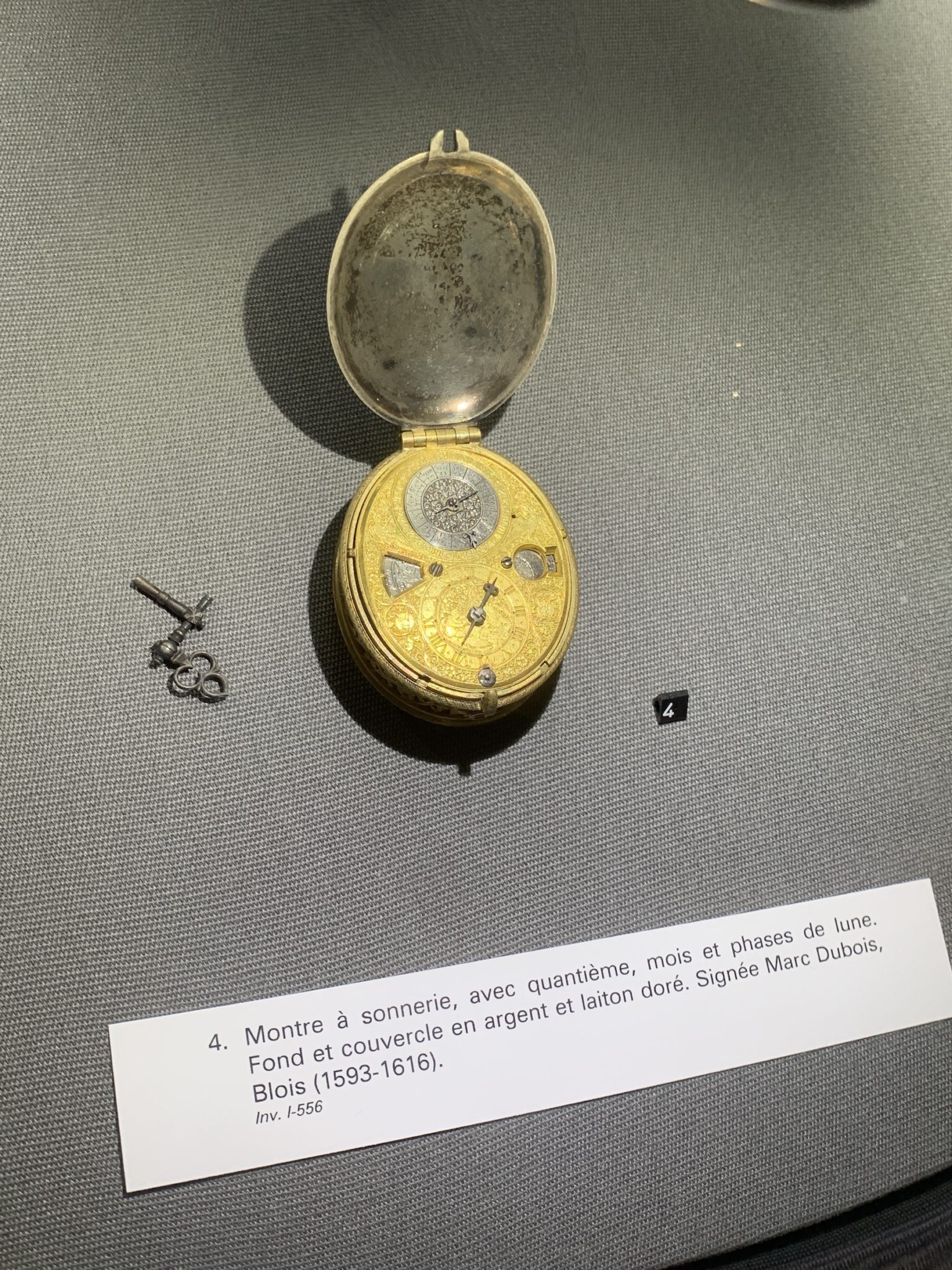
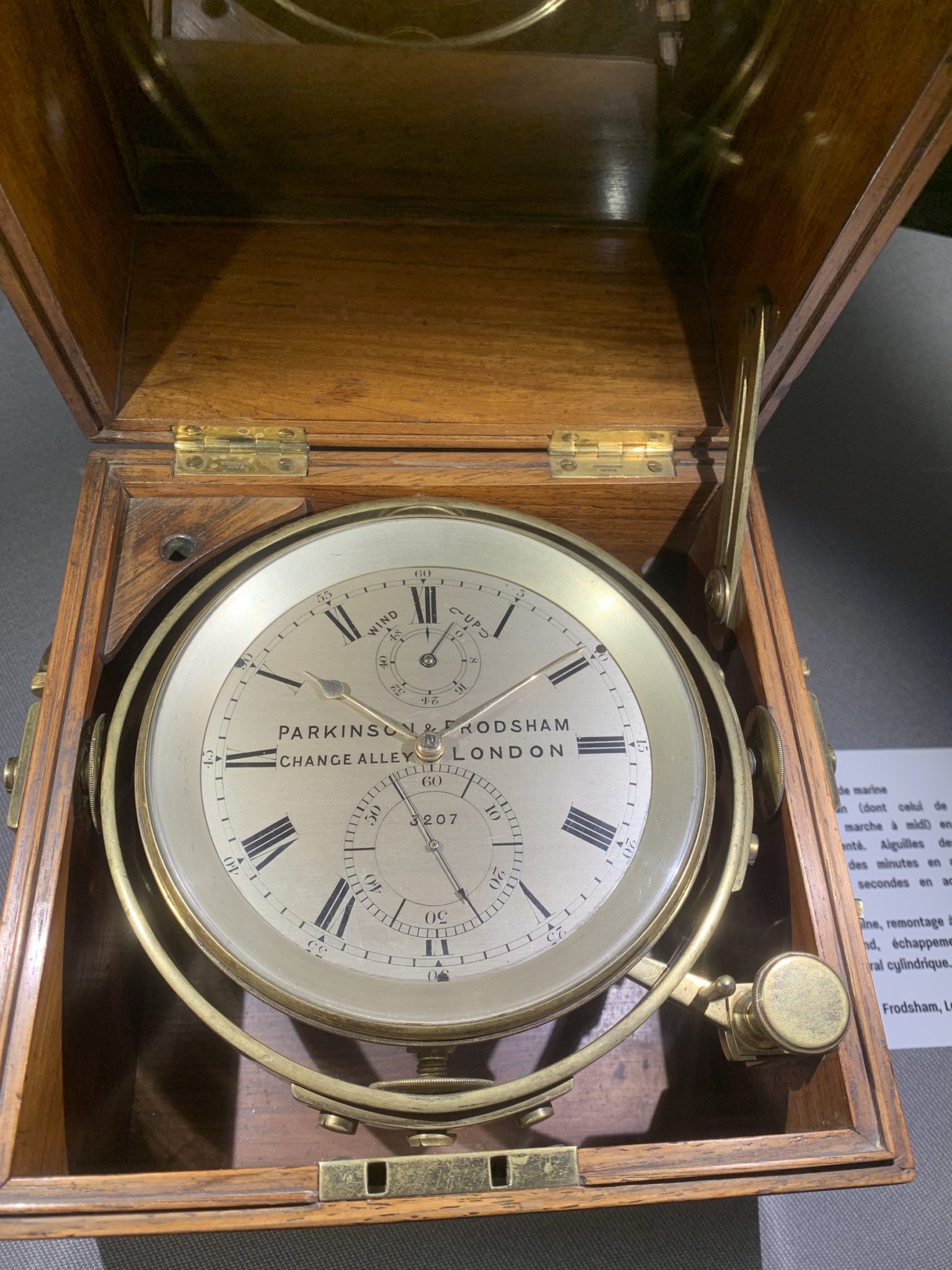
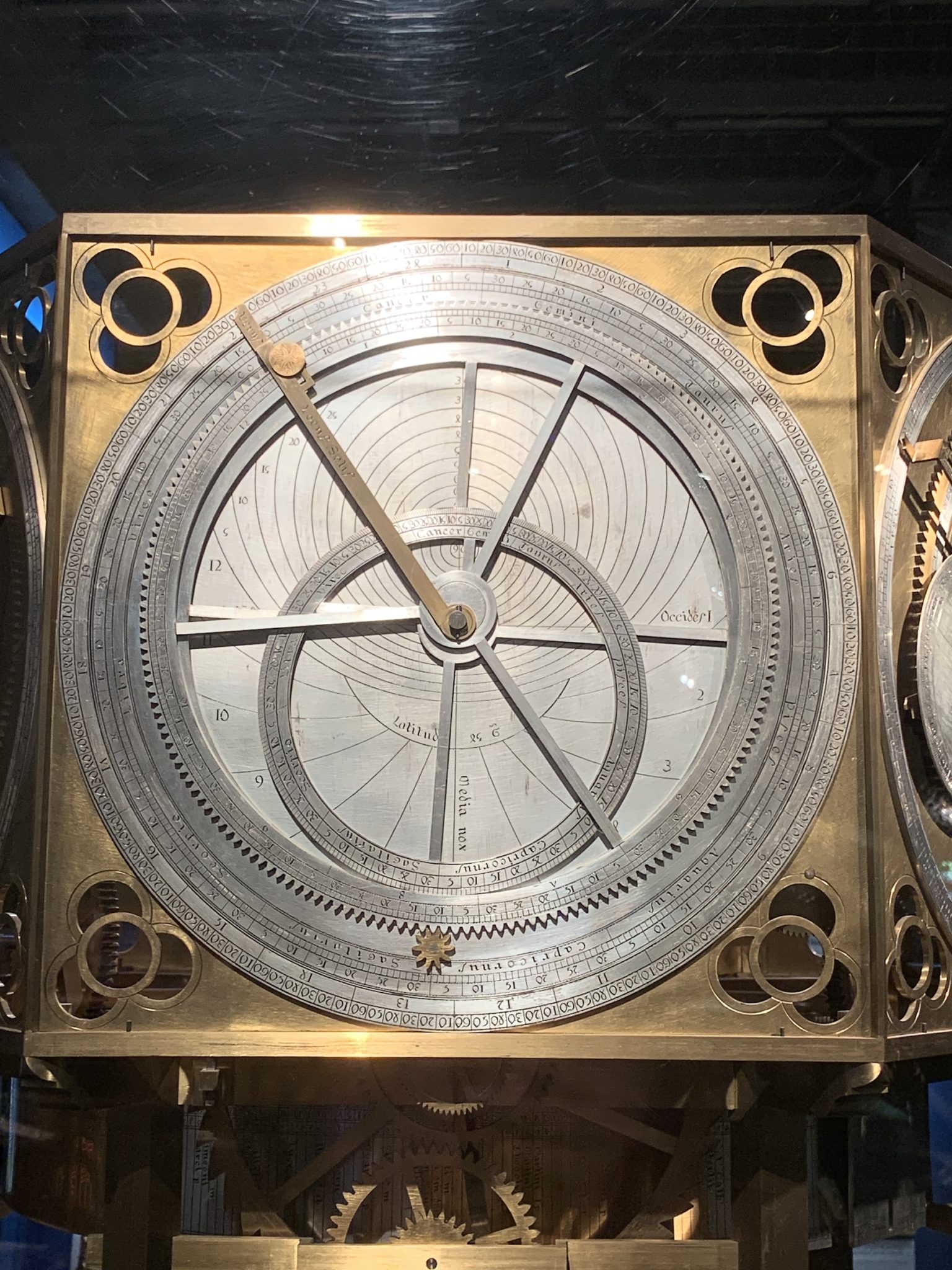
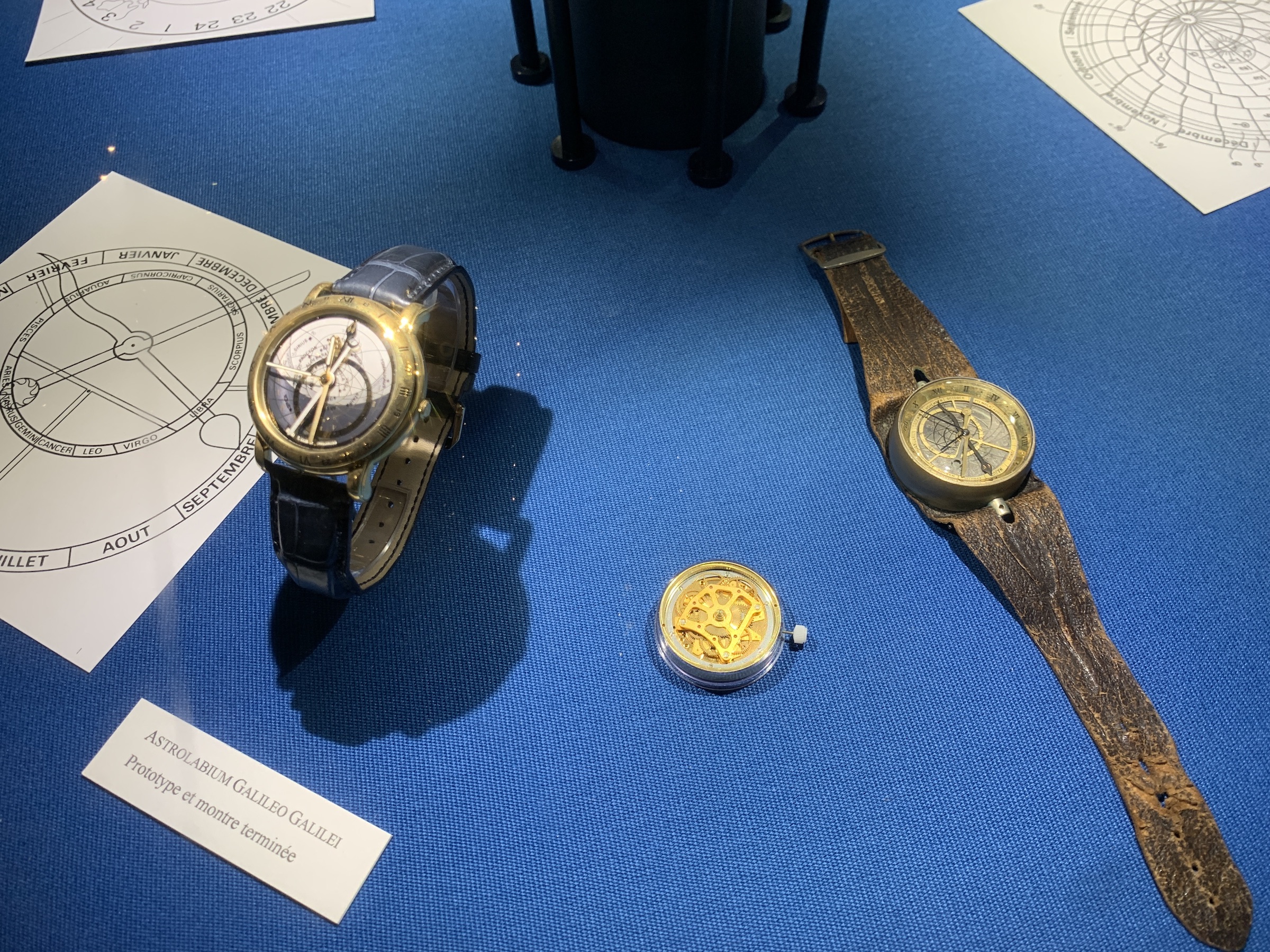
Marking dials with nearly invisible small brand names / trademarks is much older than you may have thought.
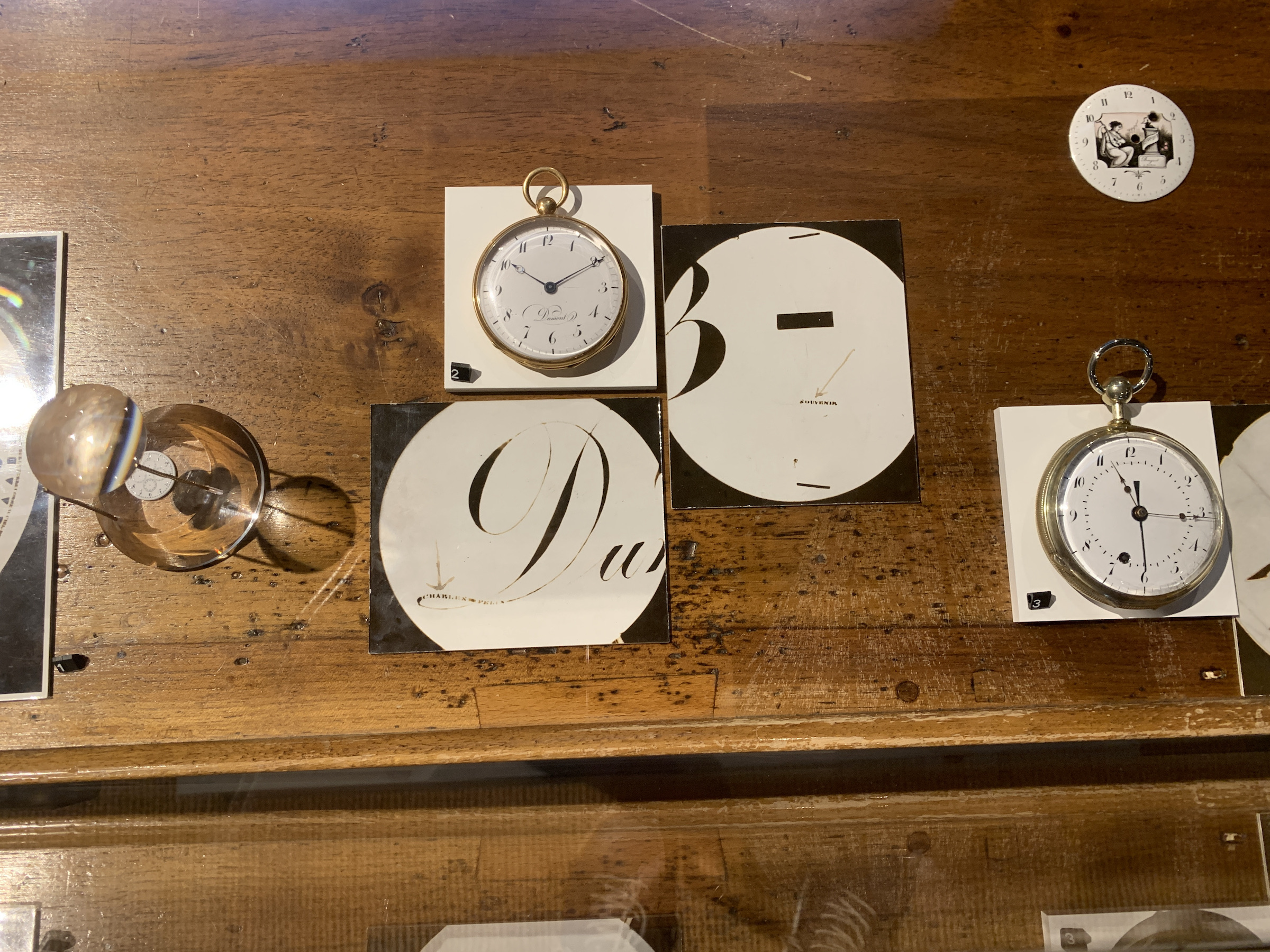
The «Türler Clock», the most complicated clock at it’s time (1995) was commissioned by Franz Türler, developed by Ludwig Oechslin and build by Oechslin and his former mentor Jörg Spöring
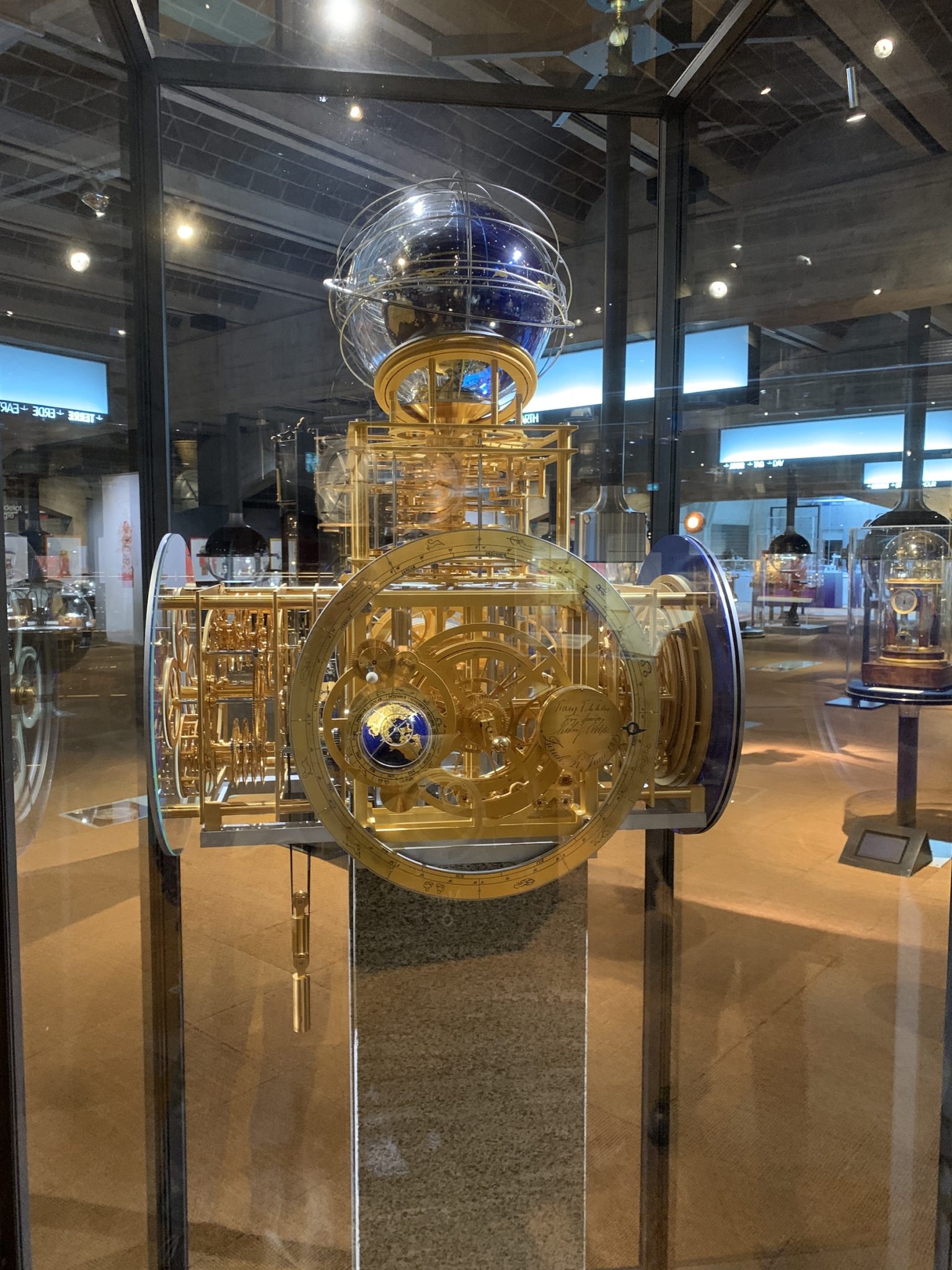

Although the MIH is underground it cites the world heritage architecture by providing a bright atelier for the restaurateurs and watchmakers (which is separated from the public part of the museum only by a glass window).
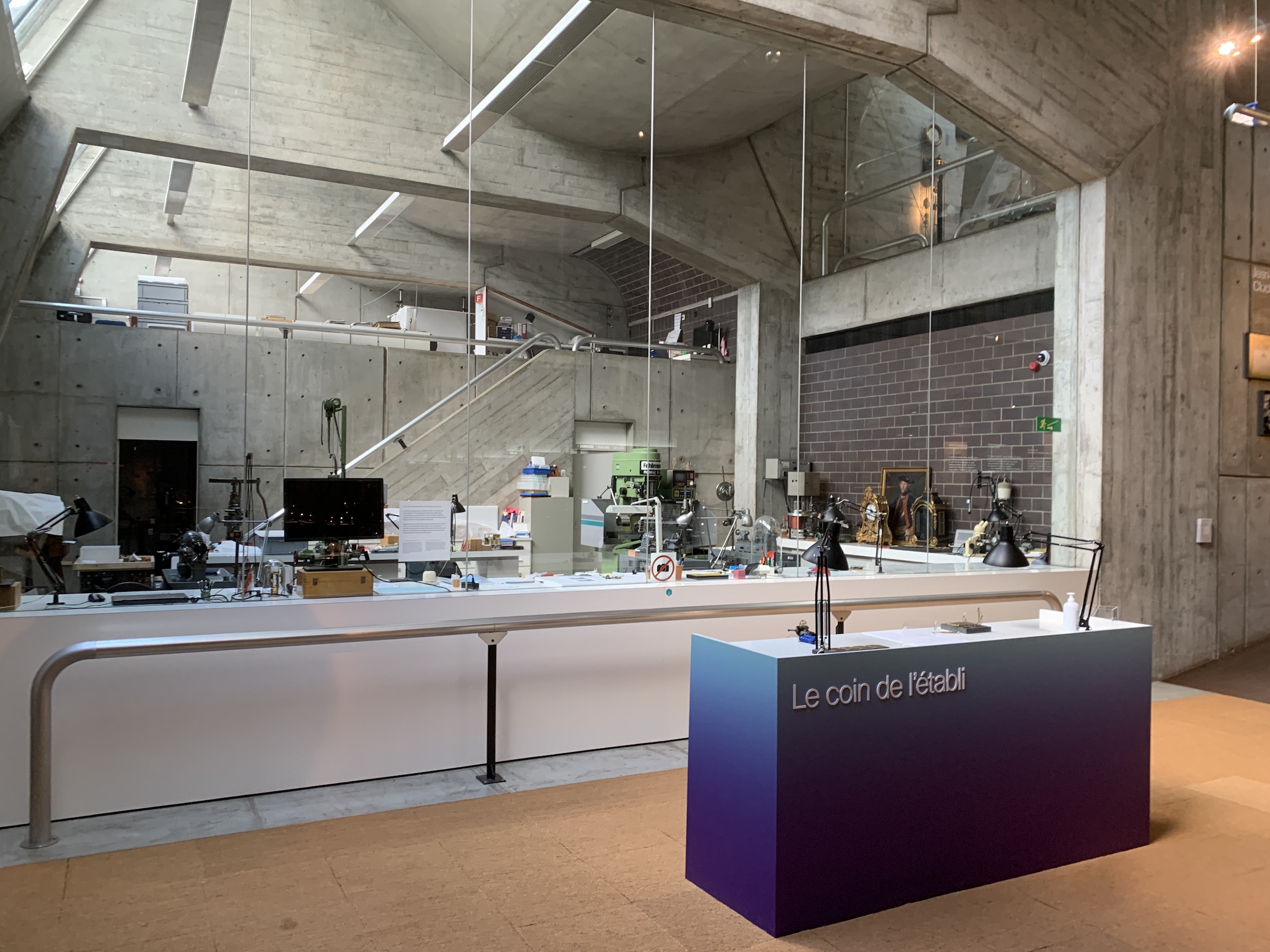
This article was brought to you by the (Fifth Wrist) men and the time.
Thank you for accompanying us on this journey!


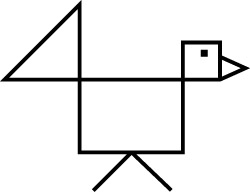
Leave a Reply
You must be logged in to post a comment.